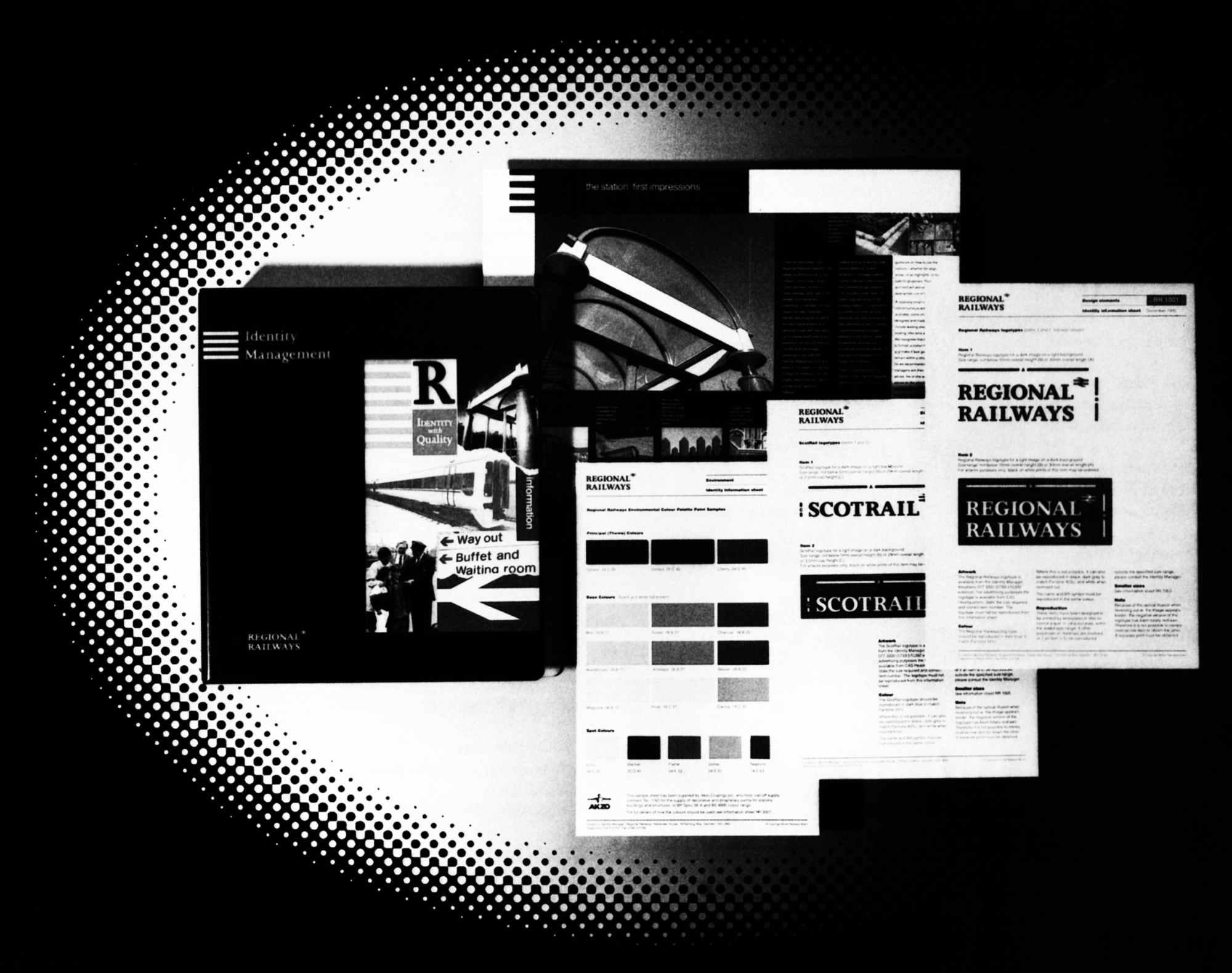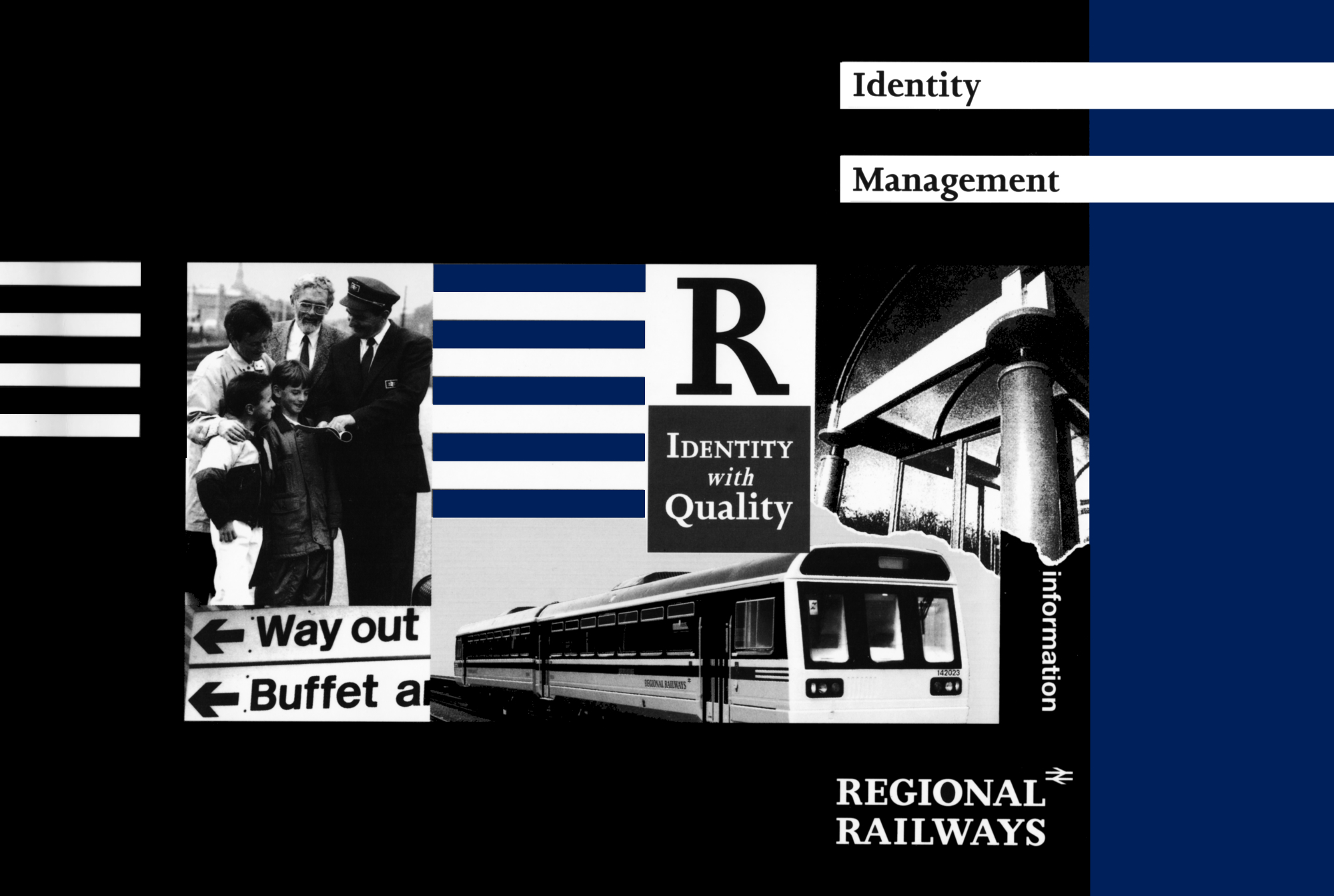 Regional Railways
Regional Railways
Gordon Pettitt
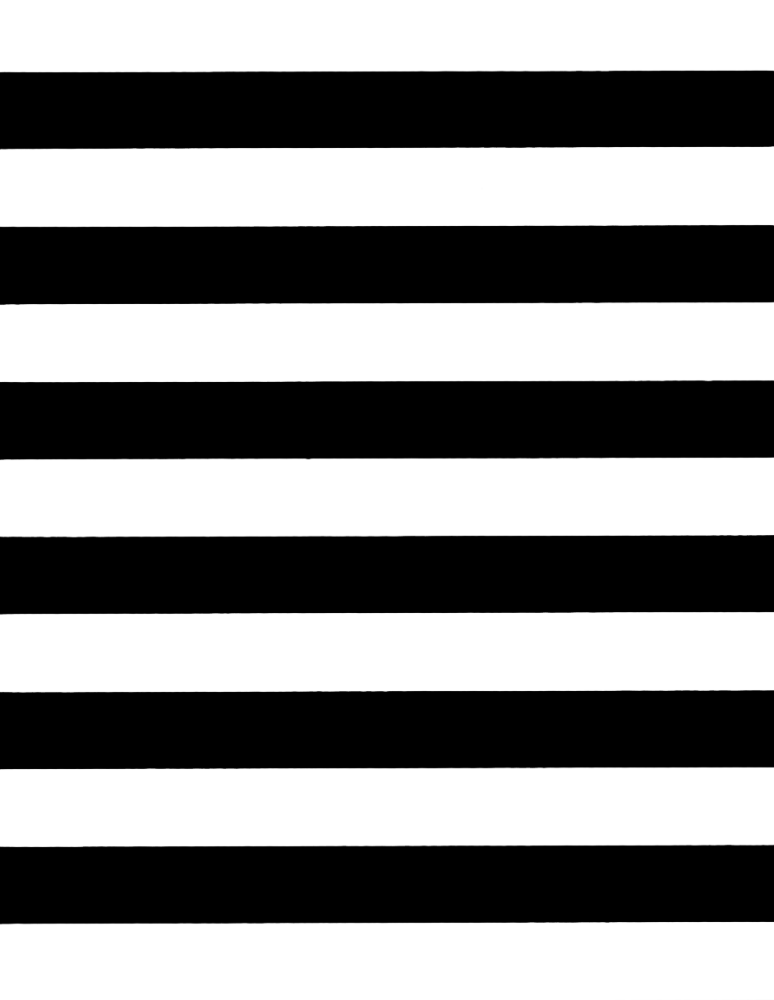

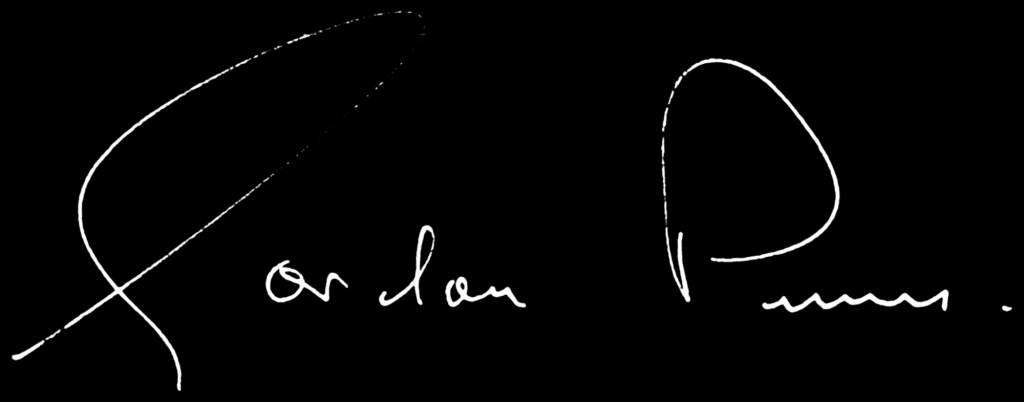
Gordon Pettitt
On 3 December 1990 one of the most fundamental reorganisations within British Rail in recent years got under way. Provincial became Regional Railways. And Regional Railways means all Britain’s passenger services except Intercity and Network SouthEast.
The name is significant. It represents a ‘family’ of railways that are to be operated on a decentralised basis. Each member of the family will aim to provide a service of quality, tuned to meet the specific needs of a readily recognisable area of the country.
All these services will interconnect seamlessly right across England, Wales and Scotland. By April 1992 we shall have reorganised ourselves into five profit centres: ScotRail, North East, North West, Central, and South Wales & West.
The ‘seamlessness’ of the operation will be represented by a new, strong but sympathetic corporate identity scheme. It will provide the ‘family likeness’. At the same time, it is flexible enough to enable staff and public alike to detect a degree of individuality, as in all families. This is particularly true in the case of the Passenger Transport Executives (PTEs) which make such a contribution to the network and plan even greater investment in the near future.
The corporate identity is a theme with variations, but the variations are pre-ordained so as to create a coherent whole.
A large number of people within the organisation have contributed their ideas. The actual scheme, the core of which is contained within the Identity Management binder, is the work of professionals with great experience in this particular field. But they have been building, and continue to build, on a foundation of your ideas. It is very much your corporate identity.
We need to put it in place quickly in order to reap the rewards of nationwide recognition. New stations and trains, and all publications due for reprinting will take on the family characteristics straight away. Existing stations and rolling stock will acquire them as and when they need refurbishing. This will help to control costs and provide us with time to raise the level of our performance. Ideally, our path towards a higher quality service and the public’s path towards greater recognition of us and what we have to offer will coincide within the next two or three years. And that will benefit us all.
Gordon Pettitt, Managing Director
Does a Corporate Identity really matter?
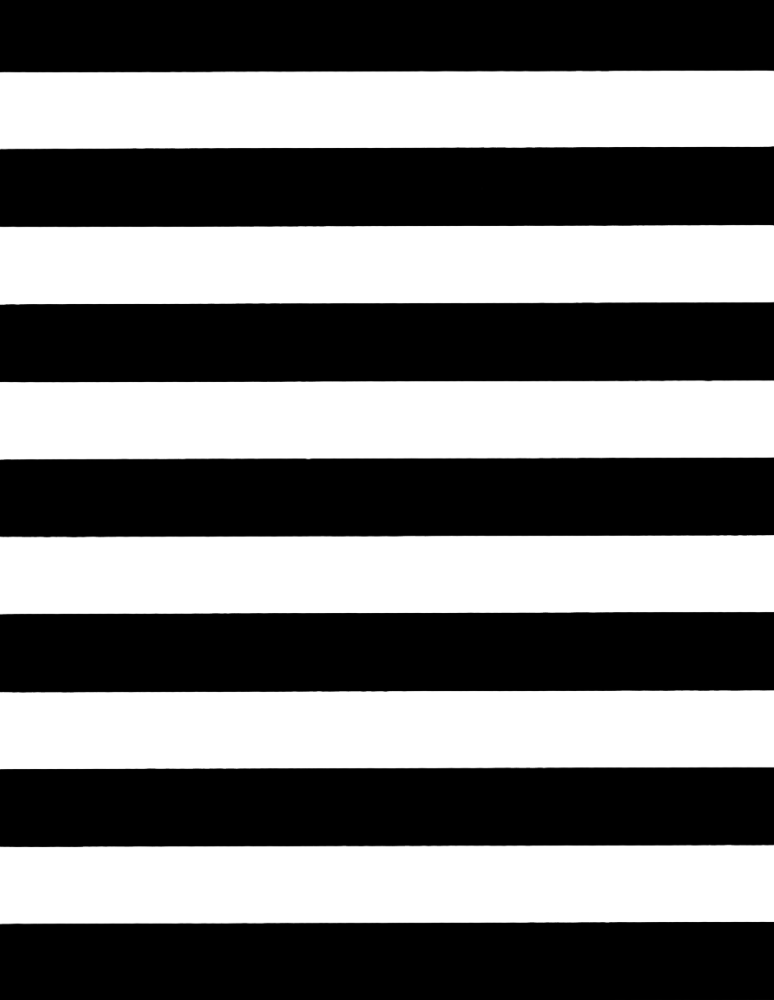
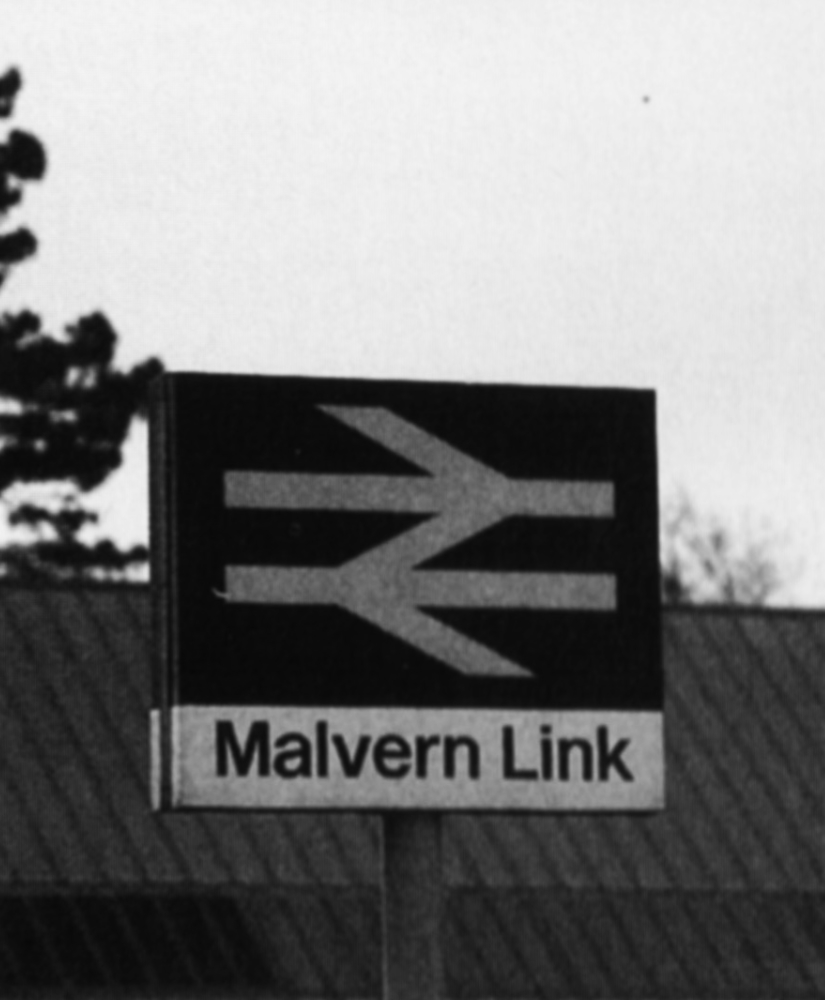
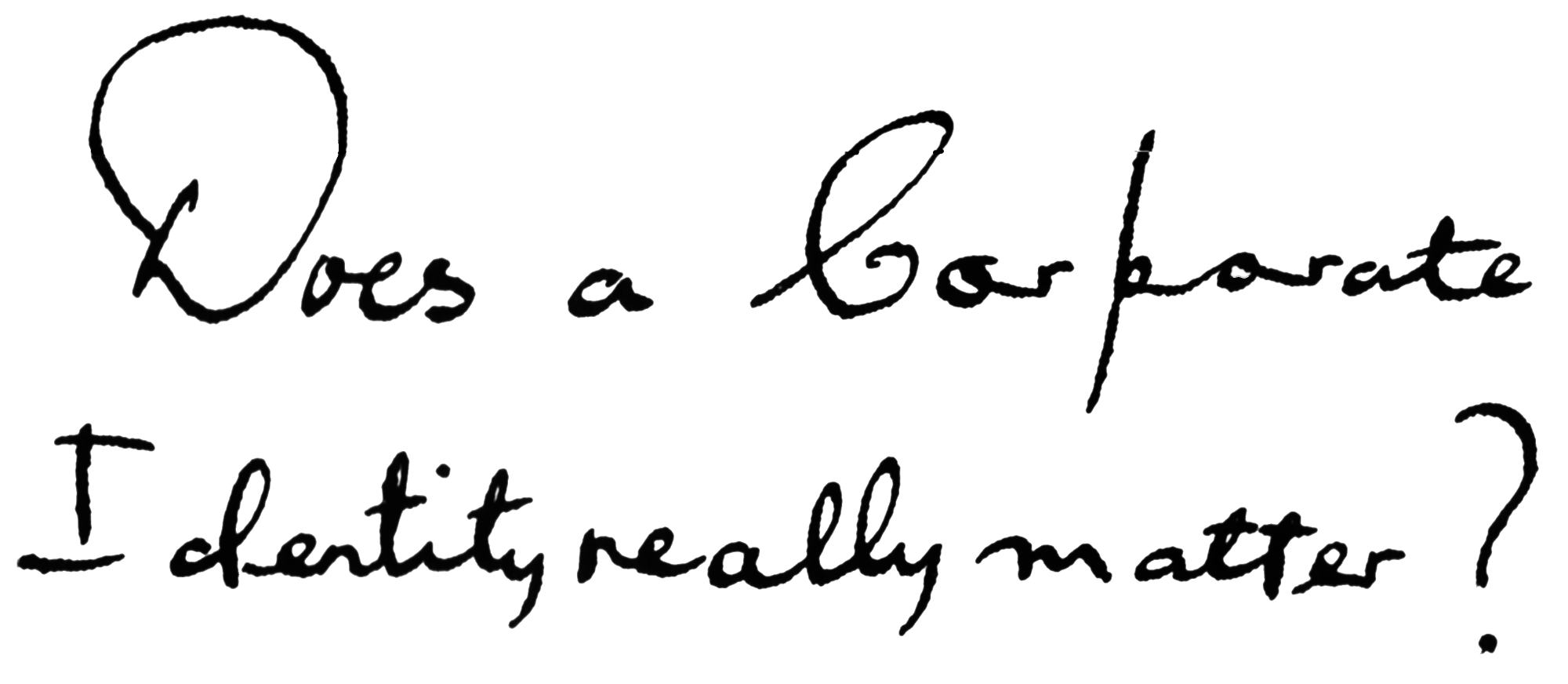
Does a Corporate Identity really matter?
Making Regional Railways into the kind of service that we'd all like to use.
Yes it does, for several important reasons. First and foremost, you, the people who make Regional Railways what it is and what it will become, need to know who and what you are working for. You need to be able to recognise everything and everyone that is part of the business if you are genuinely to feel a member of the team.
Once the team has succeeded in making Regional Railways into the kind of service that we’d all like to use – one that customers can rely on, that takes them where they want to go, in comfort and on time – the corporate identity will have become much more than a code for identifying different bits of the business. It will have become the outward visible sign of an organisation that gives its customers what they want, a service that its workforce will have built together and will be proud to live up to.
By then the corporate identity will be doing a parallel and equally important job in the eyes of the customers. It will have become a symbol of all the virtues that together add up to the “brand”: competence, reliability, high standards of care and maintenance, and friendly service. We want our customers to feel a sense of confidence whenever they recognise any part of the Regional Railways corporate identity.
A corporate identity is a two-edged sword. Its message is: “We are the people who are responsible for this service that you are receiving”. And it says that, whether the service is good or bad. We have to ensure that at all times and in all circumstances it is good or we damage the customers’ view of us and, ultimately, our business.
How does Regional Railways fit into BR?

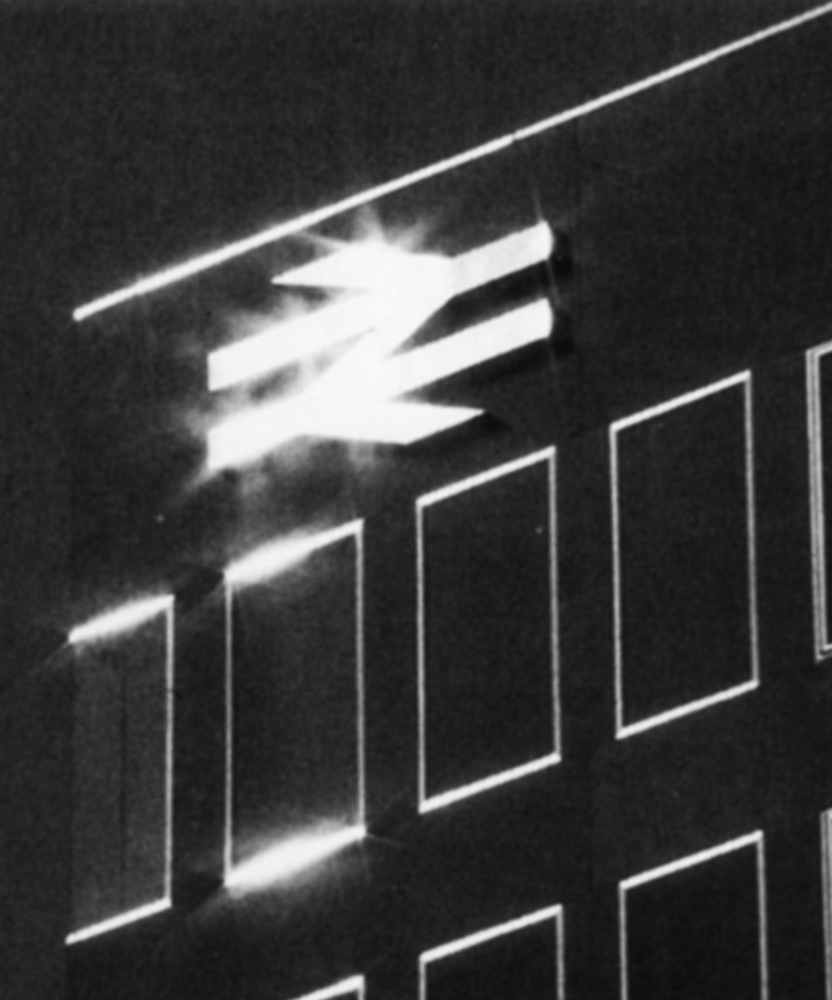
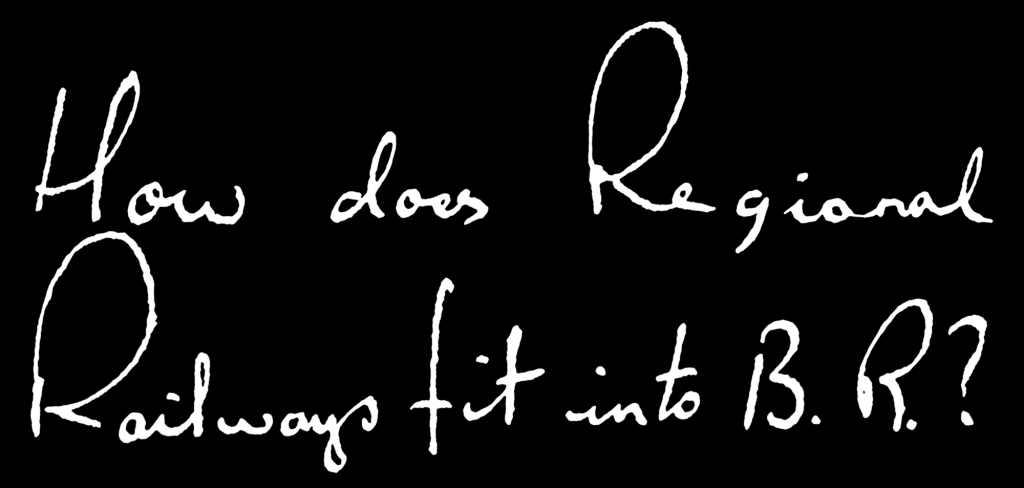
How does Regional Railways fit into B.R.?
This is a service that is part of British Rail as a whole.
As you will see from the new Regional Railways logotype, endorsed as it is by the British Rail symbol, this is a service that is part of British Rail as a whole. A major part.
This is the reason why you will find that some of the elements of your new corporate identity are the same as those on Intercity and Network SouthEast. The signing system continues to use Rail Alphabet. The Helvetica typeface continues on all material that provides the customer with information about the how, why and where of getting from A to B.
There are two reasons for this. The first is that we believe these particular elements do their job so well that neither we, nor any other rail network anywhere else in the world, has been able to improve upon them. The second is that the customer who buys rail travel wants to be able to move throughout the British network of railways without effort.
They might start their journey on Regional Railways, continue on Intercity and end the journey on Network SouthEast. So on the one hand, each of these businesses needs to be instantly recognisable; on the other, the customer needs clear and unambiguous directions so as to be able to move fluently from one to the next.
A universal, readily recognisable and uncluttered information system does more to smooth the customer’s path than anything else.
Managing the new Identity

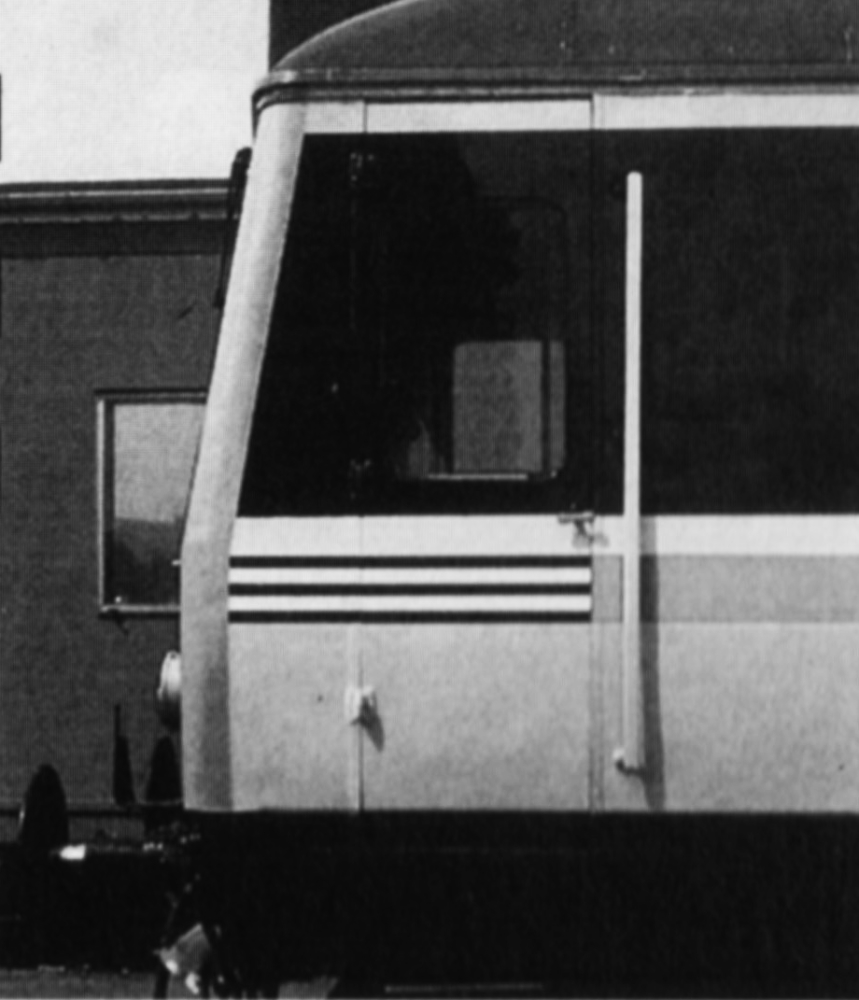
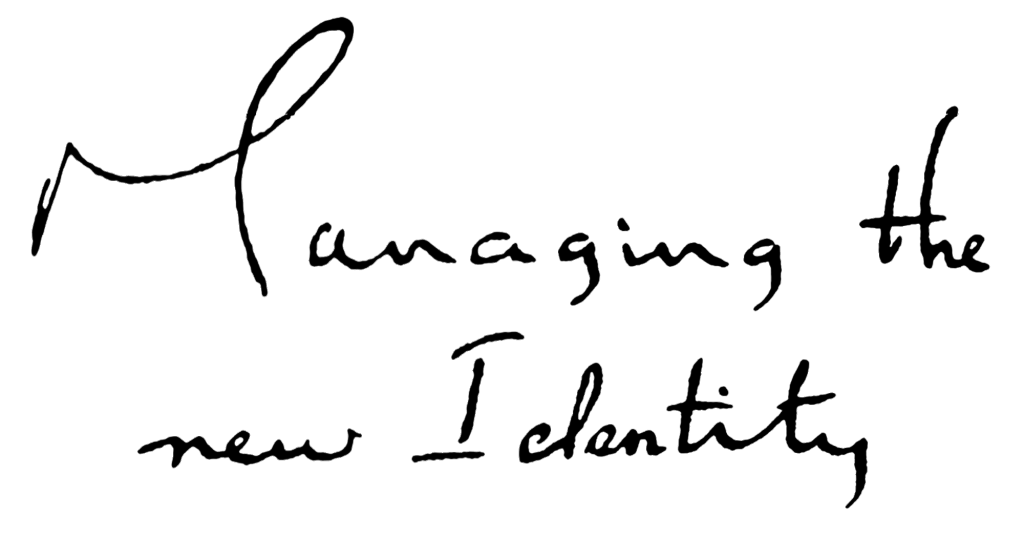
Managing the new Identity
Getting things right first time is the goal.
The Regional Railways corporate identity scheme tends quite deliberately towards restraint and understatement, a hallmark of quality in any walk of life. It accommodates local architectural and environmental characteristics. But make no mistake, flexibility is built into the scheme. The scheme itself must be applied rigorously if it is to achieve its proper impact.
And that means paying attention to detail, whether it is a question of using the right local material to restore a station building or simply developing a reputation for being a network whose stations are always swept clean, whose facilities always work.
Getting those things right requires constant effort but it also develops a real sense of satisfaction in everyone involved. It’s a little like putting on a play, but a play with a lifetime of opening nights and a vast audience comprising not only our customers but also other people within the business. Getting things ‘right on the night’ is the goal. To achieve it will be tremendously rewarding, on a personal as well as a business level.
The core of the new Regional Railways corporate identity scheme is contained in the Identity Management binder, a copy of which should be accessible to anyone who has any responsibility for implementing any part of the identity. It contains individual information sheets, each dealing with one specific aspect of the identity, or one part of one specific aspect. Because a corporate identity is never static, the information sheets are updated and added to as the need arises.
Both the binder and this brochure contain lists of contacts who will be able to assist with any queries or problems relating to particular aspects of the identity. Queries on general aspects of the identity should go to the Identity Manager who is also on the list of contacts.
Our aim is to provide, with the aid of the Identity Management Binder and this brochure, totally clear and unambiguous instructions on how to put the corporate identity into practice. And putting it into practice is a matter of obligation. It is not an option.
design elements

- Logotypes
- Fleximark
- House colours
- Typeface
- House style
The new name, Regional Railways, says precisely what the business is. The logotype is a combination of the name – in a bold, serifed, upper case development of the Joanna typeface – and the British Rail symbol. The close association between the two, the size and position of the one vis-a-vis the other, makes a clear statement about the relationship between them. Regional Railways is in the driving seat but is proud to associate itself with all the best qualities of its parent organisation.
ScotRail is the only one of the five Regional Railways profit centres that has a separate logotype. The reason is primarily one of geography. It operates in an area that is virtually self-contained, with relatively little traffic between it and neighbouring regions. ScotRail has built up a good reputation over many years and its name has acquired excellent connotations in the eyes of its customers. It would not have been sensible to abandon this asset. So, putting it simply, Regional Railways trades as “Regional Railways” in England and Wales, and “ScotRail” in Scotland.
The house colours remain, as before, dark blue and grey but the colours will be richer and have more depth. The designers have ensured that a particular colour will appear the same on large surface areas, such as rolling stock, as on small items, such as printed documents. Colours appear paler on large areas so adjustments have to be made according to the scale of the painted or printed object.
The fleximark (the band of horizontal lines) is an innovation that will, little by little, stamp itself indelibly on the mind of the customer. It is a flexible ‘linking device’ (not a symbol) that will appear everywhere: on the rolling stock, the stationery, the signs and the promotional material. So it is ‘flexible’ in terms of context, and in terms of size and position.
It is, however, deceptive. Like the Regional Railways logotype, it has to be reproduced with absolute accuracy, according to the detailed instructions contained in the Identity Management binder, if it is not to become distorted and thereby lose its character and power.
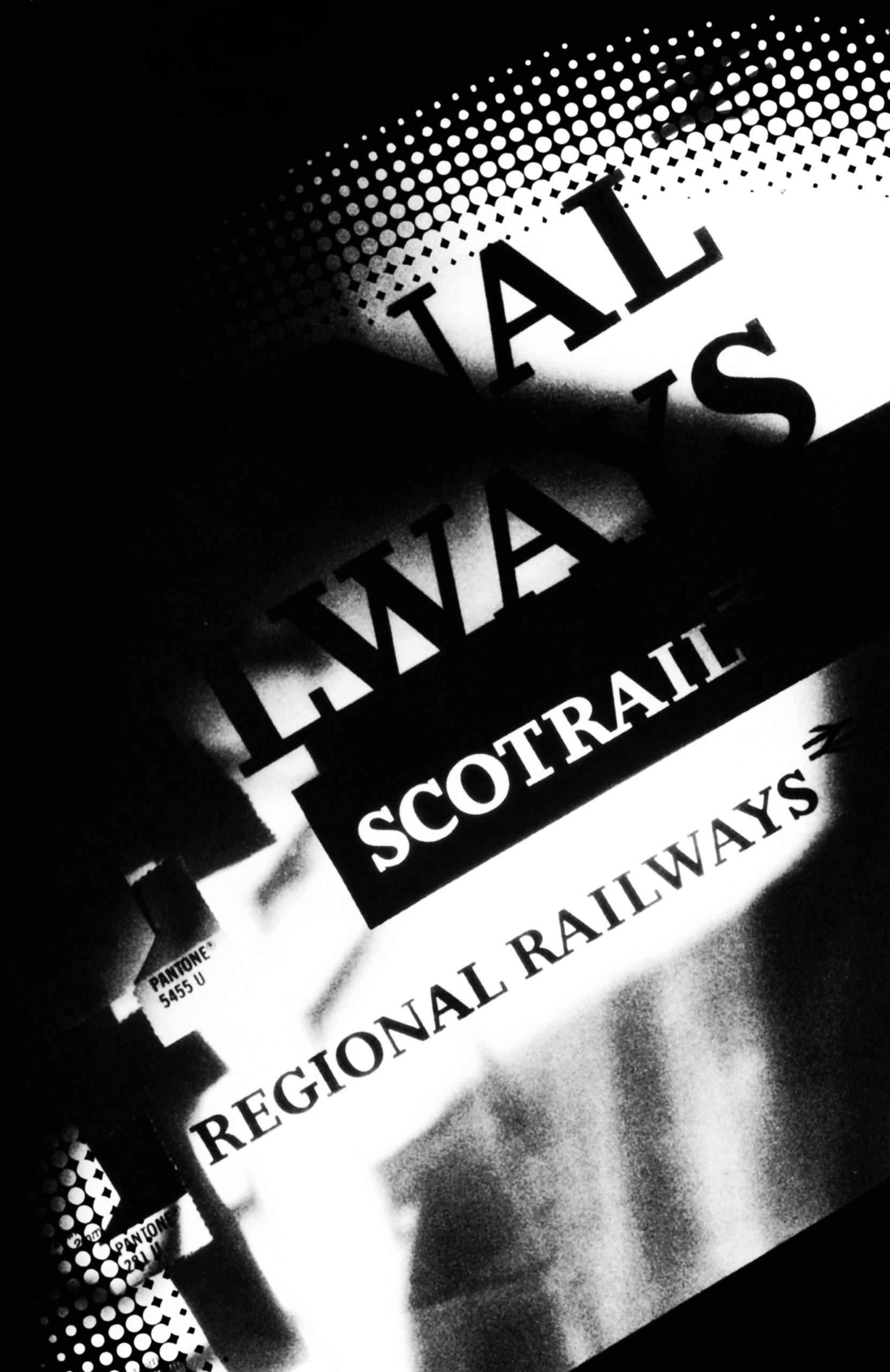
design elements – logotype

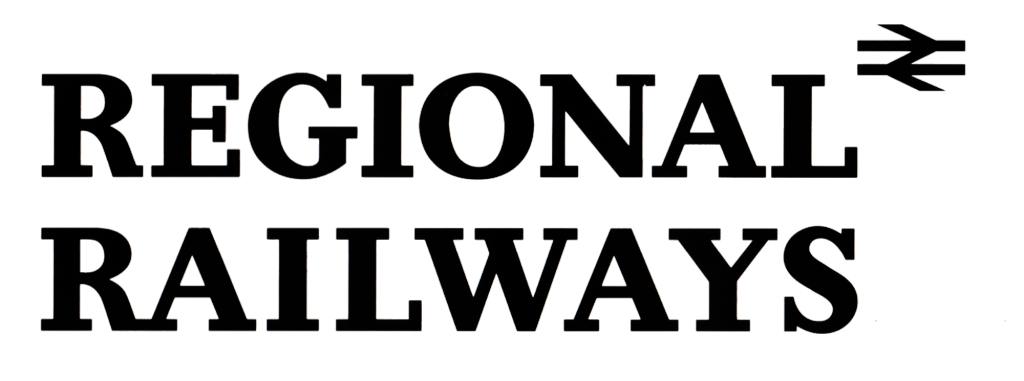
The logotype has
been specifically
drawn and spaced
so must always be
reproduced from
artwork.

One line version
is available where
space does not
permit the use of
the two line
version.
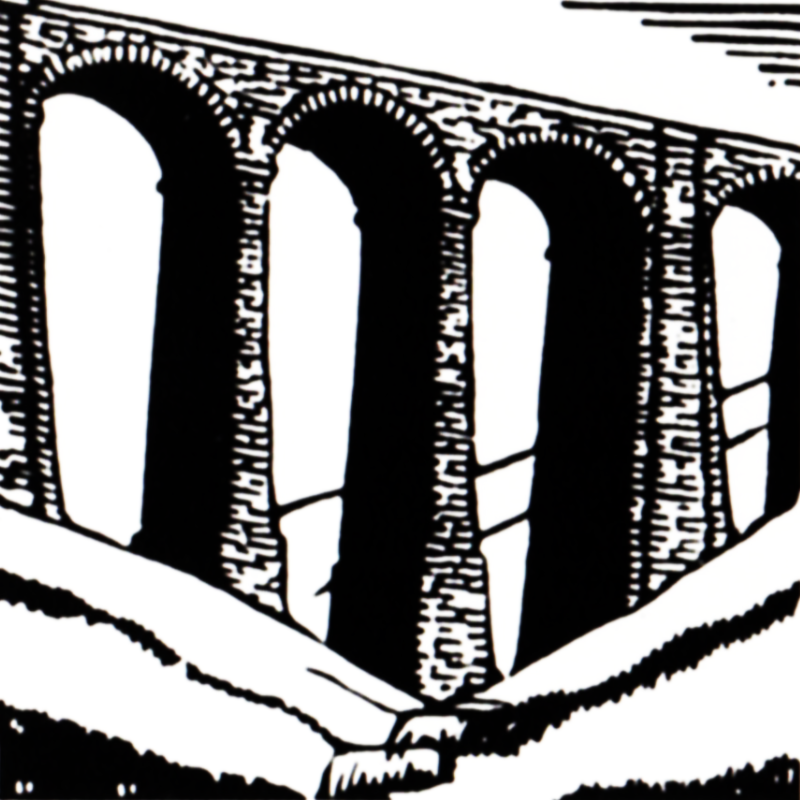
Special designed
devices will be created
to promote particular
lines as products in
their own right. The
image chosen for each
approved line is based
on the most widely-
known feature
associated with the
route. The Settle-
Carlisle Line is one
such approved line
image.
Pantone 299
Pantone 281
Pantone 5455
Pantone 425
The colours
associated with
Regional Railways
are dark blue, dark
grey, silver grey
and light blue
design elements – scotrail

The logotype may
be reproduced in
dark blue, dark
grey, black or white
when reversed out.
When the logotype
is produced in
negative form a
different artwork
must be used
which has been
adjusted to give
the same visual
weight when
reversed out.


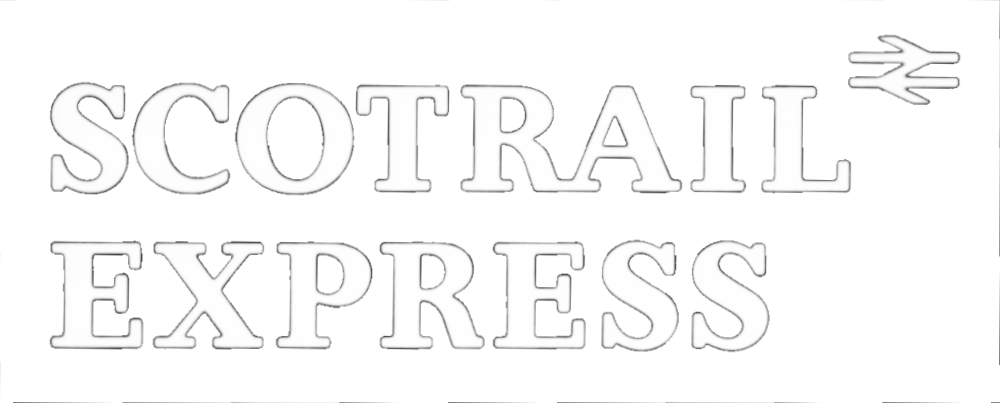
ScotRail Express is
the only named
product which has
its own logotype.
The ‘fleximark’
linking device
used on all
aspects of the
business always
bleeds off to the
left or right.
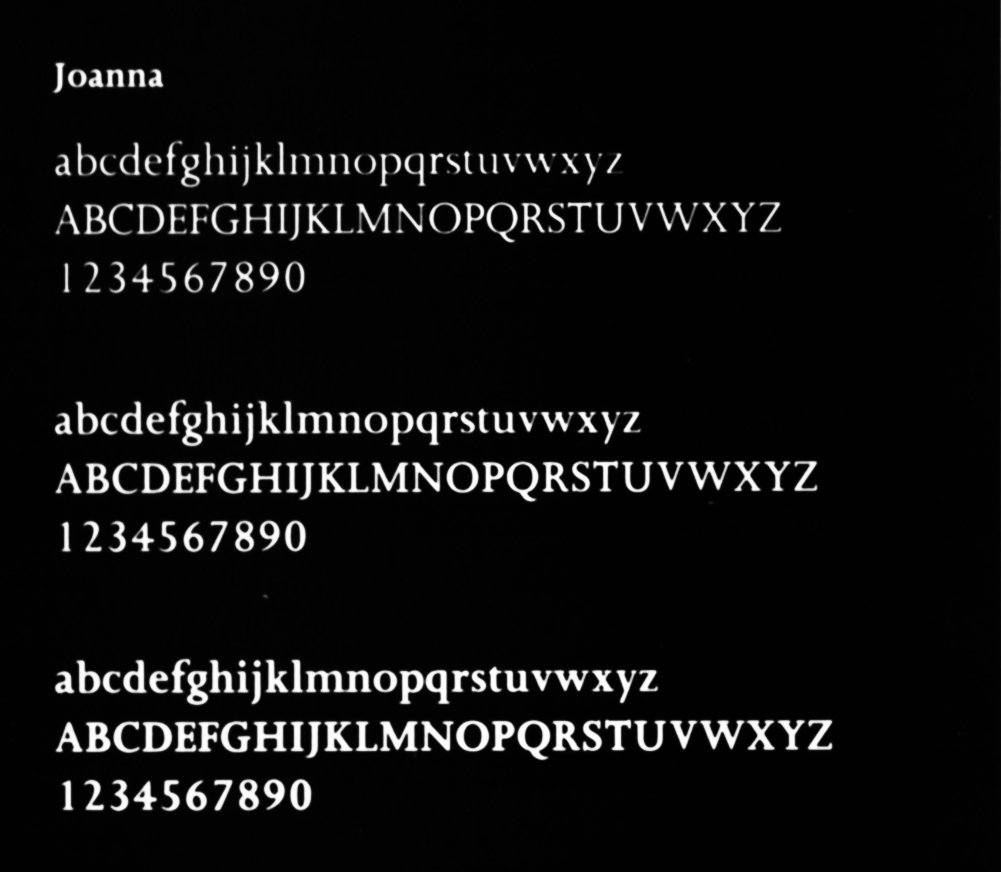

Joanna is the
chosen promotional
typeface for
Regional Railways.
Helvetica is used
for information.
Design elements – a brief summary

Design elements – a brief summary

Regional Railways logotype
The Regional Railways logotype appears in two formats; the ‘stacked’ version or the ‘one-line’ version. The stacked version should be used wherever possible, with the alternative one-line version used only in situations where space is at a premium or where otherwise specified, as on rolling stock.
To counter the differences caused by optical illusion, separate artwork has been produced for positive and negative applications and also for use at very small sizes on items such as pens. It is important to use the correct artwork for each particular case.
The BR symbol is an integral part of our logotype and the size and positioning is critical. It should always be reproduced in the same colour as the lettering.
ScotRail logotype
This is used instead of the Regional Railways logotype in Scotland. As with the Regional Railways logotype, ScotRail has different artworks for positive and negative applications and for small sizes.
ScotRail Express
The only named product of Regional Railways, ScotRail Express refers to the Class 158 services in Scotland. It has its own logotype which follows the same principles as the Regional Railways version.
Fleximark
In formal usage the Regional Railways linking device appears as horizontal dark blue lines on a white background but, as the name suggests, it is essentially a flexible mark which can appear in different colours, sizes and lengths depending on the application and the creative use of the fleximark on special promotions is positively encouraged.
There are, however, strict guidelines for how to reproduce the fleximark in all cases, including a negative version to compensate for the optical illusion of visual inequality when reversed out of dark colours.
The one inviolate rule is that the fleximark should always abut to the edge of something – as illustrated in this brochure.
House colours
The colours chosen for Regional Railways are dark blue, light blue, white, silver grey and dark grey. The dark blue is the main and most widely used colour, often complemented by silver grey particularly on stationery items like folders. Light blue is generally used as a highlight colour, as on the train livery.
Typefaces
Standard typefaces help to increase awareness of a ‘family likeness’. For promotional print such as posters and leaflets the Joanna typeface has been selected. The need for variety is satisfied by the number of styles available within the typeface.
Informational print encompasses timetables, departure posters and ‘useful information’ posters. To help the customer differentiate between promotion and information the Helvetica family of typefaces has been retained by Regional Railways for informational uses, as it is very easy to read.
Rail Alphabet is the corporate typeface specifically designed for signing and Regional Railways will maintain its usage for that purpose.
Line images
Certain lines have the potential to be promoted as a product in their own right as well as a means for moving passengers from A to B. Line images are the graphic devices used to promote such lines, of which the Settle-Carlisle Line is a perfect example. The image will be based on the most widely-known feature associated with the route and will be produced in a square, ‘woodcut’ style that it suitable for both print and heritage signing applications. An appropriate dark background colour will be selected and, once chosen, this colour will remain an integral part of the line image.
The line image can be used on promotional print, gifts, pocket timetables and heritage signing following the rules laid down in the Identity Management Binder.
Any proposed line image must first be approved by the Director, Planning & Marketing before the design solution is progressed through the Identity Working Group on Print. All subsequent usage must then be approved by the appropriate profit centre Marketing Manager. The image will be copyright Regional Railways.
Contacts
A list of contacts for queries on design elements, and for sources of prints of the artworks for approved purposes, can be found in the Contacts Section at the end of this brochure. General comments and queries about the Identity Strategy should be directed through the nominated profit centre contact or the Identity Manager.
rolling stock

- Liveries
- External markings
- Interiors
- Design details
- Signs and notices
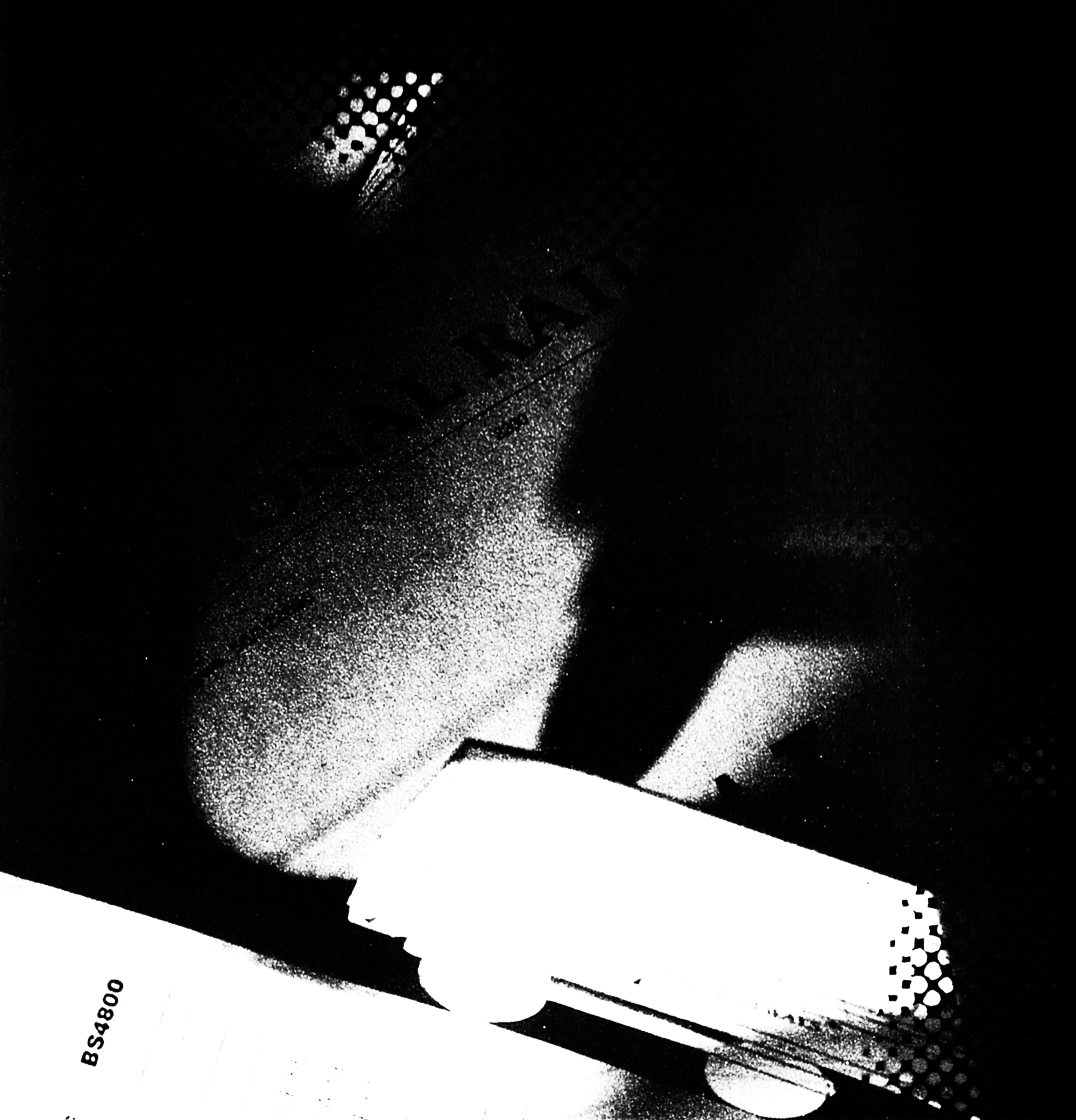
The livery of Regional Railways has been developed from that of Provincial. The existing livery is a good one and we are taking it one step further by enriching the colours and introducing a number of small but important refinements, such as the addition of the logotype to show who the operator is. Vehicles will be painted in the new livery only when due for repainting. Even so we shall achieve a consistent appearance in a relatively short time, without an enormous expenditure, simply because of the similarity between the current and the new liveries.
The livery designed specifically for the Class 158 vehicles will remain as it is. in other words as agreed before the Regional Railways identity strategy was developed.
The Passenger Transport Executives (PTEs) have developed, and promoted, very strong identities of their own over the years and won a high degree of recognition. While the new corporate identity makes it clear that Regional Railways takes responsibility for the operation of the service, the PTEs keep their individuality by applying the linear design of the new corporate identity in their own corporate colours. The livery for Centro (West Midlands PTE) rolling stock shows how well this works.
From the point of view of the customer, the interior is even more important than the exterior. It must be clean, comfortable and well-appointed with fixtures and fittings that are fit for the job and in good working order. The specially designed moquette (the cloth used to upholster the seating) is called ‘Spot’. It is based on the house colours so that the interior and the exterior create a harmonious whole. The same design could be applied to PTE rolling stock, using their own colours.
When the customers are aboard the train, it is important to provide them with useful information, such as a network map. Standard frames can be fitted to each carriage and local management can control what goes in them. The frames can also be used to house emotive posters illustrating interesting places within easy reach of the rail network. This is a good way of adding visual interest to the interior.
rolling stock – exteriors

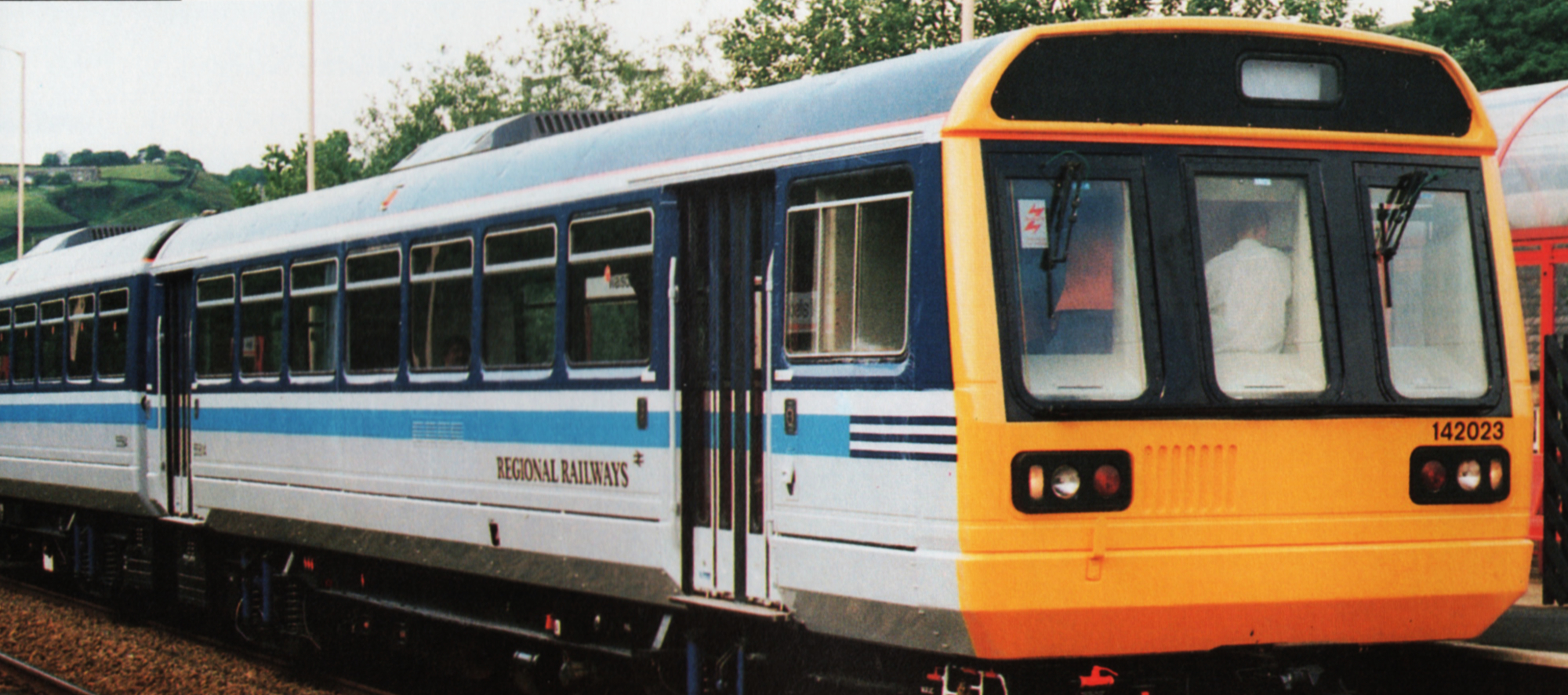
The class 142 in
Regional Railways
livery. The dark
blue band allows
the windows
to merge into the
background
instead of breaking
up the otherwise
sleek and
appropriately linear
appearance.
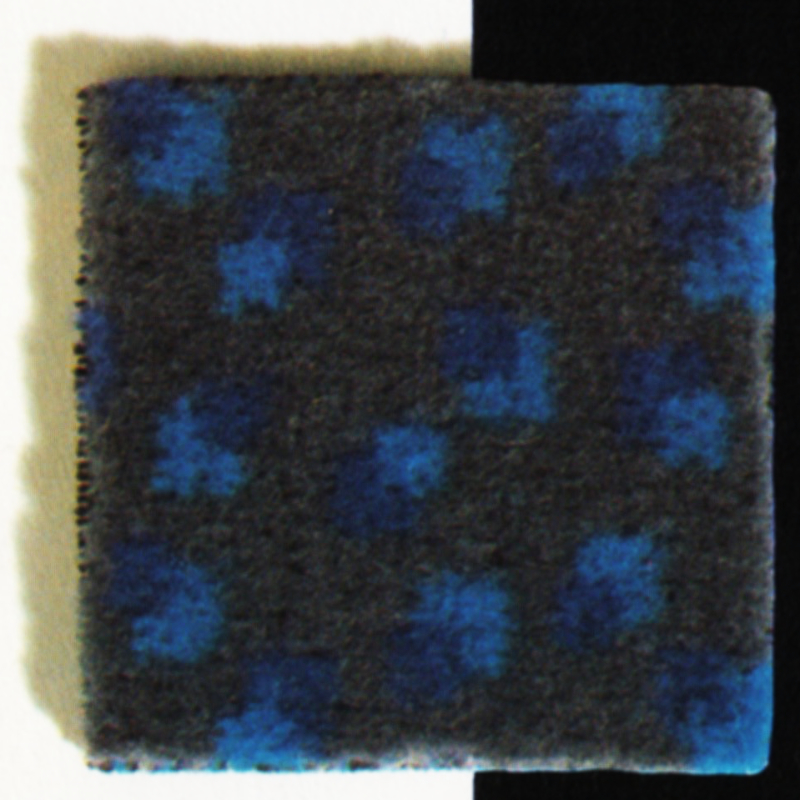
This is the
Regional Railways
style of moquette.
The spot colours
may be
customised for PTE
liveried vehicles or
modified to suit
older classes with
non-neutral
interior colours.
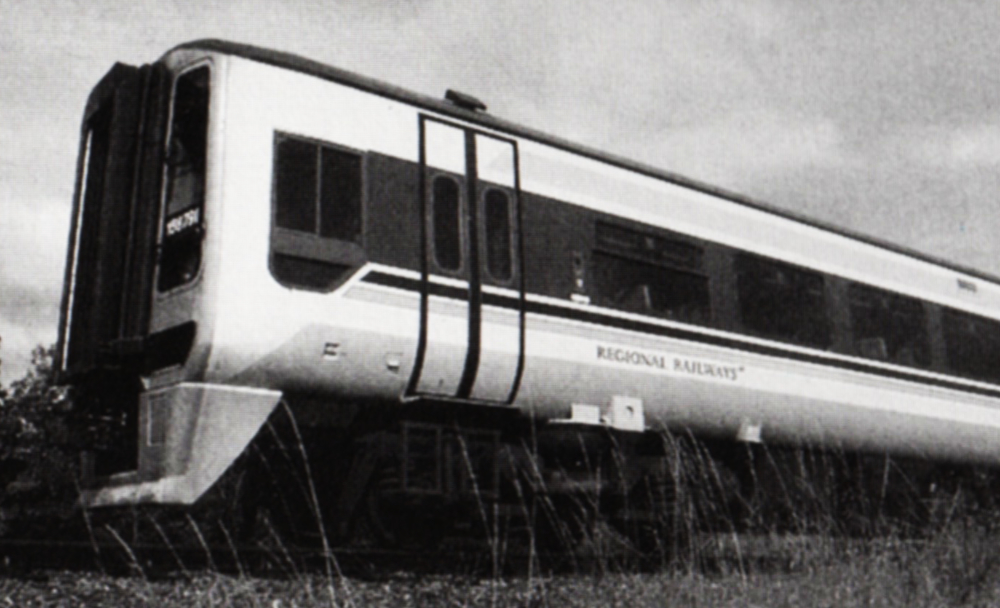
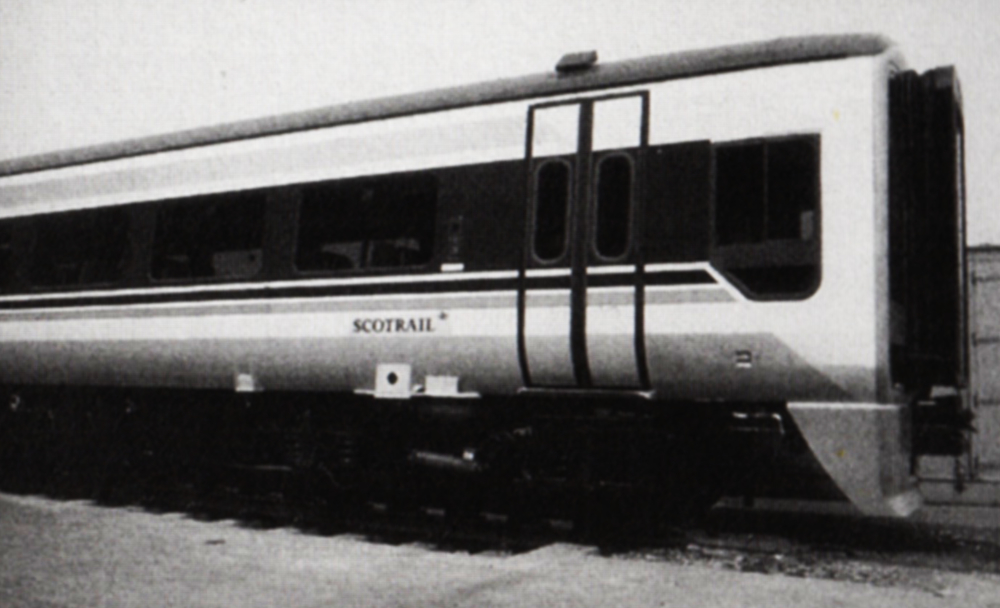
In Scotland the
class 158 is
endorsed with the
ScotRail logotype.
In England and
Wales ‘Regional
Railways’ is used to
denote the
operator.
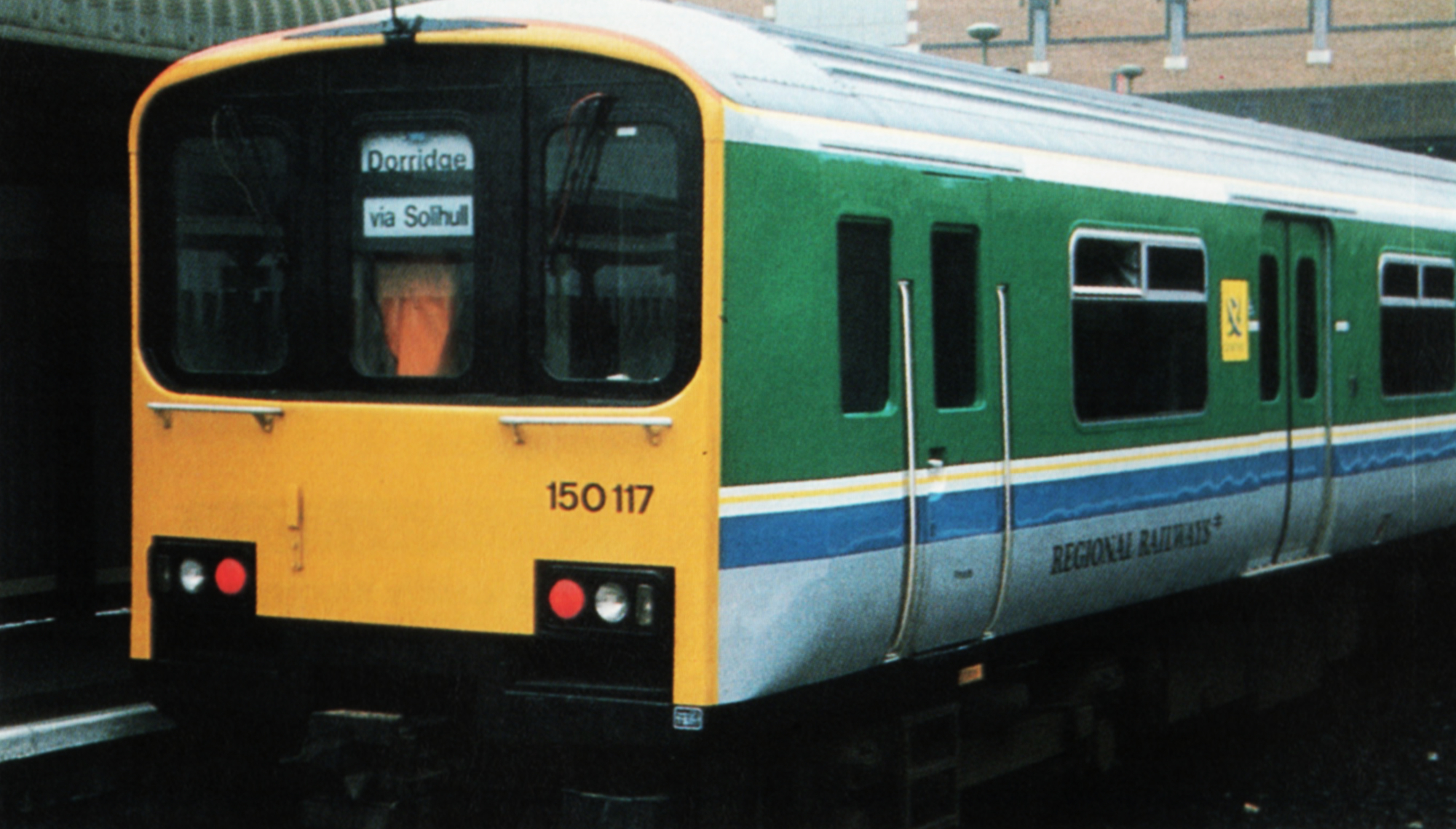
Centro house
colours applied to
Regional Railways
livery lines on a
class 150/1.
The livery has been
carefully tailored to
follow the
characteristic
shape of each
vehicle class.
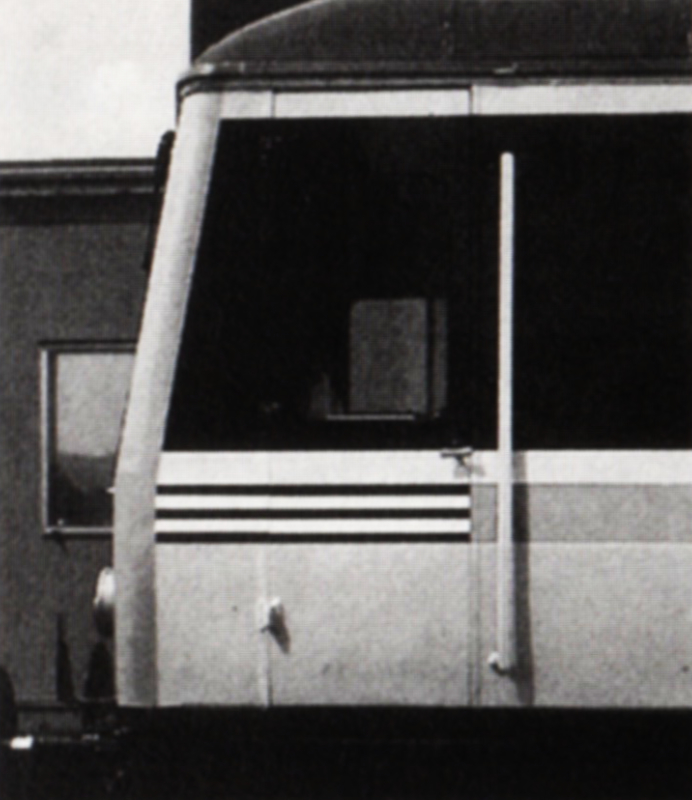
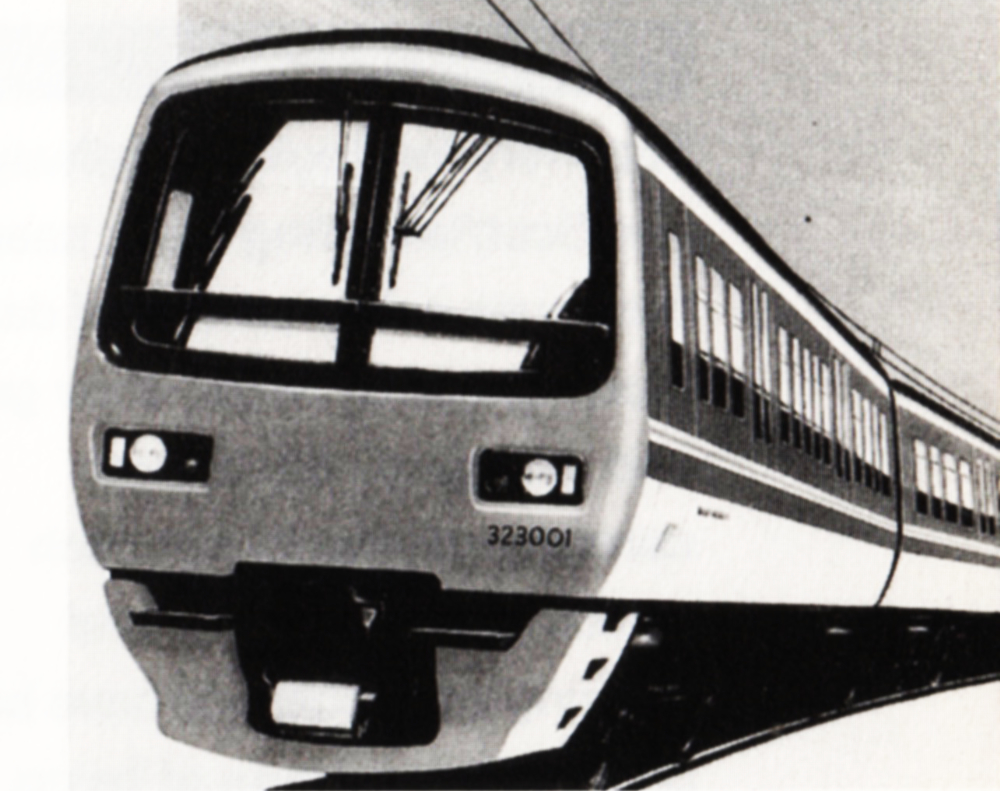
Artist’s impression
of the new class
323 which will
feature Centro or
Greater Manchester
PTE house colours
applied to Regional
Railways livery lines.
It will also carry the
business style of
moquette with spot
colours to
complement the
liveries and
interiors.
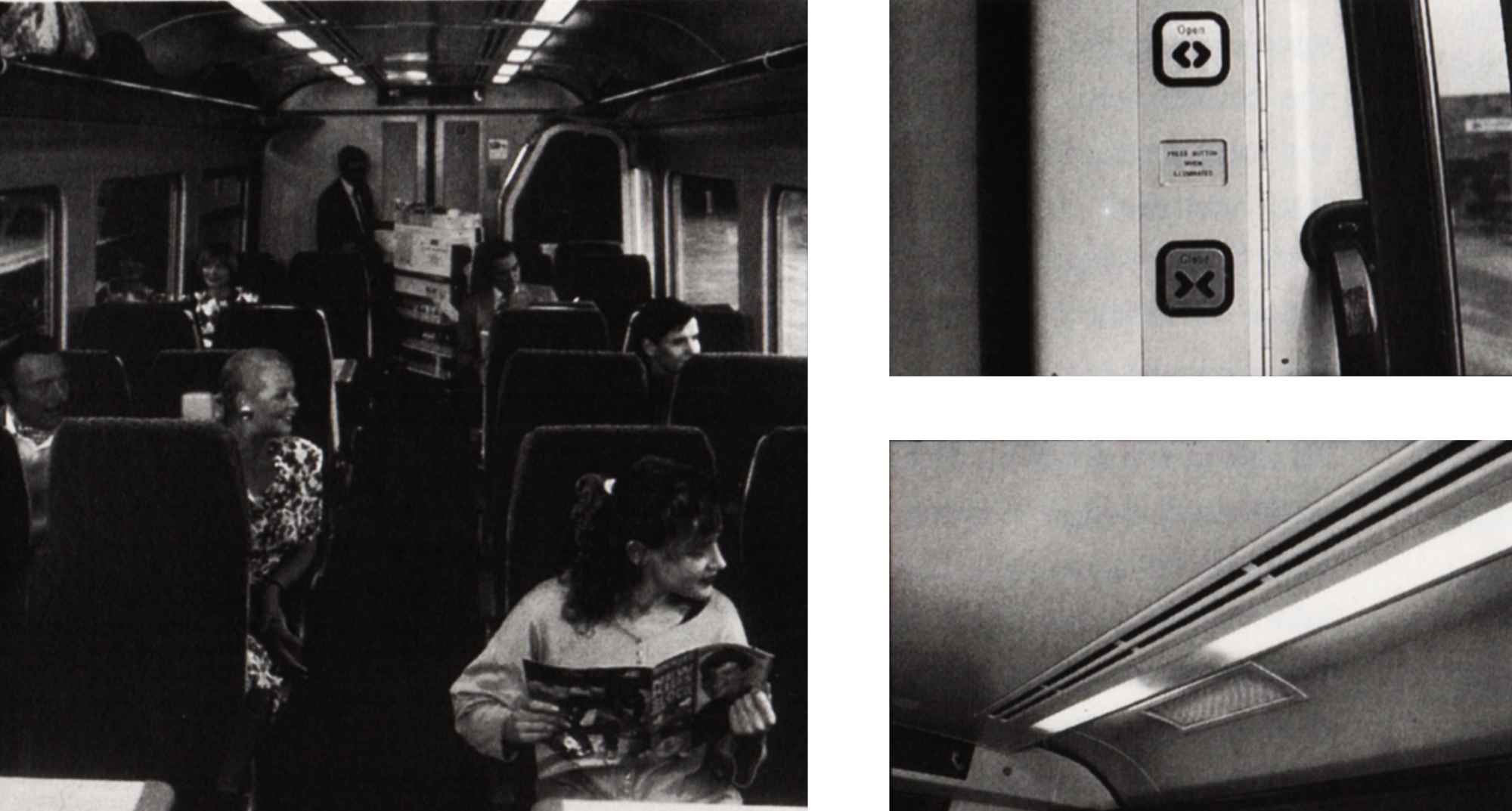
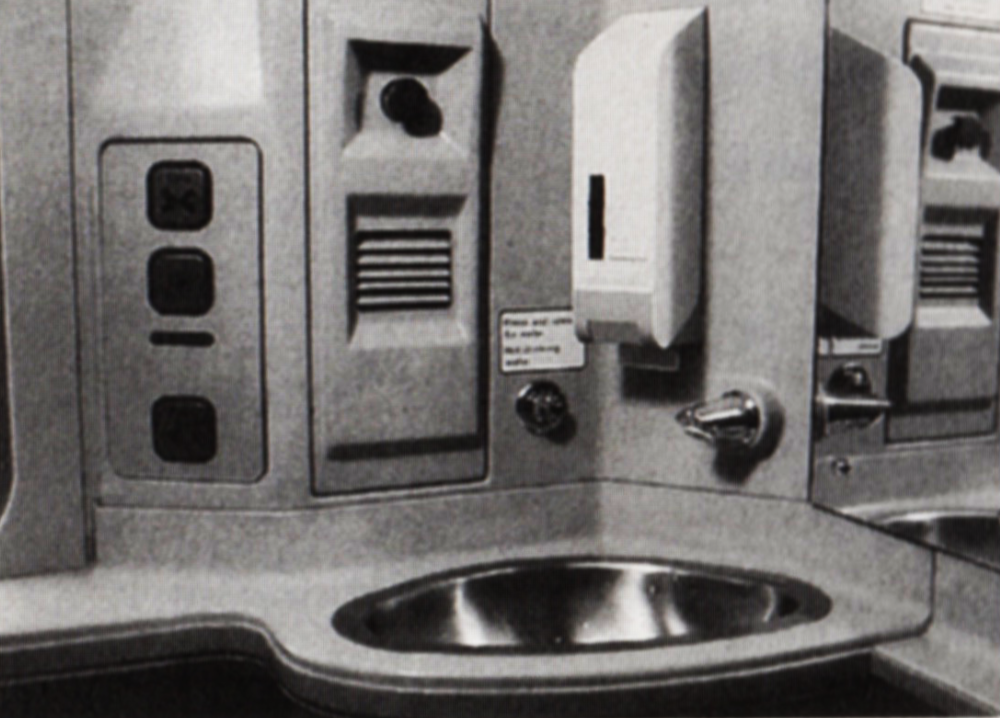
It is essential that
the whole product
is giving a quality
message to our
customers. All
design details are
important.
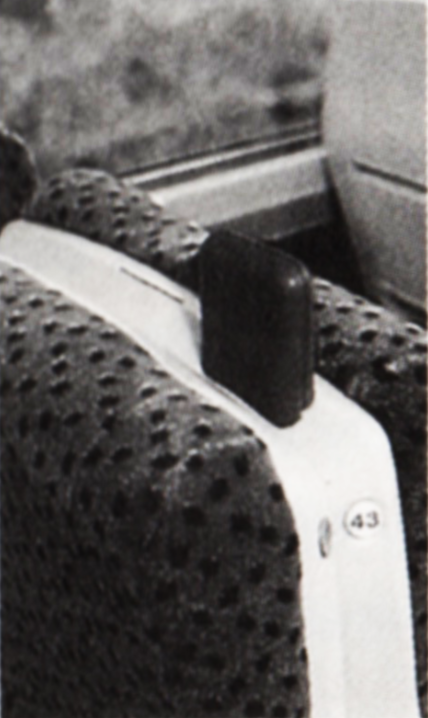
Rolling stock – a brief summary

Rolling stock policy – a brief summary

Livery
The livery for Regional Railways and ScotRail rolling stock uses the house colour palette of dark blue, light blue, white, silver grey and dark grey. It has been carefully tailored to suit each vehicle class. Painting and lettering specifications have been, or are in the process of being, produced for all passenger rolling stock.
The Regional Railways or ScotRail logotype appears in dark grey on all Regional Railways rolling stock as the name of the operator and is generally positioned under the first passenger window nearest the cab on both sides and at both ends of the unit. The dark blue and white fleximark is positioned within the light blue band at the cab ends of the unit. Its length will vary depending on the shape of the vehicle. Specific painting diagrams provide details.
Unit numbers are positioned on the right hand side under the driver’s window on the front of the unit. The vehicle numbers appear at the opposite ends to the logotype on driving vehicles. On middle cars the vehicle numbers are on opposing right hand ends. Data panels should be positioned on non-cab ends and not at the front of the vehicle.
Full details of the sizes and colours of logotype and numbers for each class of vehicle may be found in the Identity Management binder.
Depot symbols and allocation codes may be applied to the sides below the vehicle number but nowhere else. The size, colour and style is controlled to ensure visual quality.
PTEs
As providers of high level revenue support for local fleets, PTEs are entitled to their own house colours within our livery lines. A visually acceptable and practical livery will be mutually agreed between the two parties.
The Regional Railways or ScotRail logotype will appear on the train in the position as described under the heading ‘Livery’ but the fleximark will not be used on PTE liveried stock.
The PTE symbol will be positioned within a panel close to the passenger doors at window height. Where this is not possible it will be positioned close to the doors on the lower bodyside but away from the Regional Railways or ScotRail logotype. There will be a maximum of two panels per vehicle side.
Existing agreements with PTEs and other sponsors will be honoured. Any changes are to be by agreement by both parties and must follow the format described above.
Major sponsors
In principle, major sponsors may have their symbol on the side of Regional Railways or ScotRail liveried trains if it is shown that there is a significant funding (50% or more investment) of a discrete fleet. Generally, the symbols will be positioned in the same way as those for PTEs.
Approval for the recognition of major sponsorship must be obtained from the Profit Centre Planning & Marketing Manager. The design solution and positioning will be progressed through the Identity Manager.
Interiors
Interior colours and finishes are carefully chosen to present a total quality product image to the customer. Every design detail is scrutinised by the Design Manager for fitness for purpose and to ensure it adds positively to the whole image.
The agreed design of moquette, (seating fabric), for Regional Railways features dark blue and light blue spots on a grey background. These colours may be adapted, if necessary, to suit the interior schemes of older trains being refurbished. The spot colours provide a link with the outside livery to help present the total product image. PTEs may have spot colours to match their house colours instead of those of Regional Railways.
Poster frames
All rolling stock will be fitted with a universal design of frame intended to hold maps, useful information, promotional posters or even general pictures to enliven and complement the interiors. This material must not be displayed anywhere else.
Corporate signs and notices will be used for all emergency, warning and information signing.
Certain colours have been allocated for specific safety notices, such as green for emergency notices.
Working group
The Design & Identity Working Group on Rolling Stock meets regularly to assess design quality, application of identity and the monitoring of new design projects. A list of current members can be found in the Contacts pages at the back of this brochure.
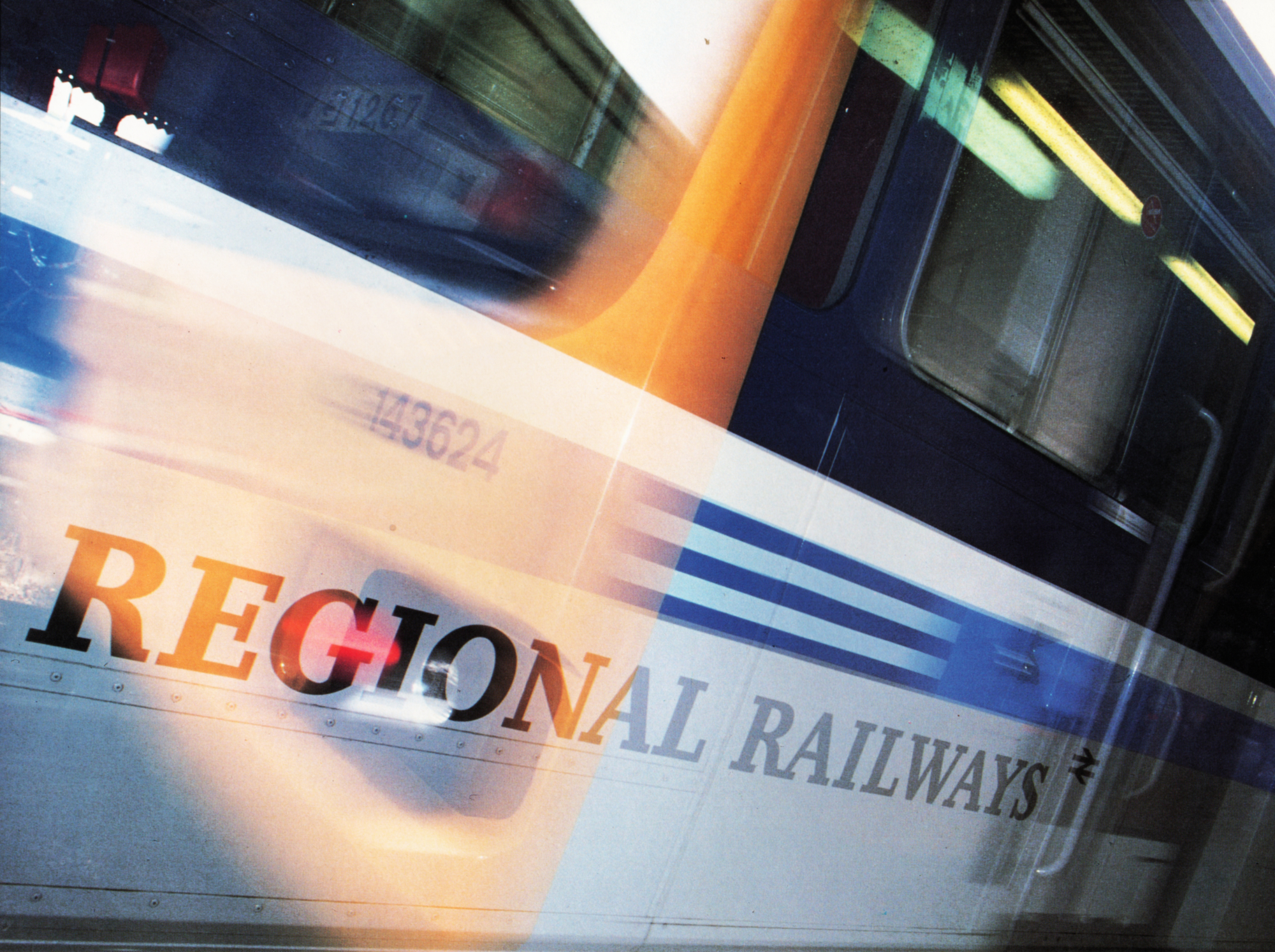
station environment
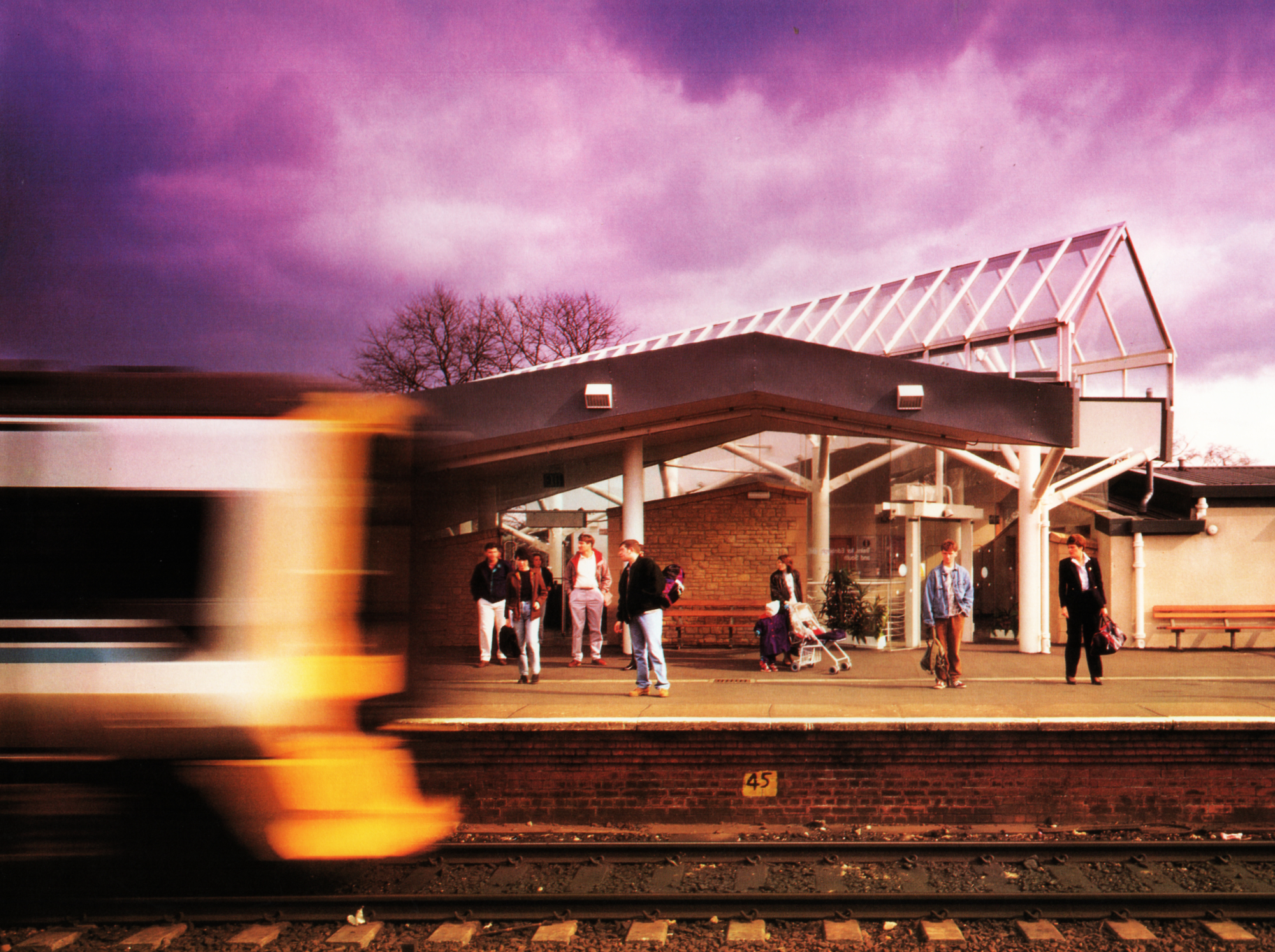

- Station furniture
- Design details
- Environment
- Colour palette
- Surfaces
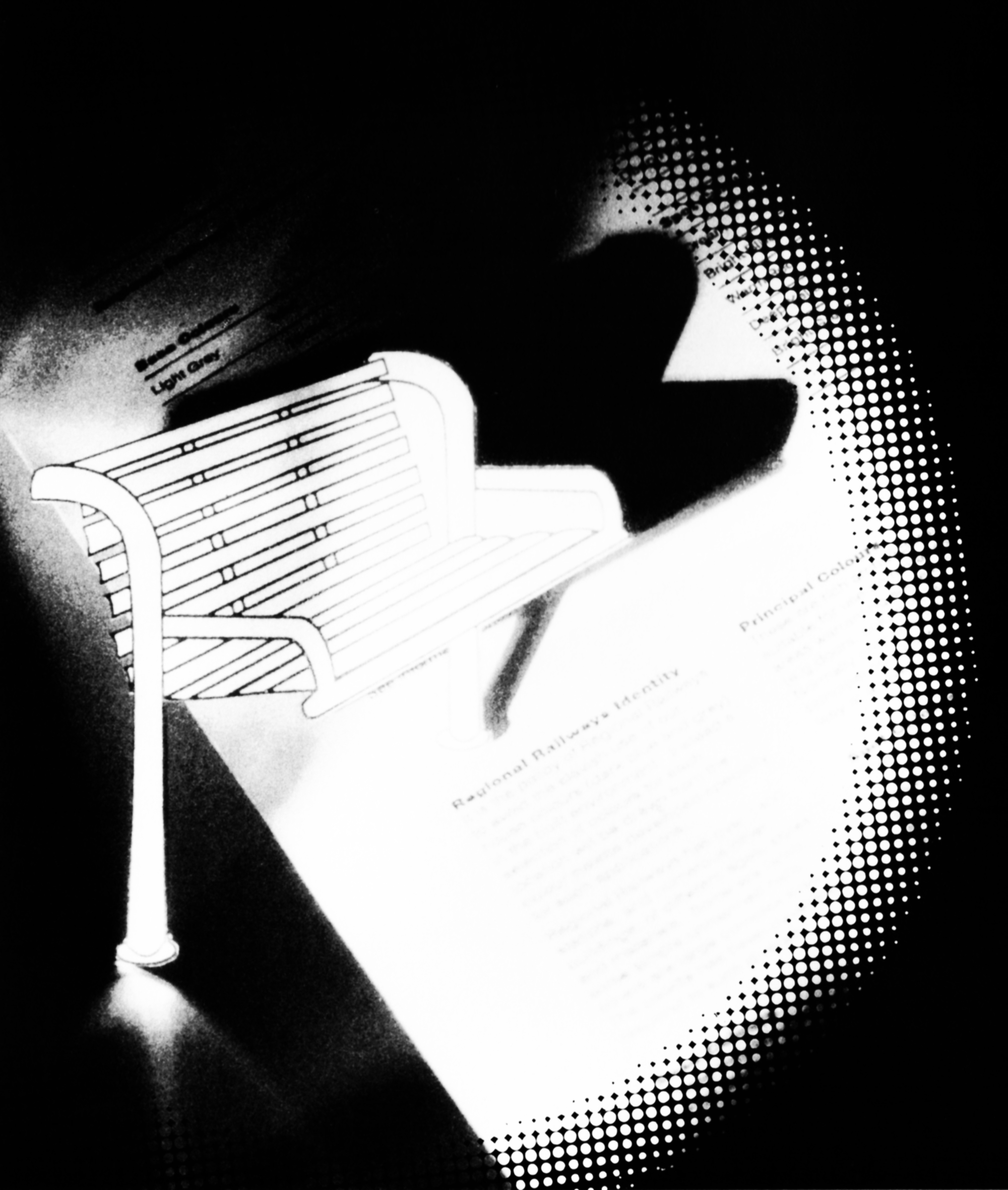
There are more than 1400 Regional Railways stations. The variety is enormous. So is the context in which they are set. There are major terminii in urban settings, local halts in the wildest countryside and everything in between. For this reason the new corporate identity was designed to add to the best characteristics of a particular locale with discretion, not to impose itself brashly as if applying a red hot branding iron. The aim is to encourage passengers and staff with regional allegiances to think in terms of ‘my station, in the care of Regional Railways’, not ‘my locality, taken over lock, stock and barrel by Regional Railways’.
The key phrase here is ‘in the care of’. No amount of tasteful paintwork makes up for malfunctioning lavatories, litter-strewn platforms, broken windows in unheated waiting rooms, potholes in the forecourt and misleading sign systems. The travelling public does not make huge demands of the average station. It is well within our powers to meet all their demands fully and consistently. Bad impressions last. Creating a good impression through attention to this kind of detail is an absolute essential of a successful corporate identity. To maintain the impression is to create new business.
There is a special group of colours to be used on Regional Railways stations, not just the brand shades of blue and grey. This environmental colour palette can be used to bring out the best in any station. The Identity Management binder contains guidance on how to use the colours – whether for large areas, or as highlights, or for specific purposes. Many of our stations will deserve colour schedules specifically drawn up by your profit centre architect.
A relatively small range of station furniture will be available, some of it specially designed and made. It will include waiting shelters, seating, litter bins and lighting. We recognise that it is not easy to furnish a station functionally and make it look good and remain within a strict budget. So we recommend that managers ask their architect for advice. He or she will also advise on the adaptation, refurbishment and renewal of buildings and the built environment, including fencing, pavings and planting.
station environment – colours

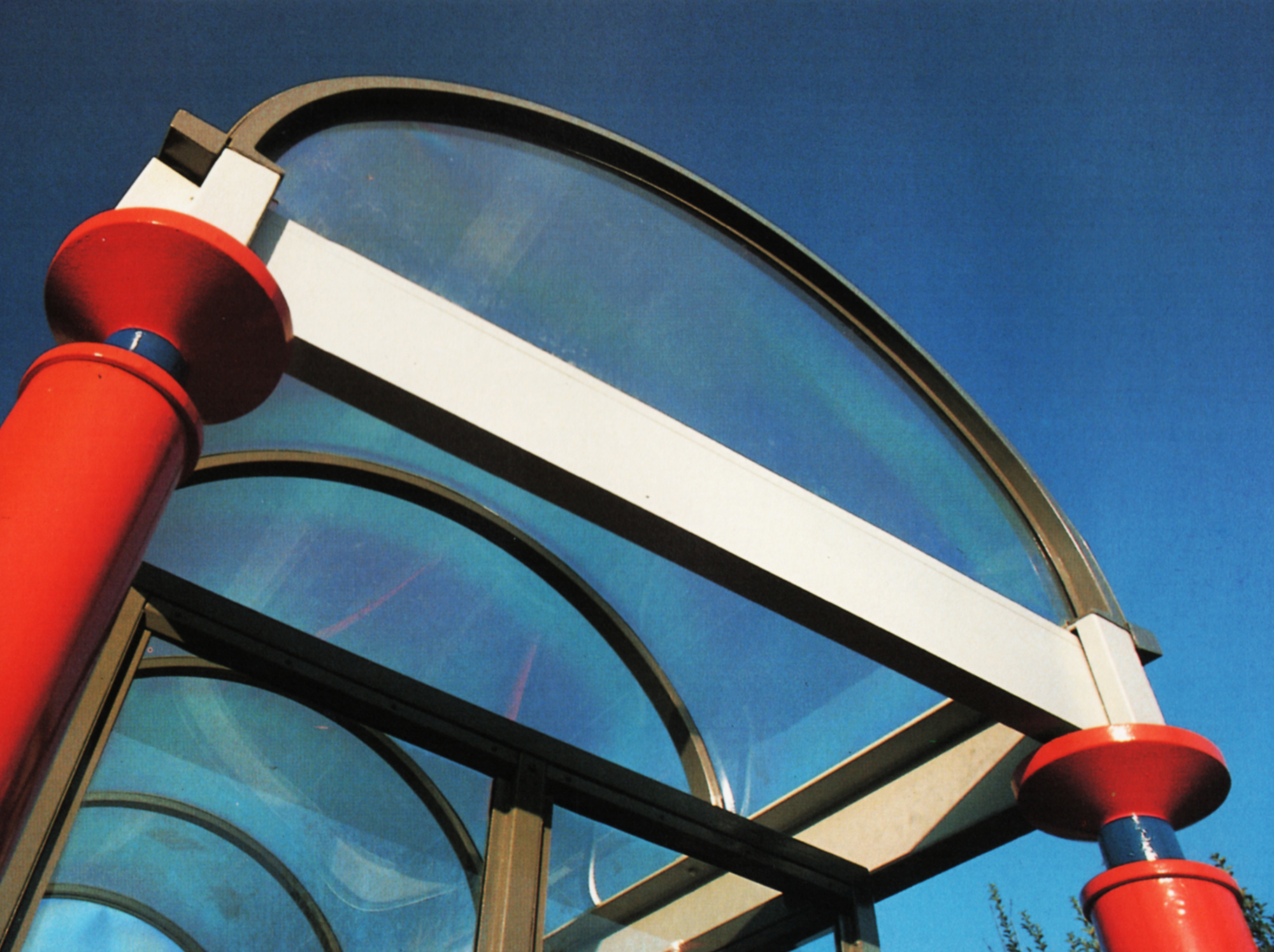
A specially
designed shelter
called The Classic
incorporates the
basic principles
and standards. All
round visibility and
a barrel-vaulted or
pitched roof.
Decorative details
require sensitive
and creative
treatment with the
colour palette.
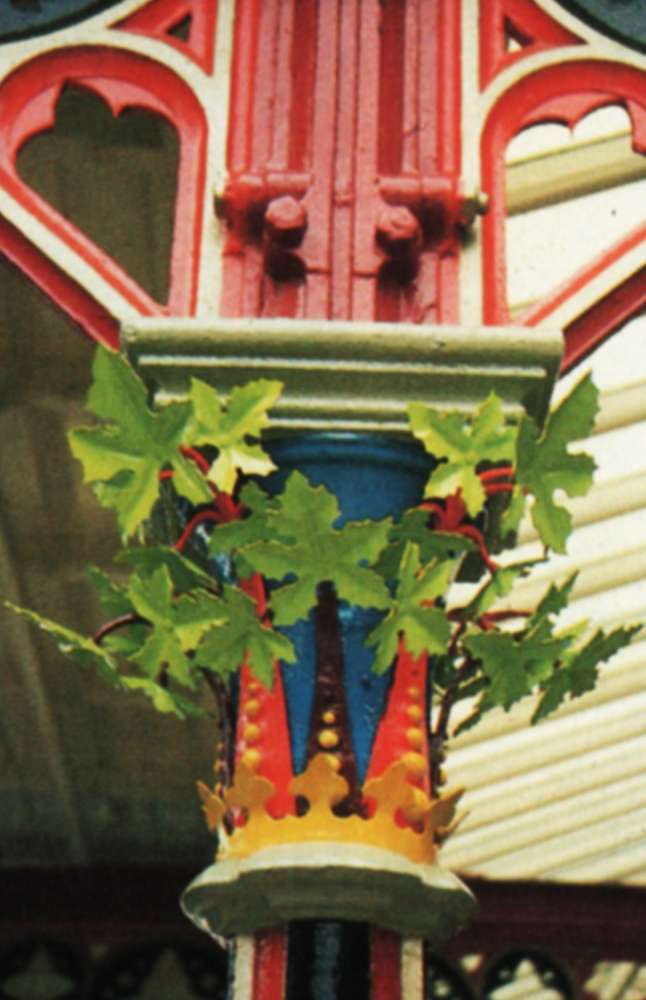
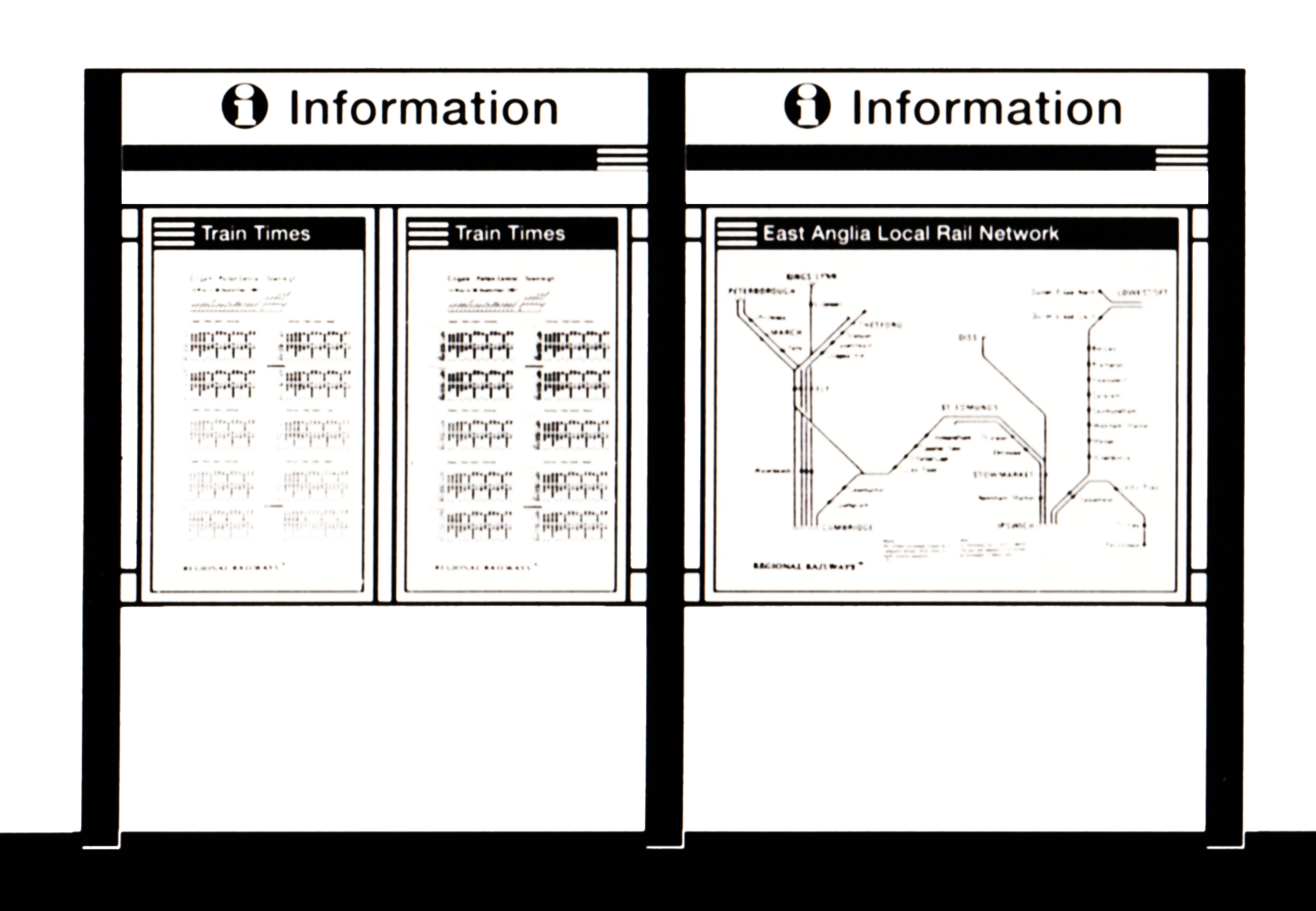
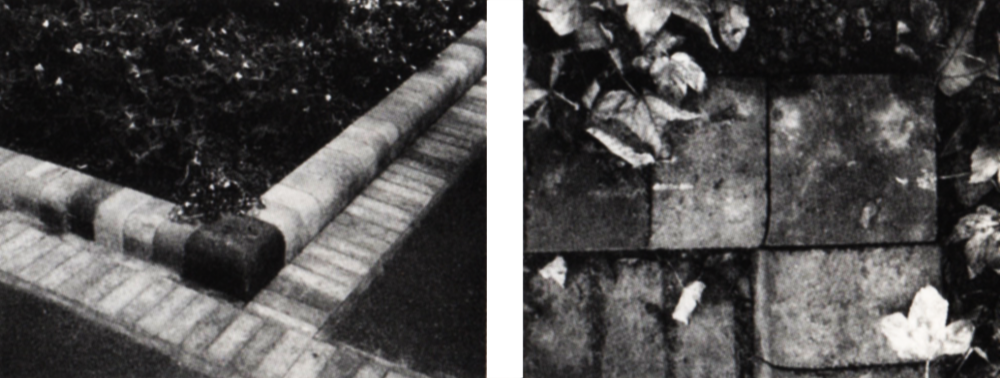
Surfaces must be
appropriate, robust
and pleasing to
the eye.
Landscaping is
particularly
important.
A modular
information
structure will take
departure sheets,
maps and other
useful information.
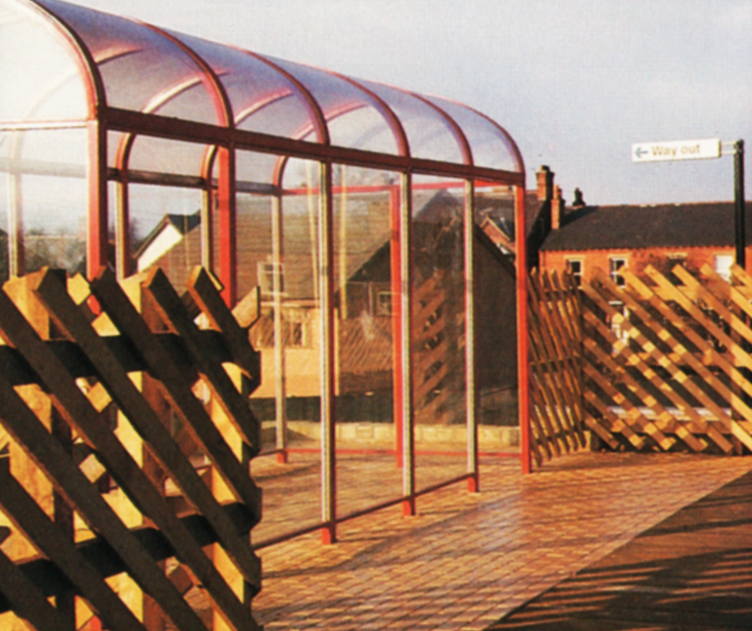
This shelter also
incorporates the
basic features.
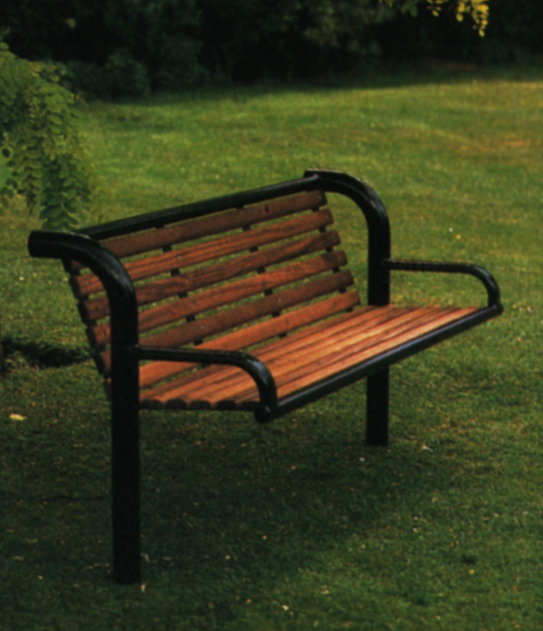
Maceman ‘Public’
is available with
timber-slatted or
performated steel
seats.
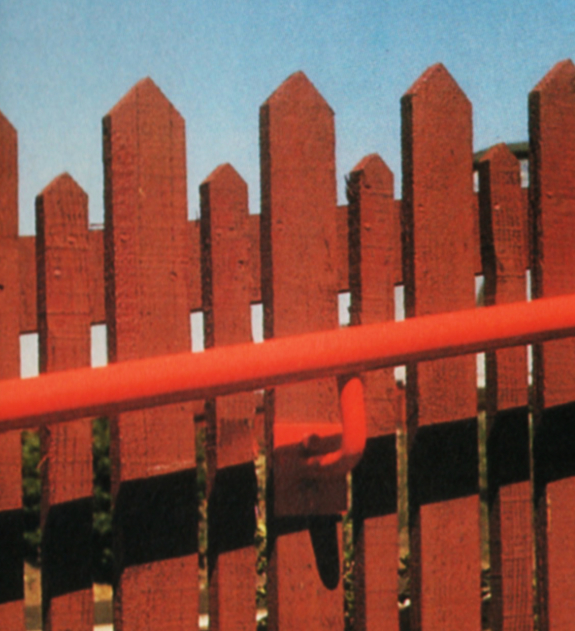
Fencing offers
much scope for
attention to detail
and is an
important element
in unifying the
station.

Spot colours
for highlighting

Principal or theme colours.
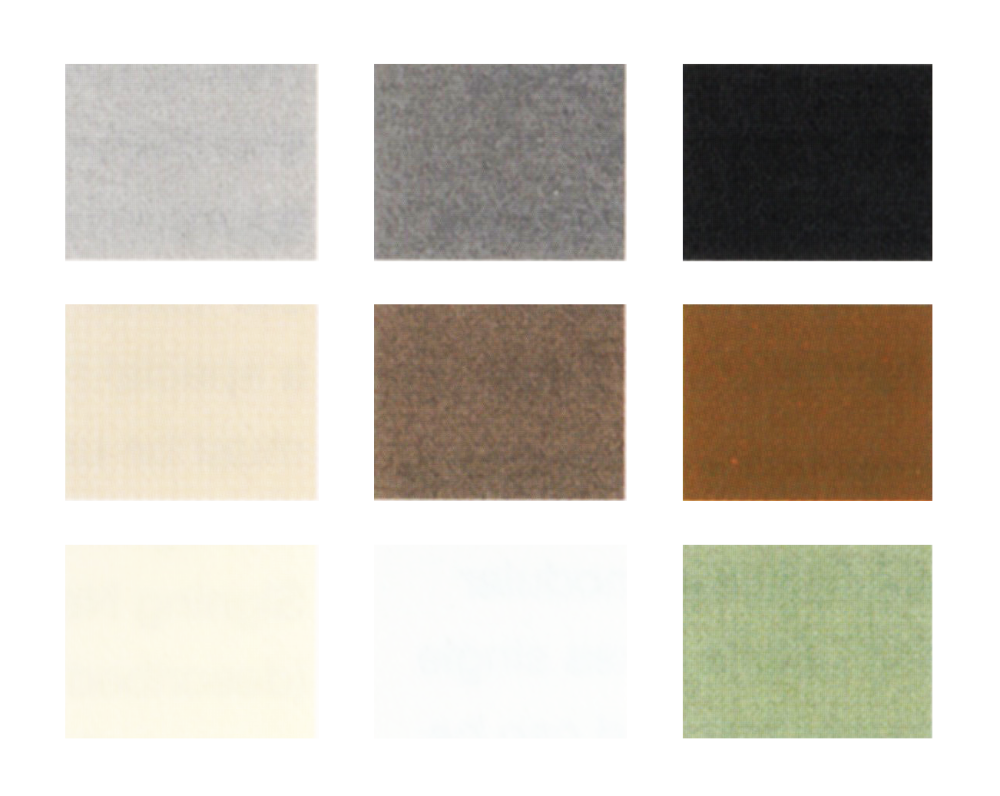
Basic colours including black and white
The environmental
colour palette
consists of 3
principal colours,
one of which may
be combined with
any of the neutrals.
Brighter spot
colours are used
sparingly to
highlight special
features.
Station environment – a brief summary

Station environment policy – a brief summary

Environmental colour palette
Not to be confused with the group of Regional Railways house colours, the environmental colour palette has been specially devised to cope with all types and styles of Regional Railways stations. It comprises three principal (or theme) colours, a series of neutrals as base colours, and spot colours used sparingly to highlight special features.
Paint samples can be found in the Identity Management binder.
Station furniture
There will be a range of Regional Railways station furniture from which items can be chosen to suit a particular station’s environment and budget. The items included will cover waiting shelters, litter bins, seating, fencing, platform surfaces, cycle racks, planters, bollards and lighting. For information on both the furniture and the environmental colour palette contact your architect.
Information structure
The Regional Railways modular information structure takes single or double size poster and can be wall or post mounted, double or single sided. It is available in units with two, three or four single size poster frames. A double size poster frame may replace two singles as required. Contact the Publicity Controller for details of production and installation.
The heading panel has the information ‘i’ symbol, the word ‘Information’ and the Regional Railways branding strip with the fleximark. Only rail information should be displayed under this heading. Rail information includes departure sheets, local rail network maps and the ‘Useful Information’ poster. These have been specially designed to complement the header panel. The structures must not be used to display promotional material.
If a structure is required to display local information for the customer leaving the station, or heritage information associated with an approved line image then either the ‘Local Information’ header or a special heritage signing header must be used. See the Identity Management binder or the Signing Negotiation document (described in the Station Signing section of this brochure) for details of the header panels.
Leaflet racks
A leaflet rack has been specially designed to hold both the new format timetables and our full range of leaflets. Contact the Publicity Controller for details of production and installation.
Working group
The Identity Working Group on Stations meets regularly to assess design quality, approve items of station furniture and application of the identity and to monitor new projects. See the Contacts pages in this brochure or in the Identity Management binder for a list of current members.
station signing

- Totem signs
- Platform station signs
- Corporate signing
- Sponsor acknowledgement
- Heritage signing
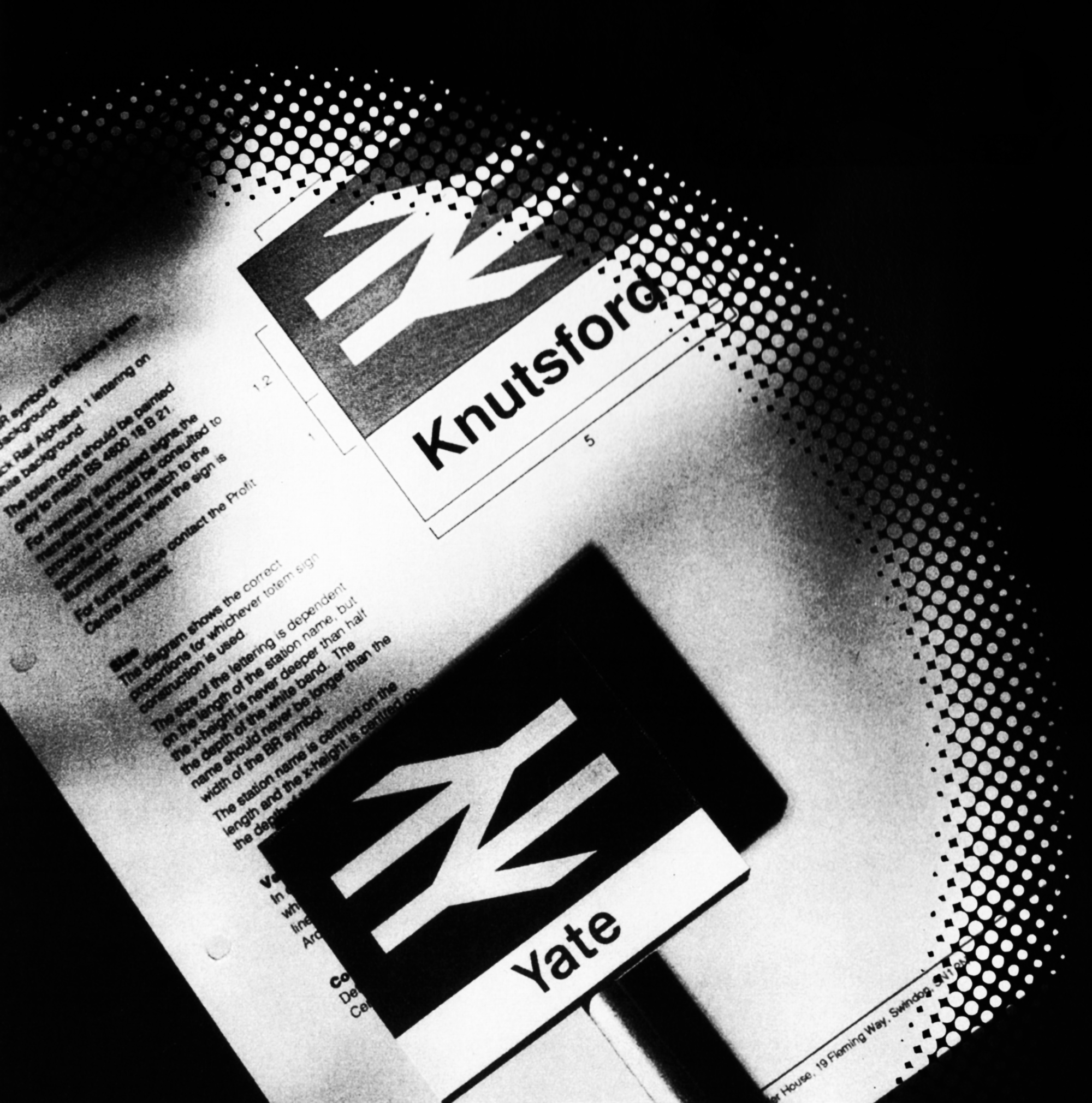
No-one notices a good signing system. Everyone notices a bad one. It is like a treasure hunt without a prize. We cannot afford to have ‘pretty good’ sign systems. They must be infallible. Travellers in general and commuters in particular are short of time. The slightest flaw in the sign system becomes a major source of irritation to someone who is in a hurry. If, as a result of a flaw in the system, they miss their train, we may well lose their custom in future. We can’t afford to do that.
Signing cannot, by itself, provide the unambiguous guidance system for users of our stations. It must be used in support of well thought out routes and design and location of facilities.
Test your system. Make sure your signs are in exactly the right position. Make sure that someone coming to your station for first time can move without a hitch, as if following a dotted line, straight from the nearest road junction to the train. Even if it works for someone of 6’6″ it may not work for someone of 4’6″. Keep it simple. Get it right for everybody.
All Regional Railways stations will be ‘flagged’ in a unique and distinctive way: the fleximark will appear within a dark blue band on the platform station name and information structure. The fleximark makes its appearance to reinforce the fact that this is indeed a station run by Regional Railways. The PTE symbol will appear on totems and platform station names signs at every station supported by a Passenger Transport Executive, to acknowledge their contribution. And we shall continue to use the tried, tested and unsurpassed Rail Alphabet lettering in black on a white background.
We have developed an additional sign system with a quite separate role. This is known as heritage signing and is used exclusively to point out particular features during journeys along and around the line. It is often associated with specifically designed routes such as the Settle to Carlisle line. These routes are marketed (and new ones may be marketed in future) on the strength of their intrinsic historic interest or the quality of the landscape. Heritage signing provides interesting but non-essential information, which is why it is designed to be distinct from corporate signing.
We don’t have ‘Welcome to….’ signs on Regional Railways. Customers feel welcome in any case when they find themselves in a station that is well lit. has attractive and well-maintained paintwork, good facilities, an excellent signing system and, above all, helpful staff. The public address system – effectively part of of the signing system – is an excellent means of welcoming customers directly and thanking them for travelling with us.
station signing – totems

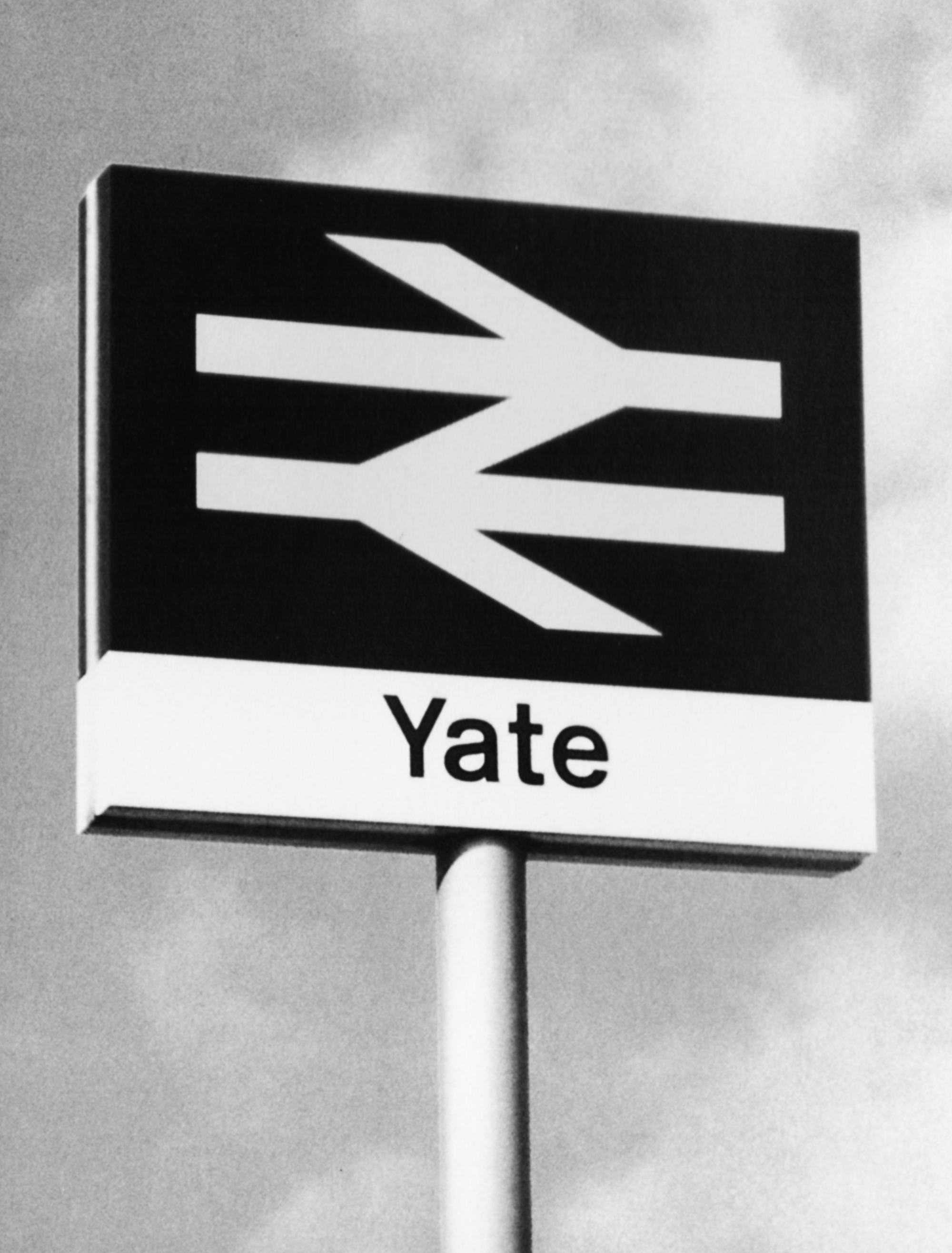
The BR symbol acts
as a pictogram to tell
the traveller where
the station is.
Regional Railways
branding would not
be appropriate at this
point.
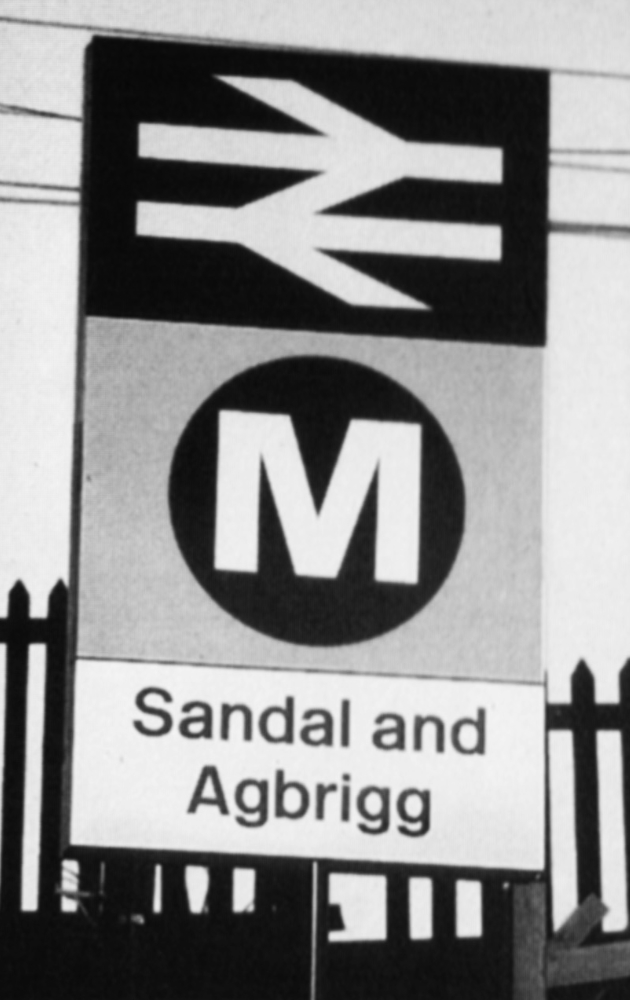
The totem may
acknowledge the
contribution of a PTE
or approved major
sponsor.
A specially designed
plaque may be used
to acknowledge
financial support for a
quality station
improvement.
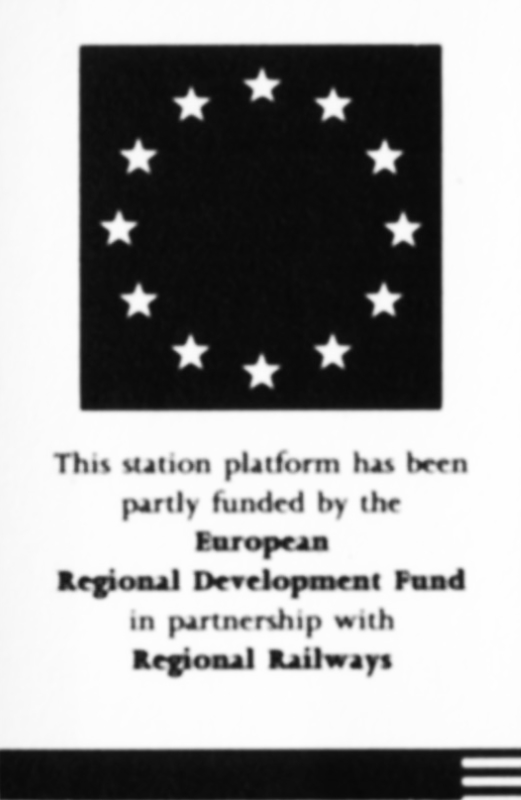
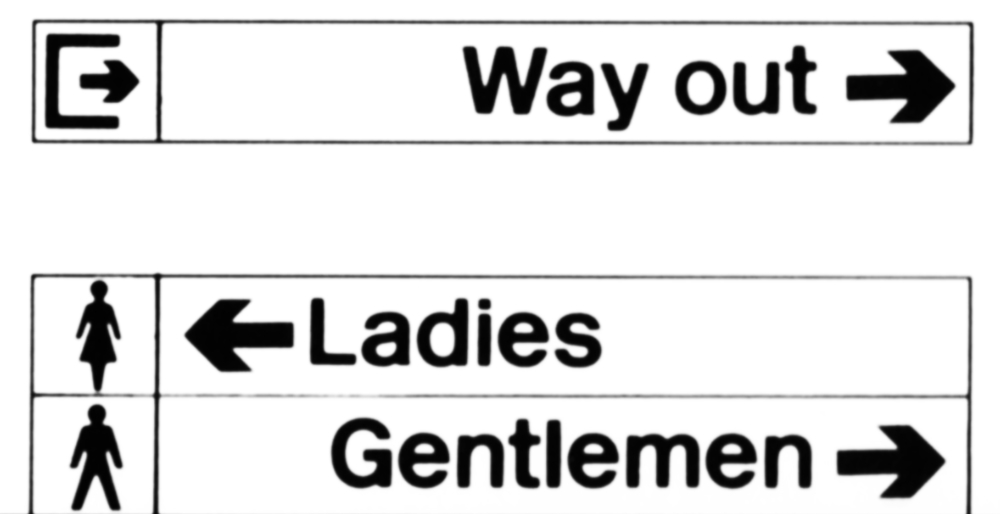
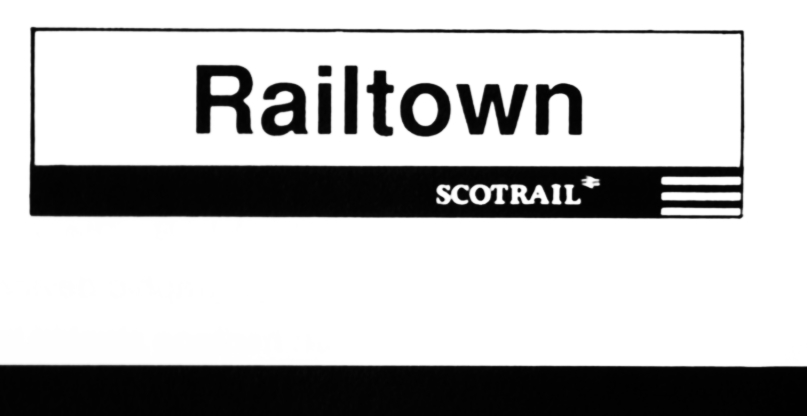
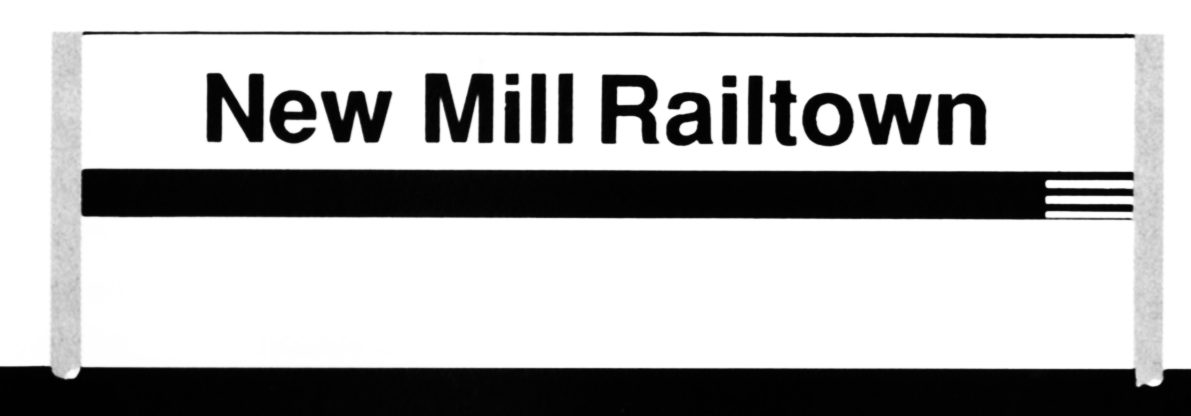
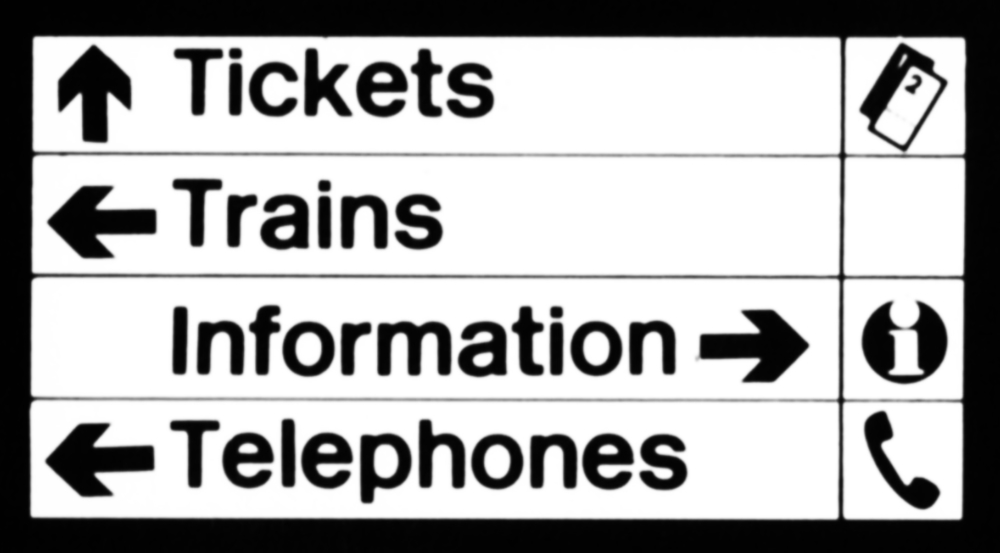
Corporate signing
using Rail Alphabet
and pictograms will
continue to be used.
The fleximark and
house colour is used
on platform signs. In
Scotland the ScotRail
logotype is also
applied.
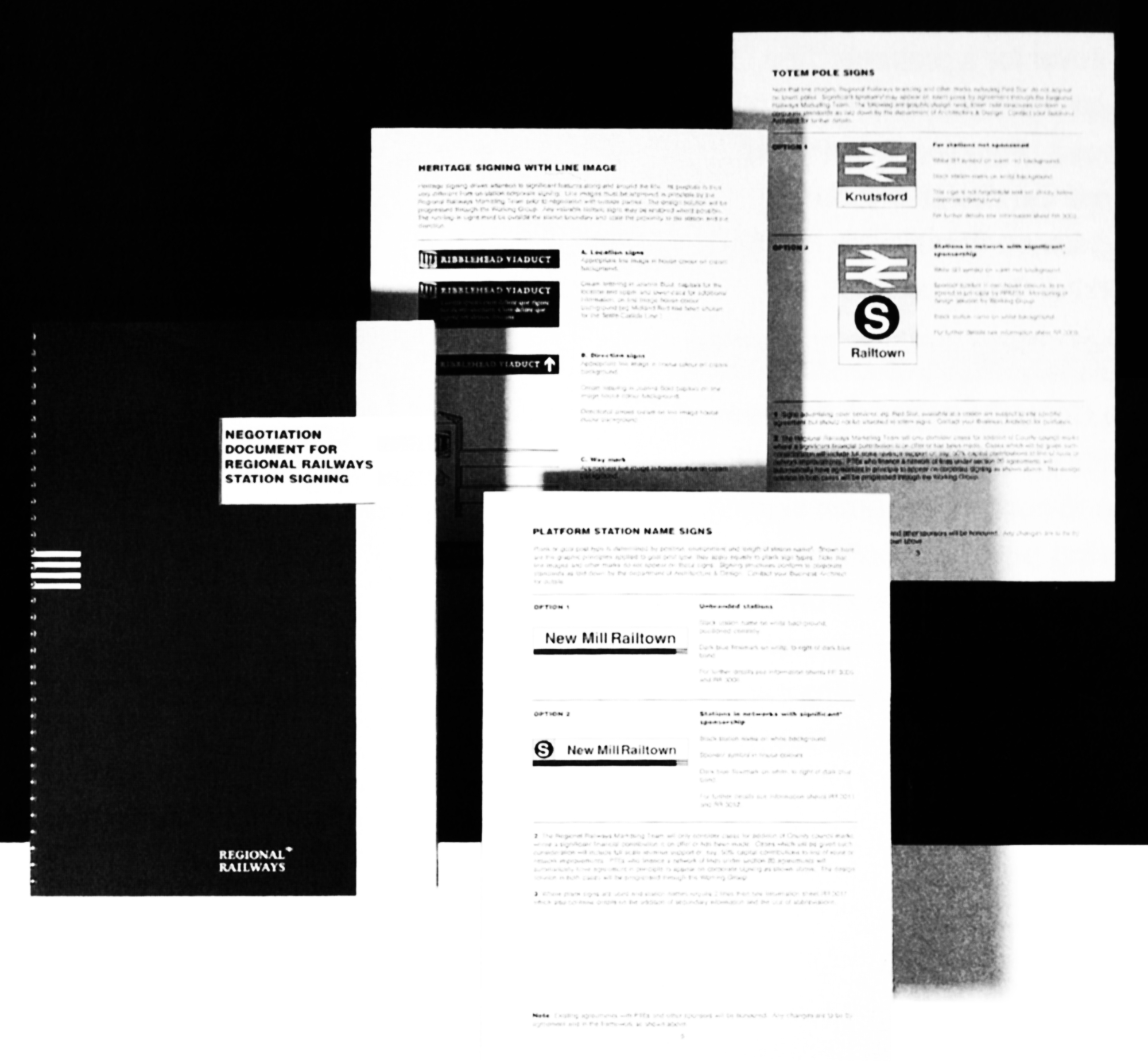
The Negotiation
Document on station
signing illustrates
what is and is not
negotiable for
sponsorship
acknowledgement on
stations
A line image can be
associated with
heritage signing to
point out interesting
railway features along
the route. Shown
here is the Settle-
Carlisle line image.
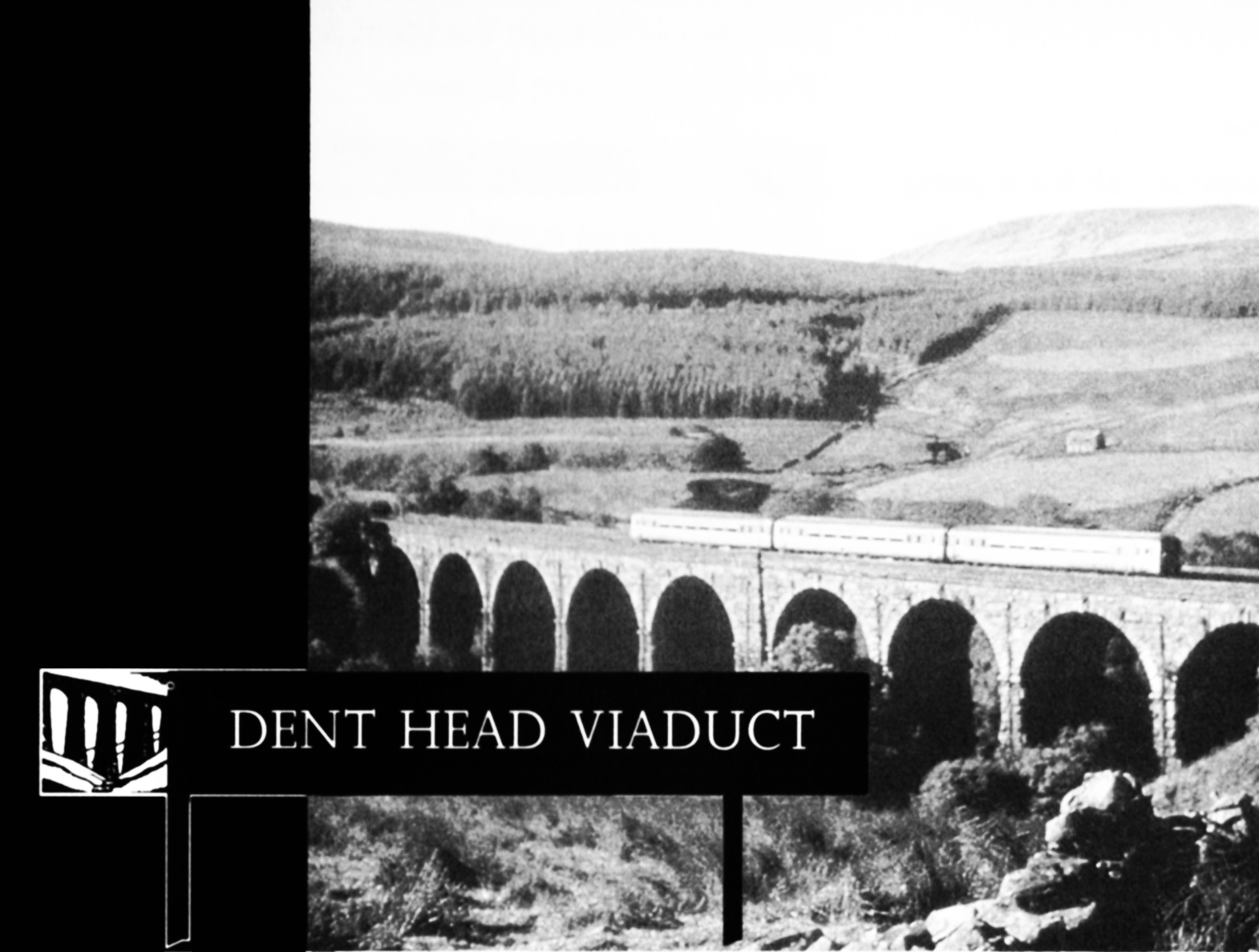
Signing policy – a brief summary

Signing policy – a brief summary

Corporate signing
We have found no way to improve upon black Rail Alphabet on white for all corporate signing applications.
The Regional Railways dark blue branding strip and fleximark is positioned along the lower edge of platform station name signs and information header panels to denote the operator of that station. In Scotland the ScotRail logotype is positioned within the branding strip, to the left of the fleximark.
When refurbishing non-sponsored stations all the signing should be replaced with the new design. New stations will automatically have the new signing. There will be no ‘mix’n’match’ signing, if a single platform station name sign has to be replaced then it must match the others at that individual station.
Sponsored stations
Regional Railways wishes to acknowledge the financial support of PTEs and other major sponsors such as County or Regional Councils on appropriate station signing. This is achieved by the addition of the sponsor’s symbol below the BR symbol on totems, and within a dedicated space to the left of the station name on platform signs. Existing visual solutions will stand until both parties agree to change.
Approval for the addition of County or Regional Council or other major sponsors’ marks must be obtained through the Director, Planning & Marketing and the visual solution progressed through the Identity Working Group on Stations.
Plaques
Where financial support is received from other contributors we acknowledge that support by means of a specially designed plaque. This plaque is intended to recognise a significant financial contribution and the endorsement of a quality product. Approval for their use must be obtained from the profit centre Marketing Manager.
Negotiation document
This document has been circulated to all managers who negotiate sponsorship agreements with PTEs, County or Regional Councils and other contributors. It clearly illustrates what is and what is not negotiable for sponsorship acknowledgement on station signing. Contact the Identity Manager for details.
Heritage signing
Heritage signing draws attention to significant features (eg summits, viaducts, tunnels, bridges) along and around the line. Its purpose is thus very different from on-station signing and this difference is highlighted by the design; white Joanna lettering on a dark blue background with the fleximark featuring to the left of the main wording. Regional Railways or ScotRail branding only appears on more detailed location signs.
Please note that any valuable or historic signs may be restored where possible but in all cases each application of heritage signing must be approved by the profit centre Marketing Manager.
Line images
Certain lines, such as the Settle-Carlisle Line, have the potential to be promoted as a product in their own right as well as being a means for moving passengers from A to B. The approved line image graphic device may appear on heritage signing in place of the fleximark and the colour scheme of the sign changes to cream Joanna lettering on the specific line image colour background.
The line image may also be used on appropriate local information header panels, promotional print and gifts. It will not be used on corporate signing or rolling stock.
Approval for a proposed line image must be obtained from the Director, Planning & Marketing, before the design solution is progressed through the Identity Working Group on Print.
Contacts
The Contacts pages at the back of this brochure give details of who to contact to obtain signing. Signing policy is monitored by the Identity Working Group on Stations. Details of Regional Railways branded signing can be found in the Identity Management binder.
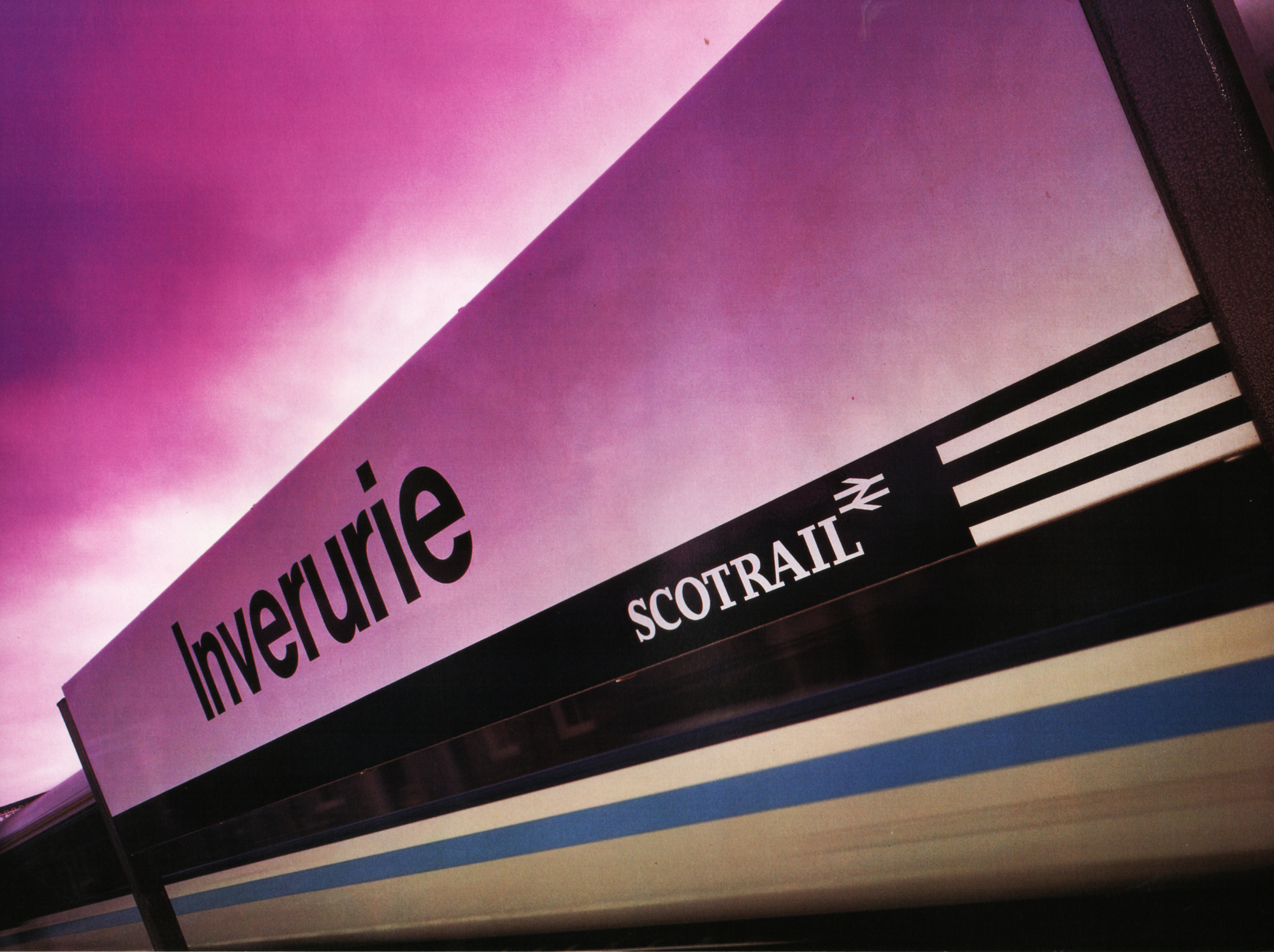
promoting business
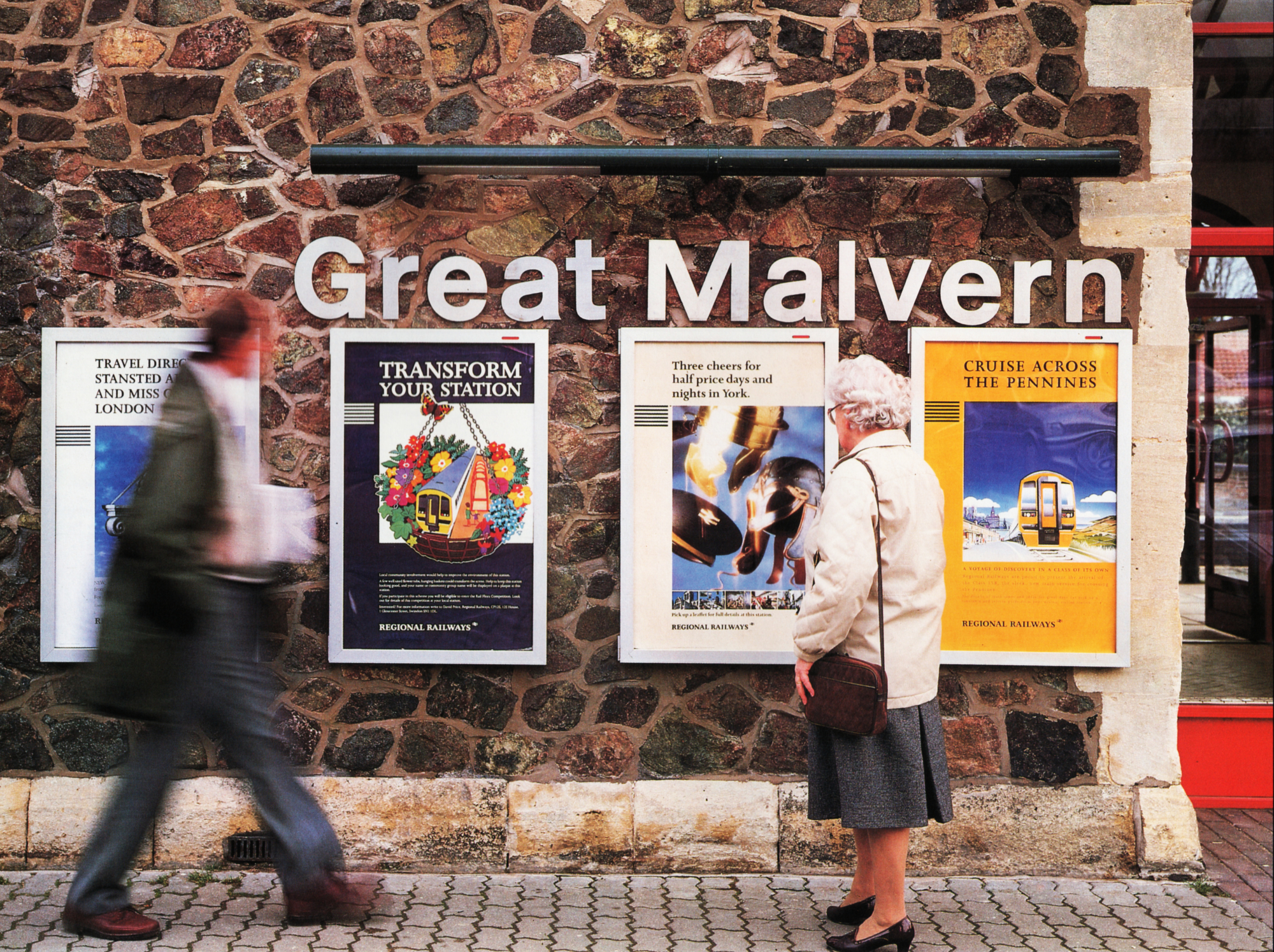

- Posters
- Promotional leaflets
- Campaigns
- Special promotions
- House style
Every profit centre within Regional Railways and every one of the Passenger Transport Executives is striving to provide a service of quality. And every one has something special to contribute to the whole. A little of the excellence of one offer can easily rub off onto another, to everyone’s advantage, as long as each of them is recognisably part of the whole. In other words, customers who have thoroughly enjoyed a ride on the Settle to Carlisle line and who then recognise another piece of literature from the same ‘stable’, promoting some other kind of offer, are much more likely to respond positively.
For this reason, the corporate identity has laid down a format for the production of promotional literature and posters. The public response, according to thorough research, has been favourable. The grid allows for bright colours so that the leaflets stand out amongst the competition. The grid ensures that the offer is placed prominently at the top with Regional Railways branding as an endorsement at the bottom. The fleximark will, as always, provide the principal Regional Railways family characteristic.
The very fact that Regional Railways is to be promoted at all is in itself an innovation and it will be done on 48-sheet posters, in newspaper advertisements and on television.
The information sheets contained in the Identity Management binder will spell out all the essentials to enable promotional print to be designed according to the grid. Even so. there will be briefings and follow-up sessions to ensure that everyone who is actively involved is confident about what they are doing and happy with the results.
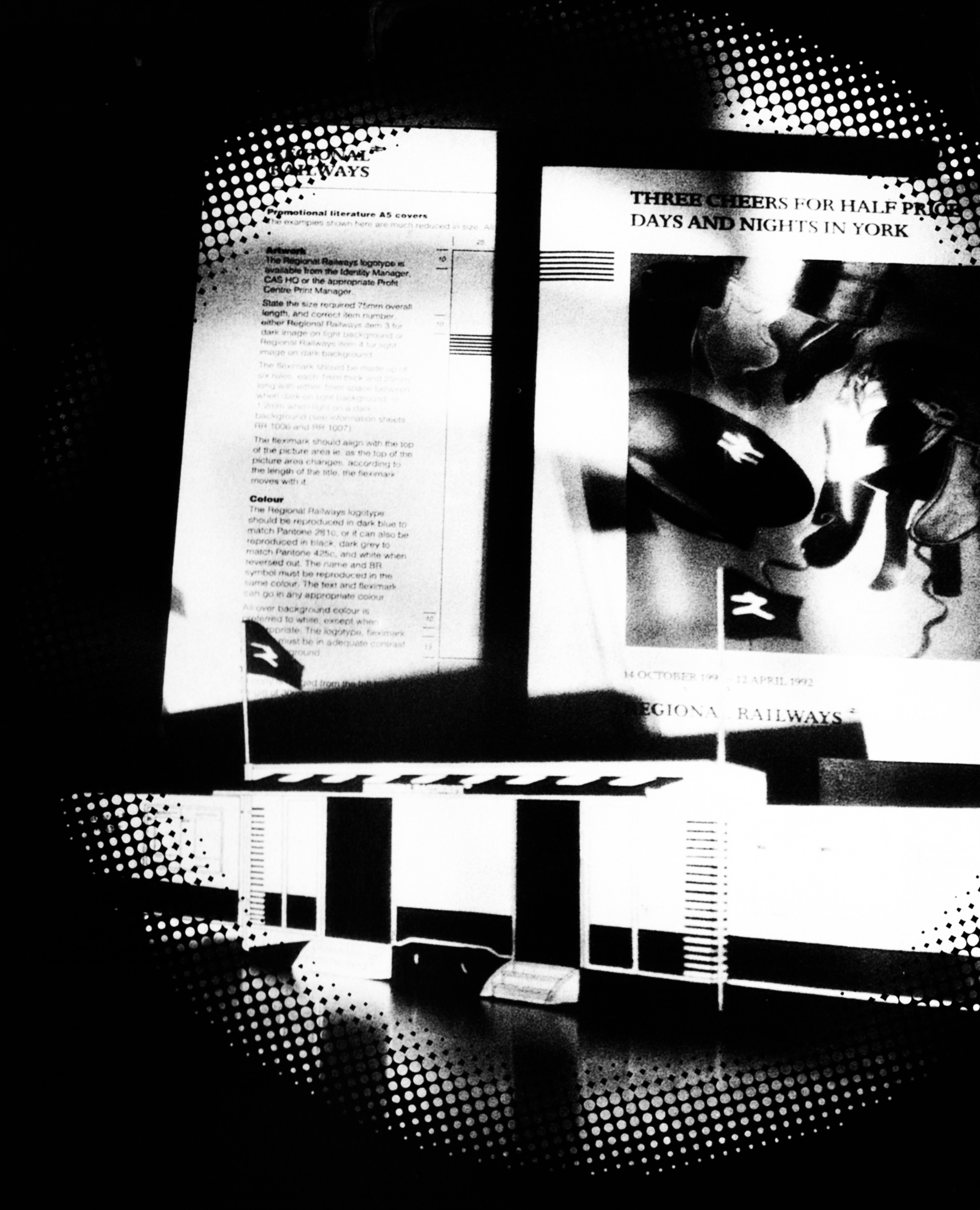
promoting business – leaflets

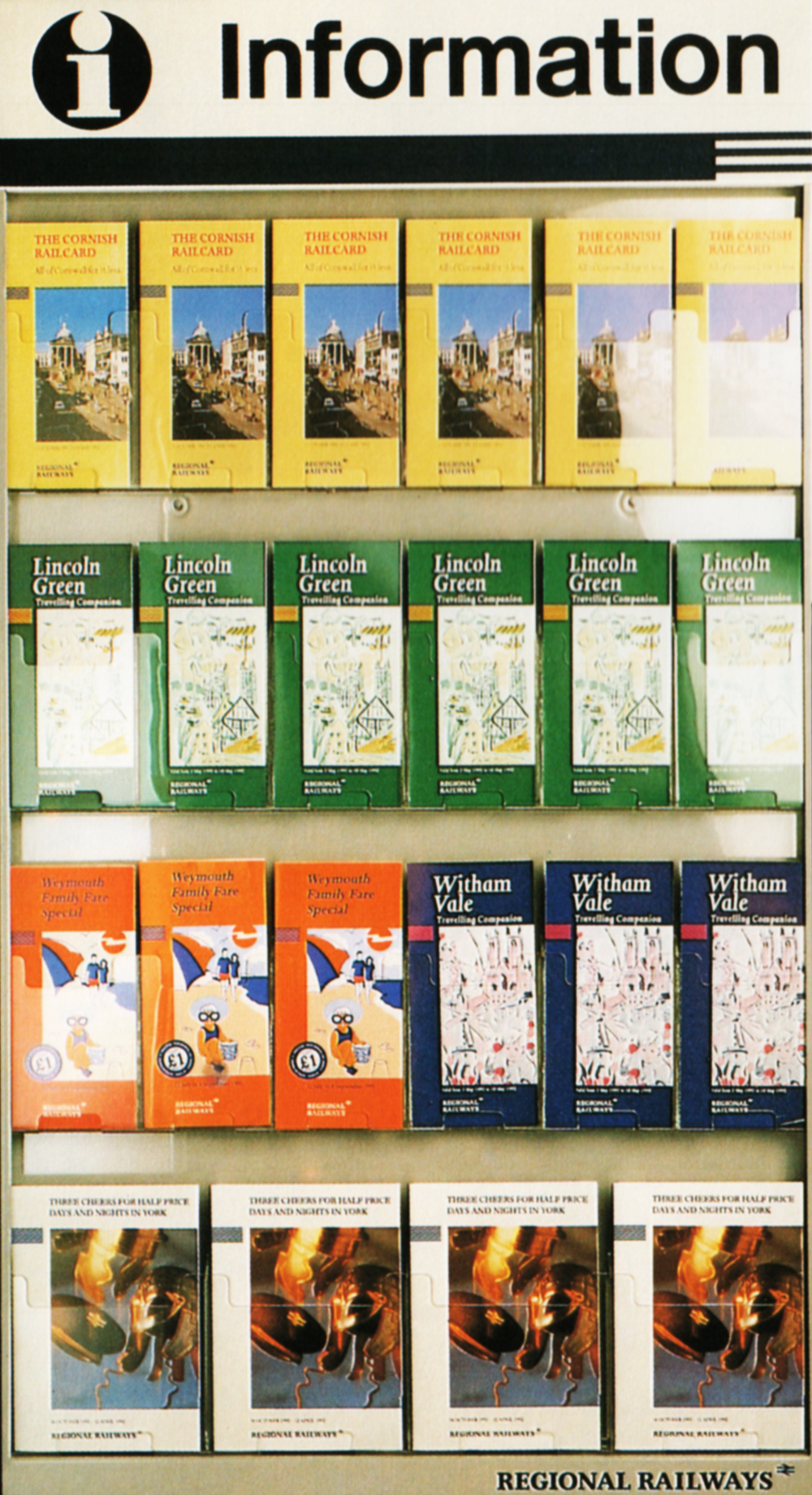
The house style is
clearly in evidence
giving a strong
family likeness
across all
promotional
literature.
A specially designed
rack allows a good
display of leaflets.
The grid allows for full
bleed pictures or all
text as appropriate.
Approved national
campaign devices or
line images are used
in place of the
fleximark where
appropriate but the
strong house style is
retained.
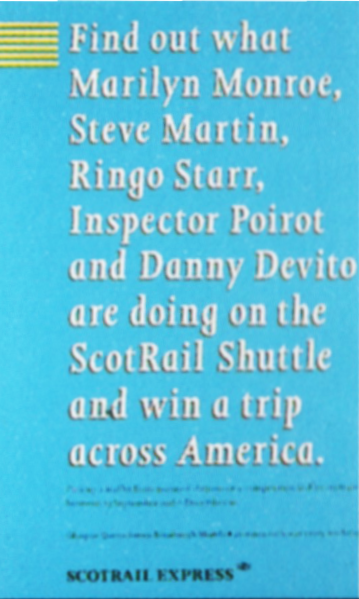
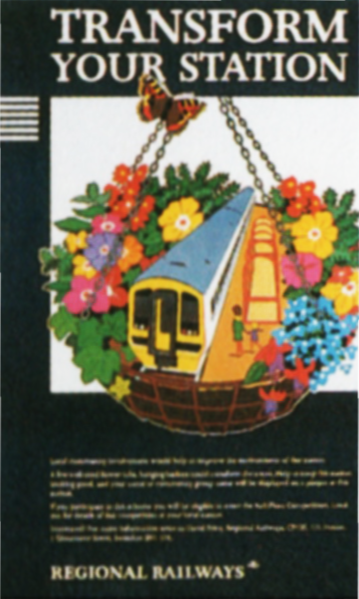
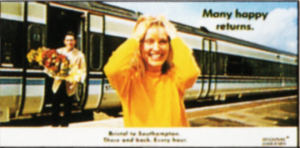
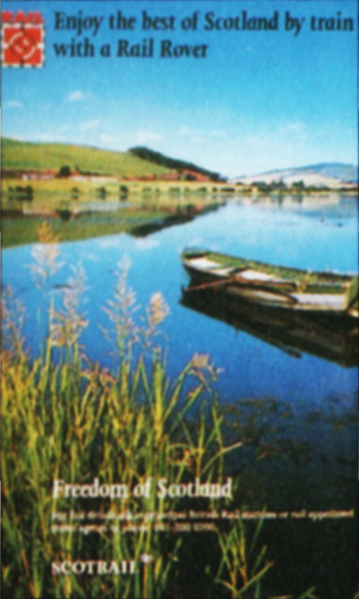
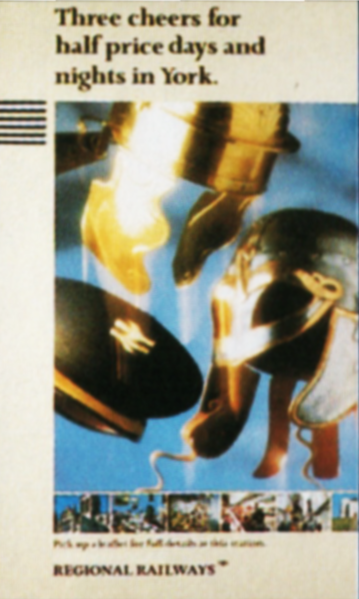
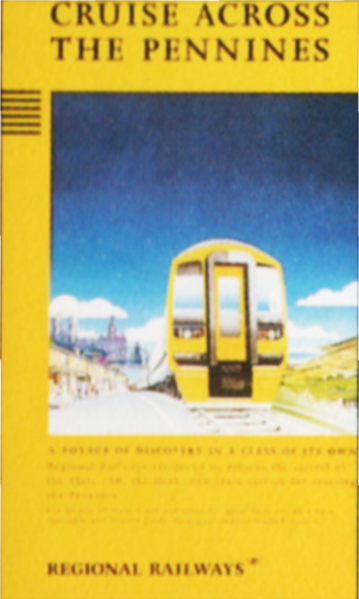
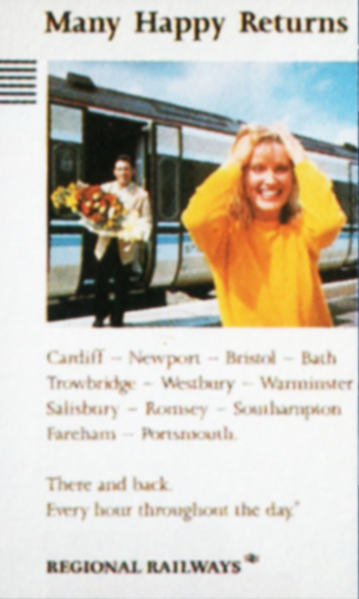
48-sheet poster
campaigns can be
translated into a
station poster
format.
The fleximark,
strong left margin
and Joanna
typeface provides
the family likeness
across posters.
Appropriate
background
colours can
enhance and make
the posters more
eyecatching.
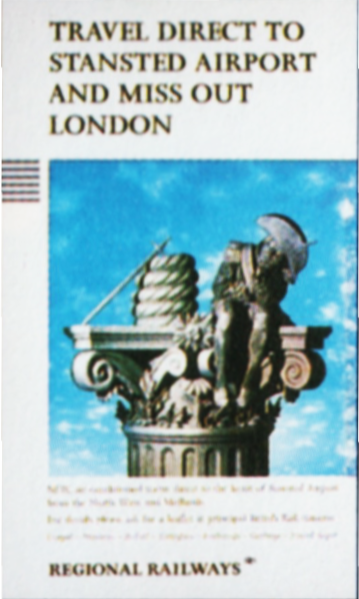
If agreed with both
parties, major
sponsor
acknowledgement
may appear at the
bottom of the print.
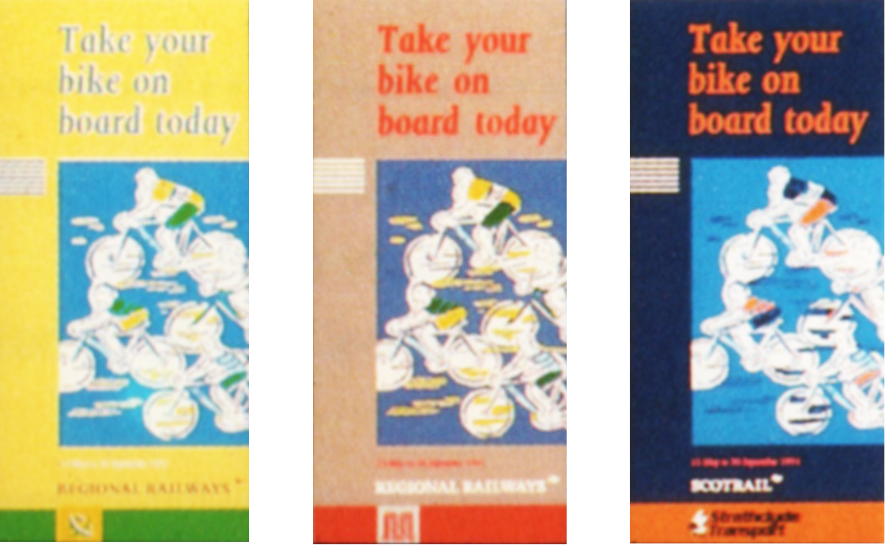
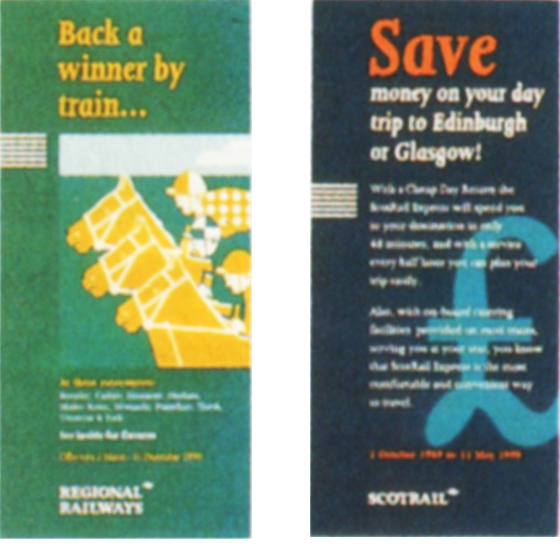
Text on leaflets may
be incorporated into
the house style
instead of or in
addition to
illustrations.
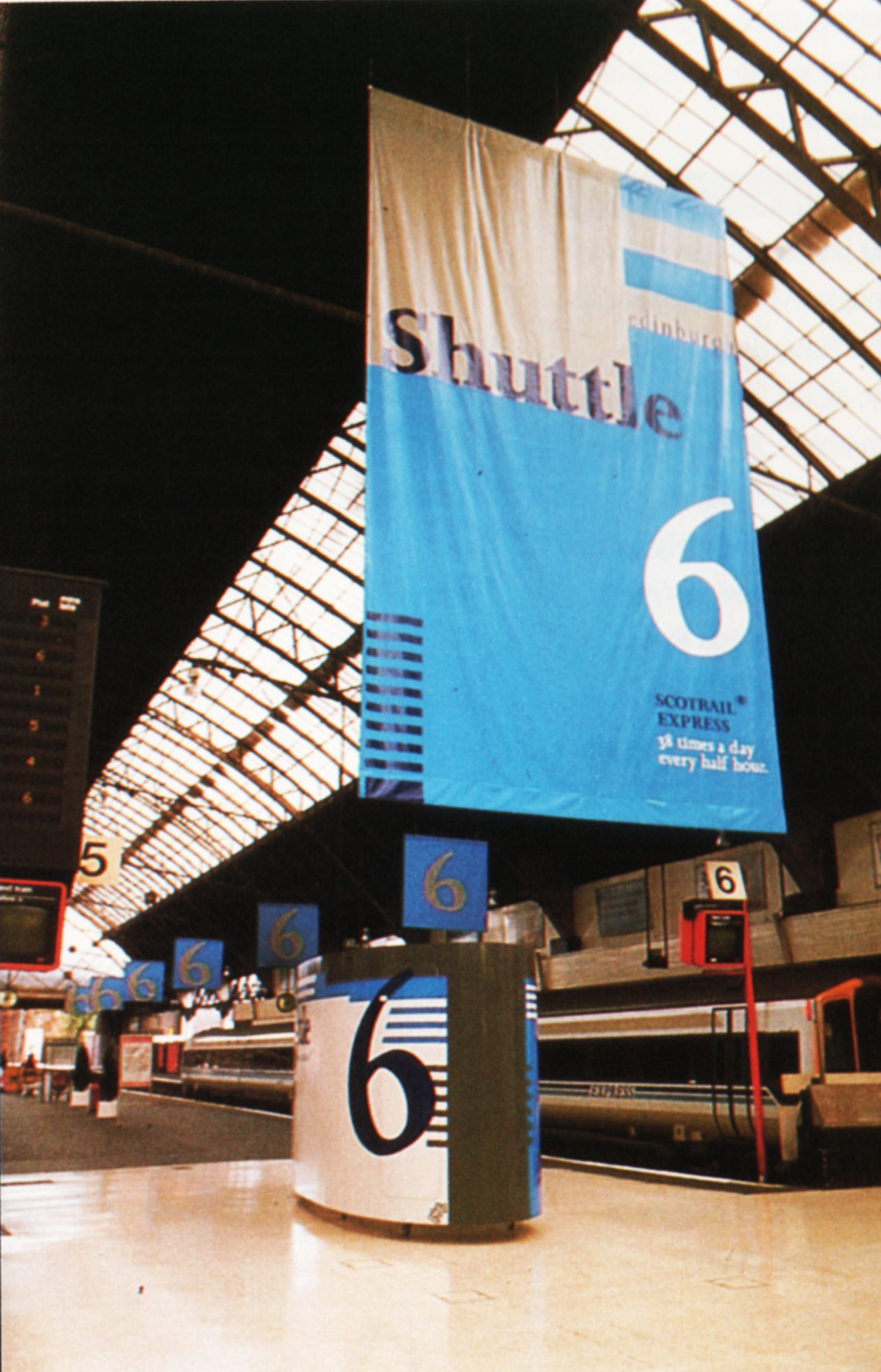
The fleximark looks
good on all aspects
of the business,
including the caravan
used for special
promotions in the
North East.
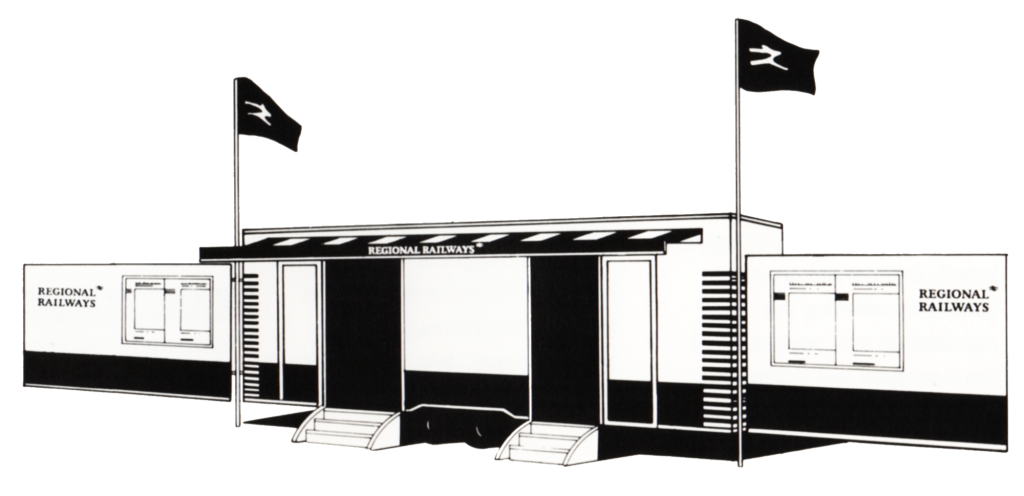
The fleximark and
house colours may be
used creatively for
special promotions
such as the banners
for the launch of the
new ScotRail Express
shuttle service.
Communication policy for promotion – a brief summary

Signing policy – a brief summary

Typefaces
Joanna, the typeface chosen for promotional material, has researched well, being seen as friendly but legible. A full list of the approved Joanna typefaces is available in the Identity Management binder.
Promotional literature
For promotional literature a consistent style is an advantage as a little of the excellence of one offer may easily rub off onto another, as long as each of them is recognisably part of the whole. The message that we want to give to our customers is that Regional Railways consistently brings quality offers to their attention. All Regional Railways and ScotRail promotional literature must therefore conform to the house style.
Our grid is based on a strong left hand margin from which all text, illustrations and branding are ranged. All text on the cover must be in an approved Joanna typeface and there are strict guidelines covering the appearance and positioning of the logotypes and fleximark. Bright background colours are preferred so that the public can more easily distinguish promotional from informational print.
Promotional posters
All of the above principles apply equally to posters with one additional option. For exceptional cases the grid for posters allows for a ‘full bleed’ option (ie the picture covers the entire sheet) where photographic subject matter requires this treatment.
Full guidelines for the production of promotional print can be found in the Identity Management binder.
Sponsor recognition
Where appropriate Regional Railways wishes to acknowledge the financial support of PTEs and other major sponsors on print. This is achieved by the addition of the sponsor’s symbol and/or logotype in a specific area at the bottom of the print item.
PTEs automatically have agreement in principle to appear on certain Regional Railways print items (promotional leaflets and posters, timetables, departure sheets, maps). We realise that many PTEs already have their
own print style and existing visual solutions will stand until both parties agree to change.
Other major sponsor marks may only be applied after the principle has been approved by the Director, Marketing & Planning, via the Regional Railways Marketing Team.
Any other contributors, and multiple sponsors, should be acknowledged within the text, preferably on the inside pages or back cover when appearing on leaflets.
Line images
If an approved line image is to be promoted, the ‘woodcut’ style illustration will take the place of the fleximark and the name of the line (eg Settle-Carlisle Line) must always appear in the title on both literature and posters. An appropriate dark colour is selected as an integral part of the line image and this should be used, where possible, as the background colour.
National campaigns
Where a device or symbol has been created to denote a national campaign, such as Rail Rovers, it may be used in place of the fleximark on the relevant promotional posters and leaflets following ratification from the Identity Working Group on Print.
It will follow the same principles as for line images.
Special promotions
Occasionally there will be special one-off promotions which require the use of the fleximark in a creative way, such as on banners for special events. It is vital that the fleximark and Regional Railways or ScotRail logotype is used correctly. Please contact the Identity Manager for help, advice and approval.
Working group
The Identity Working Group on Print meets regularly to assess, approve and review the application of identity on print, ratify the use of national campaign devices and approve the design for line images. A list of the current members can be found in the Contacts pages at the back of this brochure.
communicating information

- Timetables
- Departure sheets
- Maps
- Destination labels
- Posters
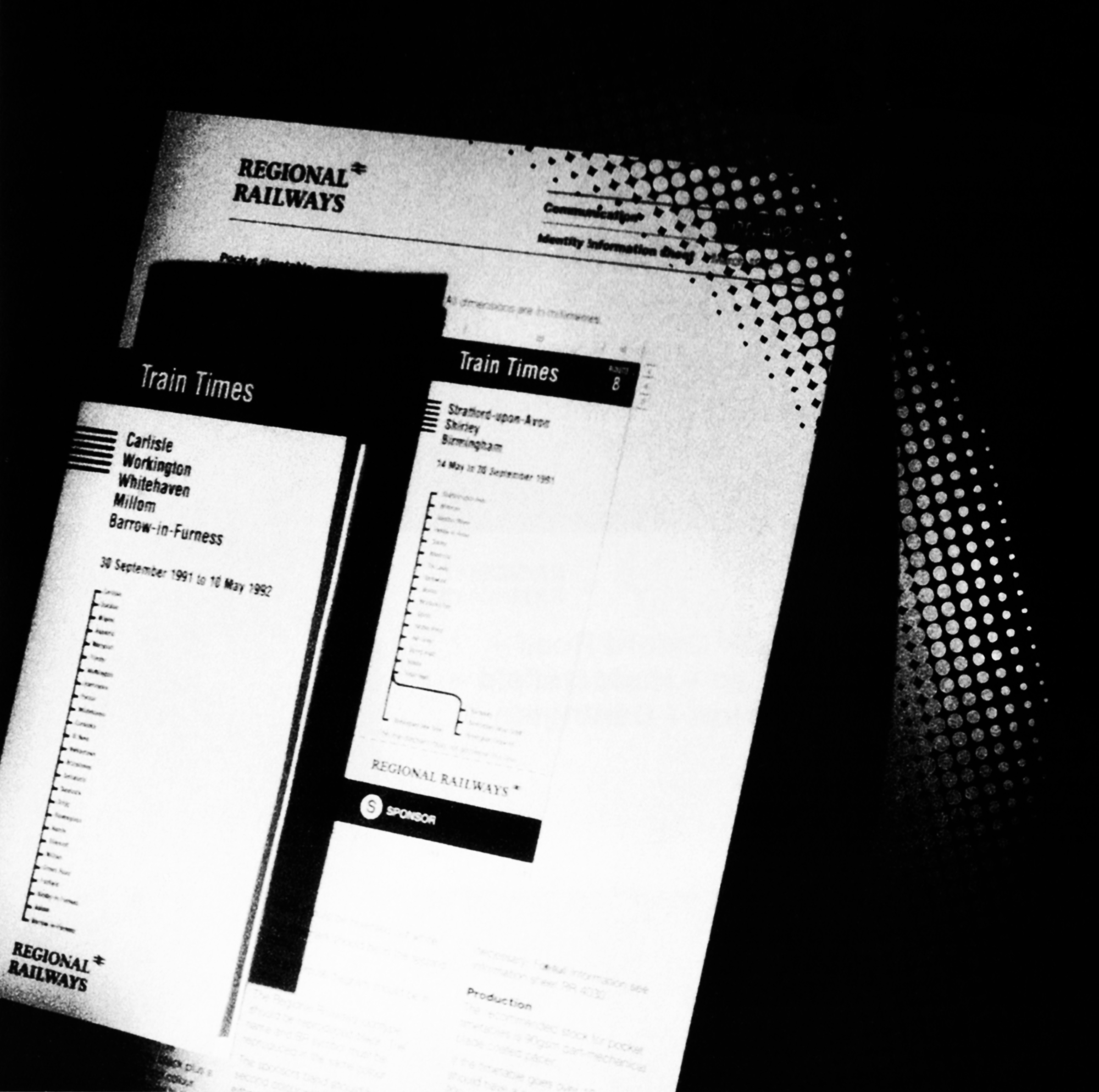
Regional Railways will maintain the British Rail tradition of using the Helvetica typeface to provide its customers with all essential information. It is exceptionally clear and the travelling public is well used to it.
There must be a sharp distinction between information posters and those with a promotional message. The difference must be obvious to the untutored eye. This is one very good reason for using Helvetica to convey information and Joanna to promote ideas. The wording on an information poster also needs to be unambiguous and positive in tone. For example: “As part of our programme to improve the service between X and Y, we shall be undertaking engineering works during the coming six weeks. We regret any inconvenience this may cause” rather than “We regret that due to engineering work, services between X and Y will be disrupted for the next six weeks”. A separate binder on corporate information posters has been produced to help standardise and improve messages to our customers.
A thorough research programme has shown that the great majority of the public prefers a timetable in the form of a booklet with a stapled spine, showing the particular route in linear form on the cover. The Regional Railways pocket timetable will follow that format throughout the network. There is a marked similarity to the InterCity timetable and that is to our mutual advantage since customers will be at ease with both. There are also options for network guides and route cards. There will be two kinds of departure posters, the familiar A-Z listing that is posted at all big stations and the line-of-route departure sheet which will be posted at all the stations along that particular route
The printed destination panels applied to the windows of the rolling stock are an essential part of the process of reassuring travellers. The design, printing and application of these items alone justify a number of information sheets within the Identity Management binder to cope with advice on short platforms, request stops and coach identification, as well as an adapted design for plug-door stock such as the new Class 158.
Maps are essential. There are two types: one to be displayed on the stations in the information structure and another to be posted inside the carriages within specially designed frames. There is a special format for each type to make sure that the style, headings and use of branding as an endorsement is consistent. This is an organisation that is coherent and systematic in its approach to every facet of its operation.
communicating information – publications

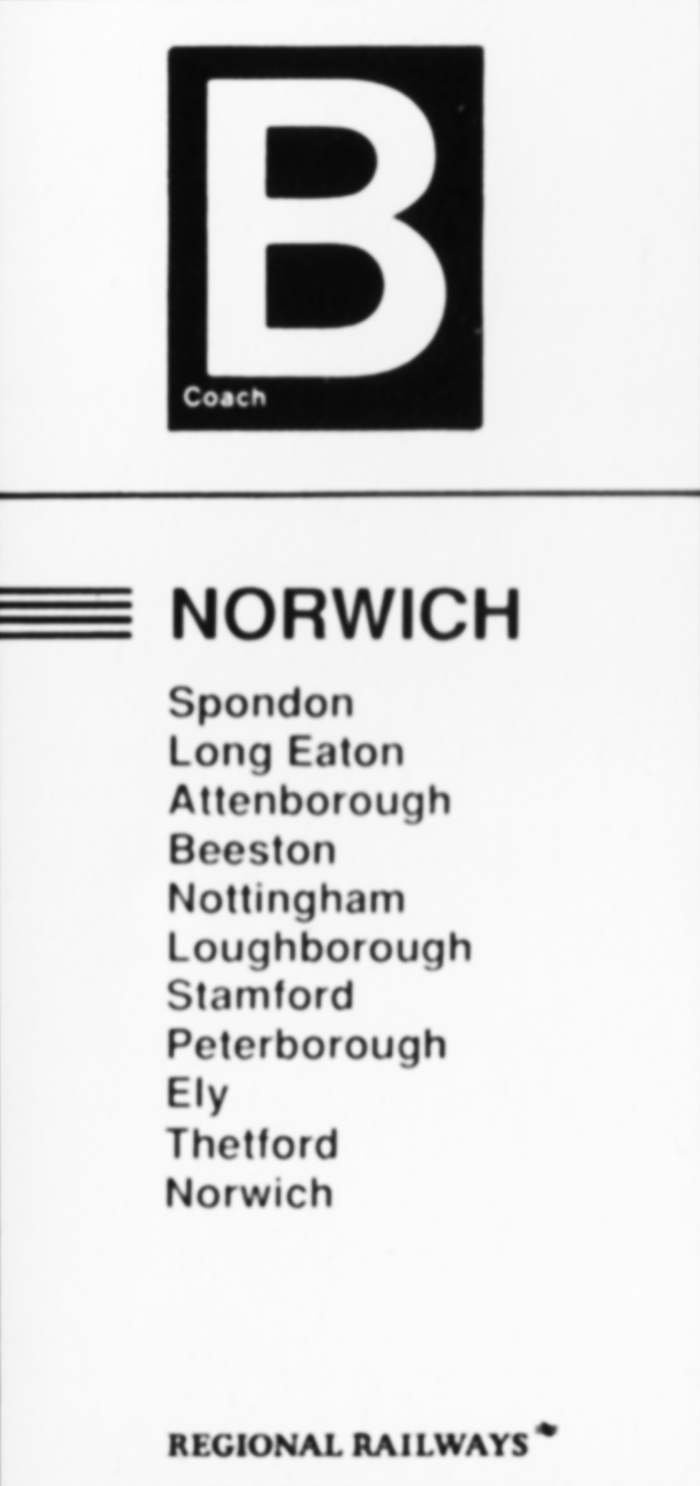
A separate
publication gives
details about how
to get hold of, or
produce corporate
information posters
and how to cope
with emergency
notices.
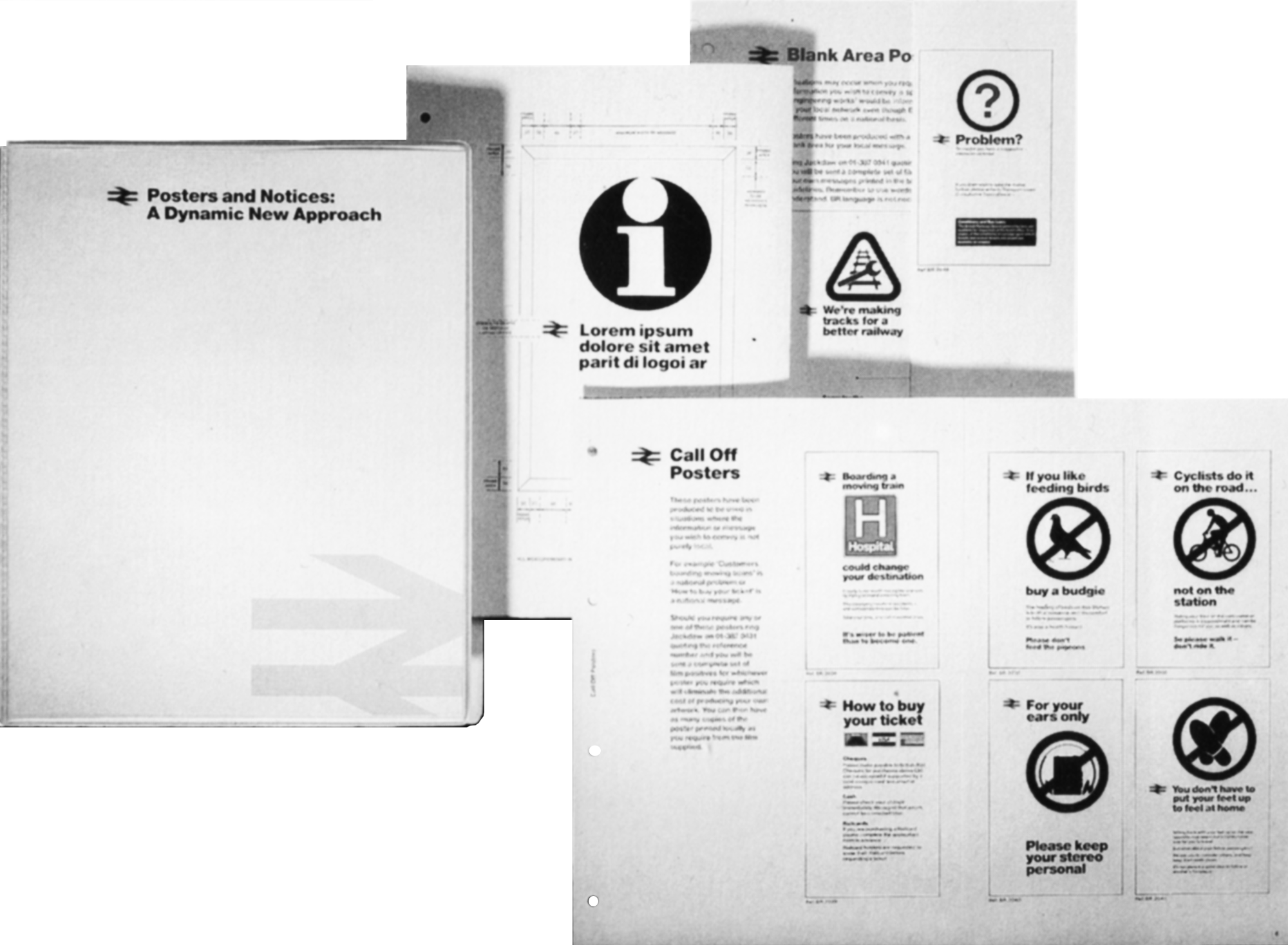

Destination labels
have been carefully
designed to give
maximum legibility
for the information.
They can also
incorporate
request stops and
short platform
advice.
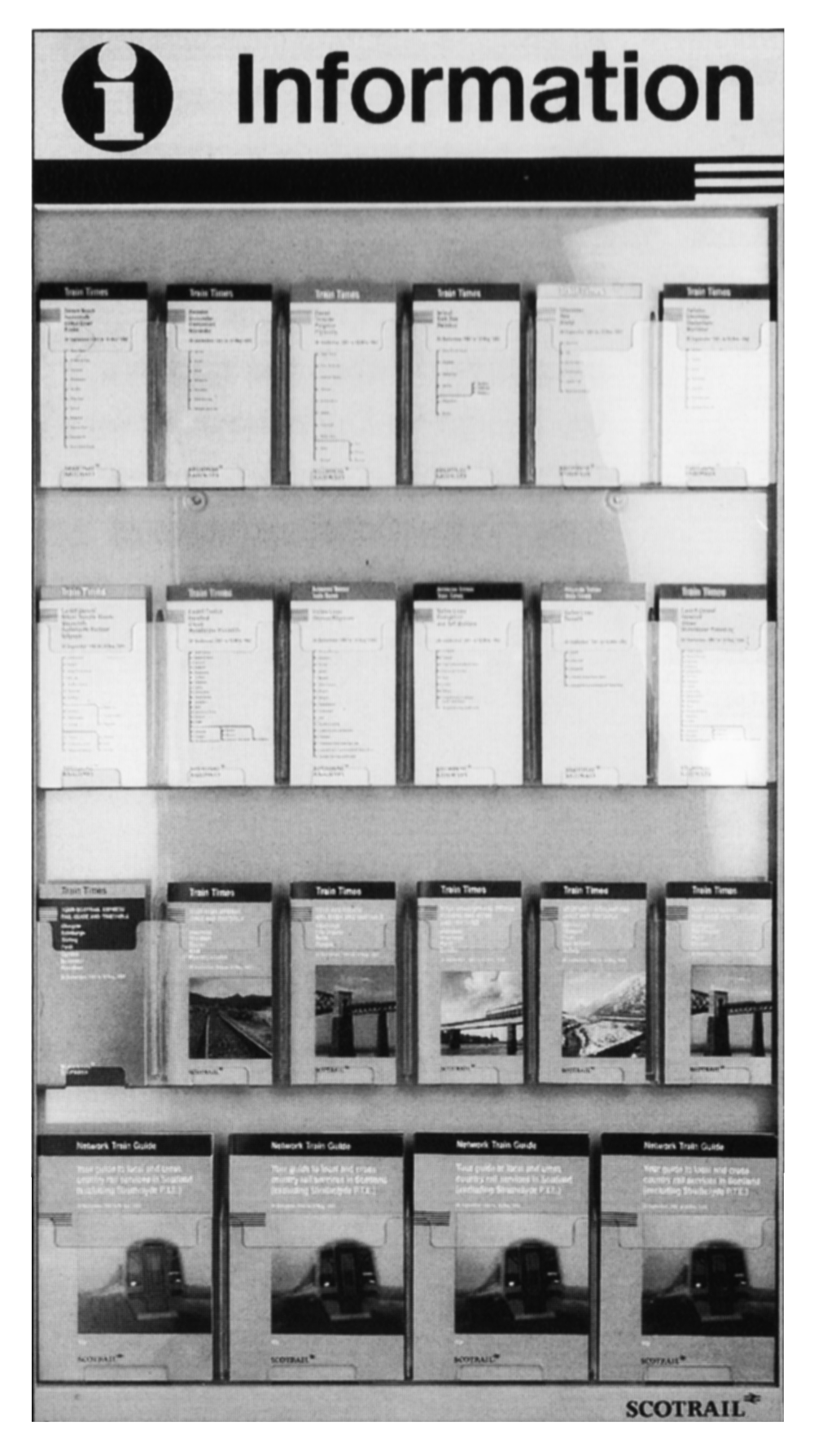
Regional Railways
and ScotRail
timetables
displayed in the
specially designed
leaflet rack. Shown
here are examples
of pocket
timetables and
network guides in
the strong
house style. Route
cards will also be
available.
The new format of
pocket timetable
was chosen after
national research
and feedback from
all parts of the
business. It
incorporates
customer-driven
improvements
such as simple
tables and notes
on every page.
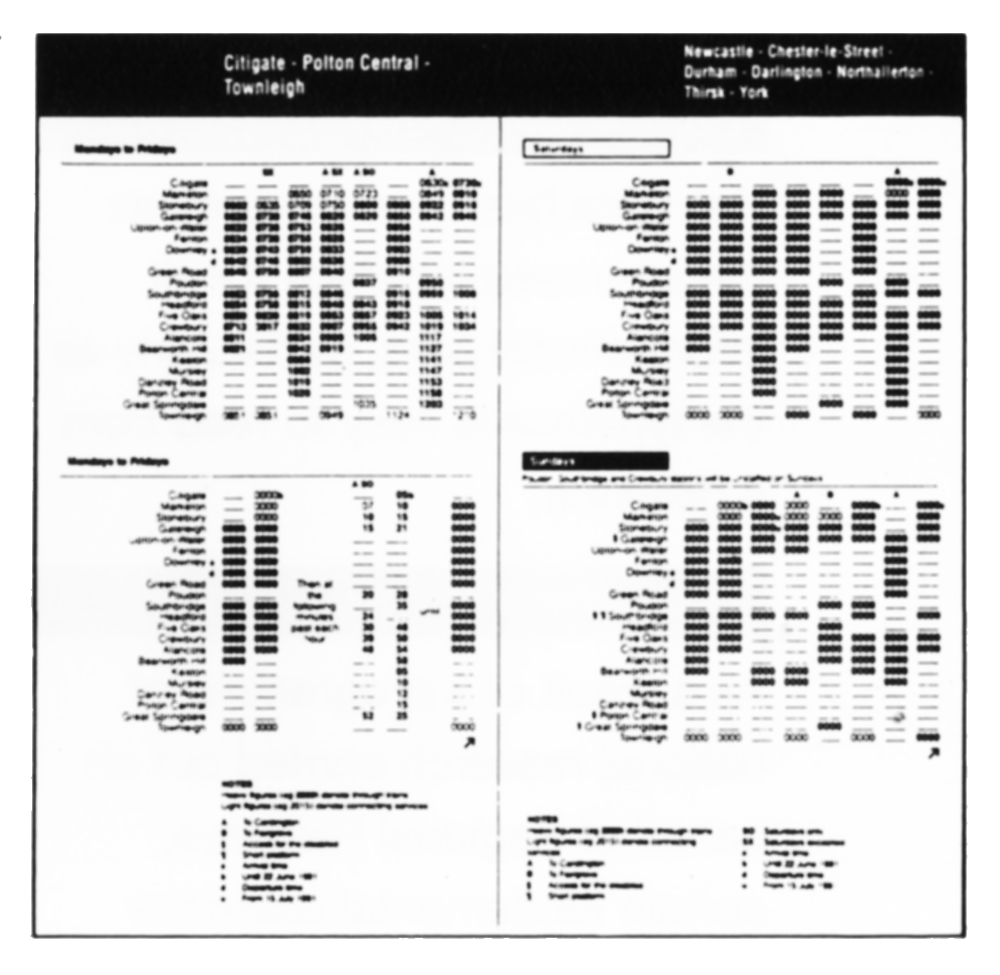
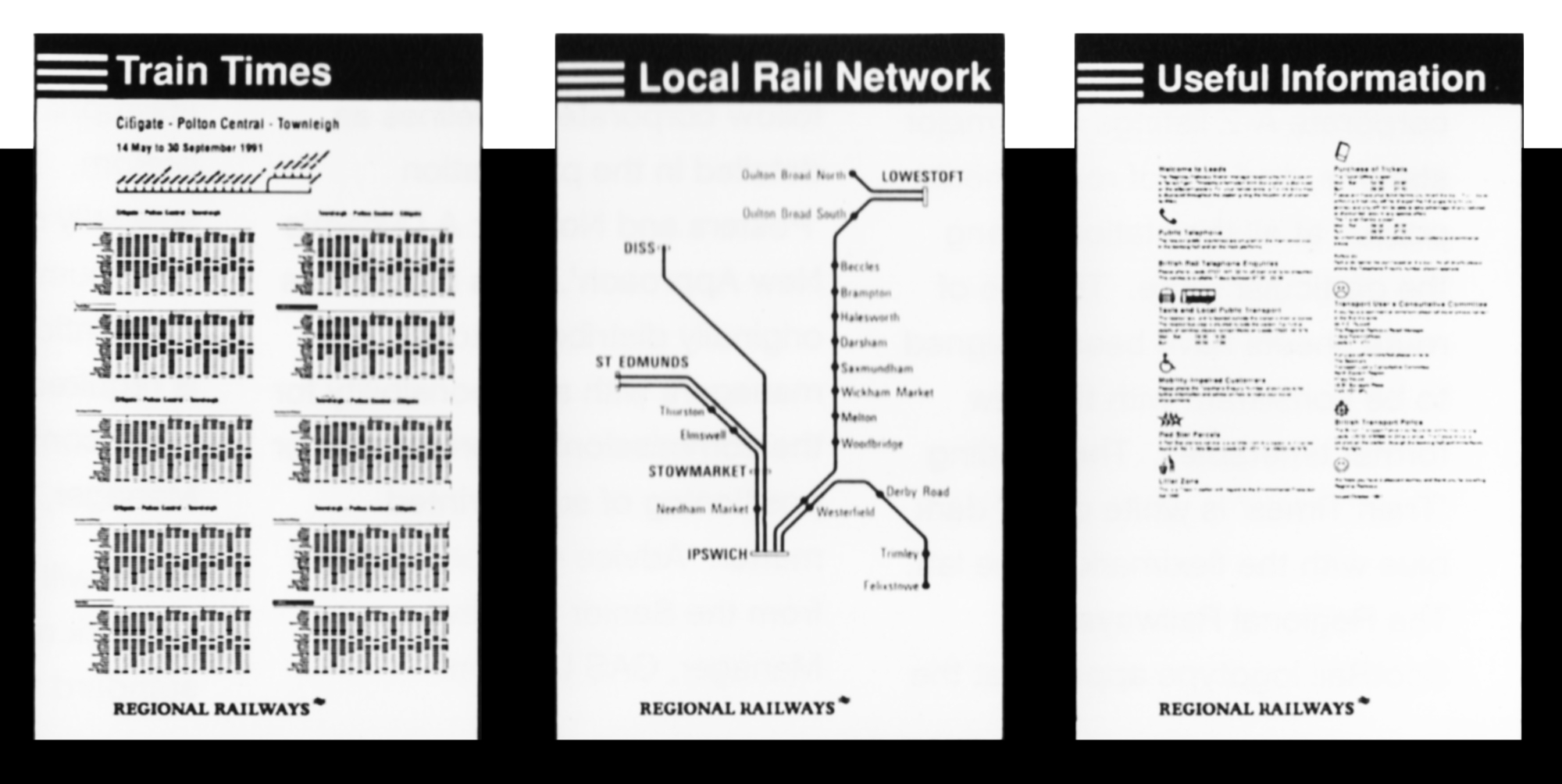
A modular
information
structure has been
specially designed
to take departure
sheets, maps and
other useful
information. All
informational print
uses the helvetica
typeface for clarity.
Communication policy for information – a brief summary

Communications policy for information – a brief summary

Typefaces
Helvetica has been retained as the approved typeface for all informational print, particularly as the typeface is easy to read from a distance.
Timetables
As a result of a programme of national research carried out on behalf of Regional Railways, certain fundamental customer requirements have been identified with regard to timetables; notes on every page, simple table styles, timetables looking like information rather than promotions, stapled booklets, inclusion of a route diagram and/or network map, black on white copy. All have been incorporated into the new format which is consistent throughout Regional Railways.
There are three pocket timetable formats: line of route, region guides and particular service guides such as ScotRail Express. The covers of all feature the strong family style. The inside format, as well as the covers, has been designed to reflect the customers’ requirements.
Line of route pocket timetables are the simplest of the formats. They generally carry information relating to one main route and its spurs. Region guides provide information relating to a group of lines in one area, while the ScotRail Express leaflets give details of all the 158 services in Scotland.
Network guides and route cards are also available and follow the same ‘family’ guidelines. The network guides cover coherent local networks such as the North West while, at the other end of the scale, route cards give the simplest information relating to journeys between two or three stations only.
Departure sheets
There are two types of poster: corporate A-Z listings at all major stations, and line of route sheets posted at all the stations along the particular route. The line of route sheets have been designed to be consistent with the new format timetables. The heading ‘Train Times’ is white out of dark blue with the fleximark to the left. The Regional Railways or ScotRail logotype appears at the bottom, with other major sponsor’s mark if appropriate.
Information posters
A specific ‘Useful Information’ poster has been designed to complement and be posted next to departure sheets. This features the heading in a dark blue band with the fleximark to the left and Regional Railways or ScotRail branding at the bottom. The information contained in these posters relates to either a specific line of route or can be tailored to specific stations and includes such subjects as local public transport and taxis, public telephone positions, Red Star parcel facilities and the address of the Transport User’s Consultative Committee.
Other information posters should follow corporate guidelines as detailed in the publication ‘Posters and Notices: A Dynamic New Approach’. This binder was originally distributed to all managers with a responsibility for the commissioning, production or positioning of such printed matter. Advice may be obtained from the Senior Creative Manager, CAS London.
Destination labels
The labels feature the fleximark, Regional Railways, ScotRail or ScotRail Express logotype, the destination and a list of calling points. Important factors such as short platforms or request stops can also be highlighted and coach identification added as necessary. Information sheets covering all permutations can be found in the Identity Management binder.
Maps
There is a format for single size (Double Royal) and double size (Quad Royal) map posters for use on stations. The heading is in white on a dark blue band with the fleximark on the left. Regional Railways or ScotRail branding, and a sponsor’s mark where appropriate, is featured at the bottom. The format has been specially designed to give the maximum area for map information. All map information is required to be in the standard style, contact Senior Advertising Manager, London for details.
There will also be a range of network maps for use within the standard frames on trains.
Contact the Design Manager for details.
Working group
The Identity Working Group on Print meets regularly to assess, approve and review the application of identity on print, ratify the use of national campaign devices and approve the design for line images. A list of the current members can be found in the Contacts pages at the back of this brochure.
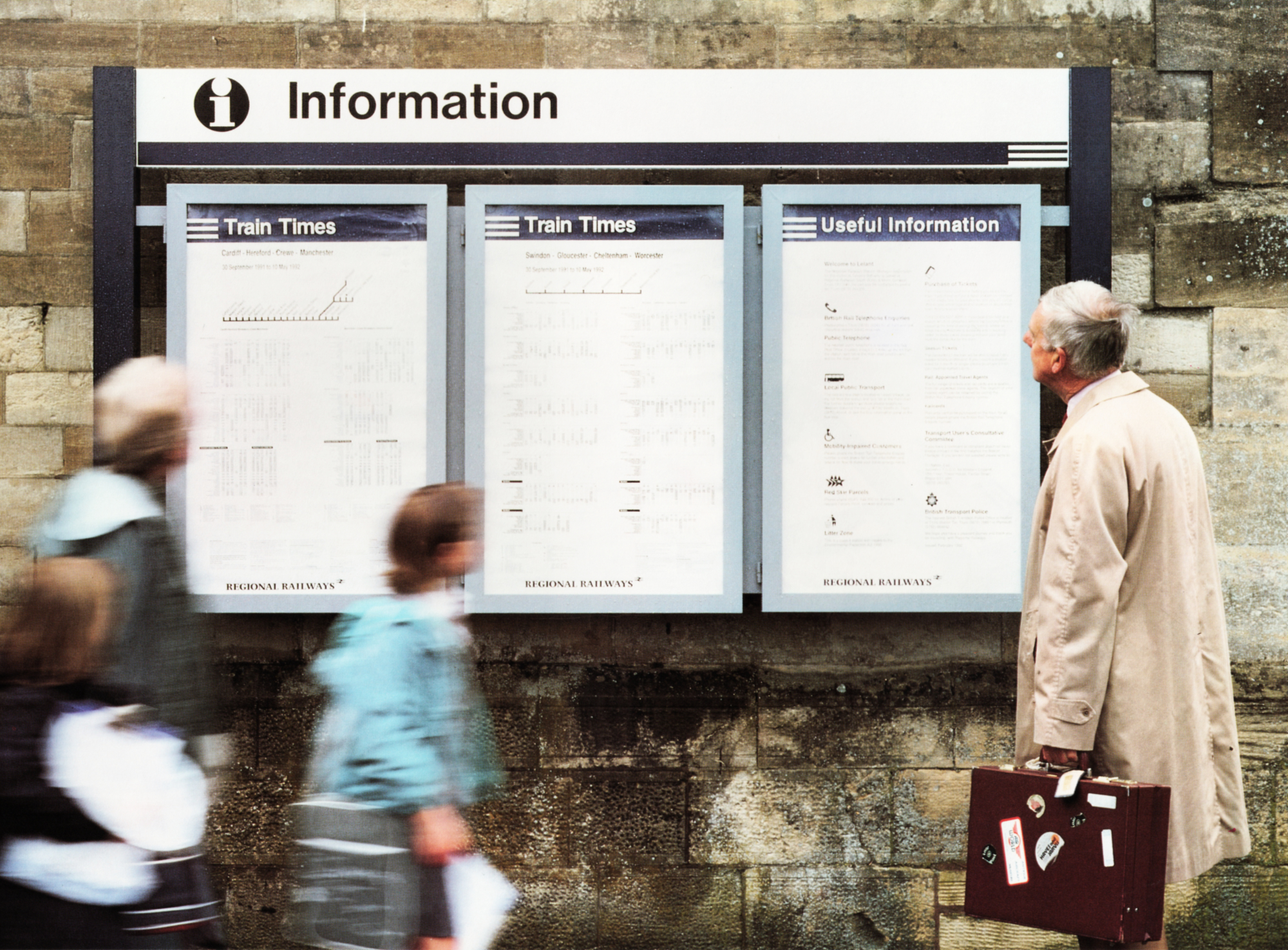
stationery


- Stationery range
- Paper quality
- Pocket folders
- Internal documentation
- Ordering
The people who make daily use of Regional Railways stationery are the secretaries. We asked them to pinpoint any problems they had encountered with Provincial stationery so that we could find ways and means of overcoming them. The typing guide information sheet which can be found in the Identity Management binder, for example, is based directly on their experience.
The Regional Railways external letterhead is clear and direct in style. The fleximark plays its role as the linking family characteristic: it is also the guide mark to show a) where to start typing or printing and b) how far one should fold the lower third of the page so as to align the address correctly in the window envelope. The internal letterhead carries only the logotype and the fleximark. It is also intended as a continuation sheet for external letters and for writing reports, another sound idea from the secretarial staff.
There are no anonymous initials on the business card nor the telephone directory. Staff use their preferred first name. It is a move that is in step with the times and it simplifies identification and communication. The front of the business card provides the information needed by contacts outside Regional Railways and indeed outside British Rail itself. Staff can also use the back to provide details of internal addresses for people inside the business or an alternate location or their home address for people outside the business. Staff in Wales can have double-sided business cards: Welsh on one side, English on the other.
The entire range of Regional Railways’ stationery includes fax header sheets, memo pads, folders, and covers for internal publications. They are all designed meticulously. In terms of the overall investment, properly designed stationery is not expensive. However the return on such attention to detail is incalculable. An organisation that takes this kind of care when presenting one part of itself to another, or when presenting itself to outsiders, is an organisation prepared to take care of every part of its operation.
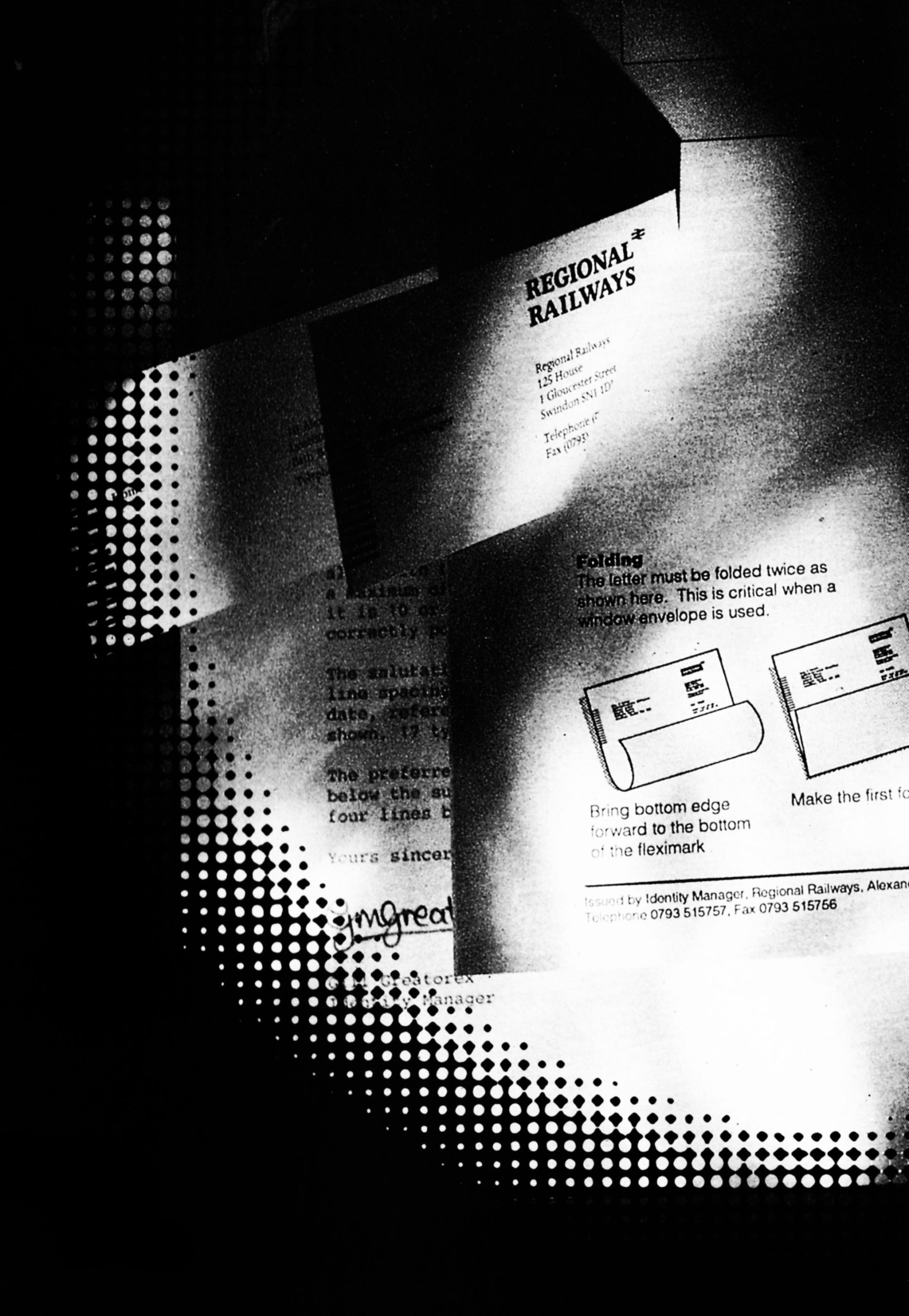
stationery – examples

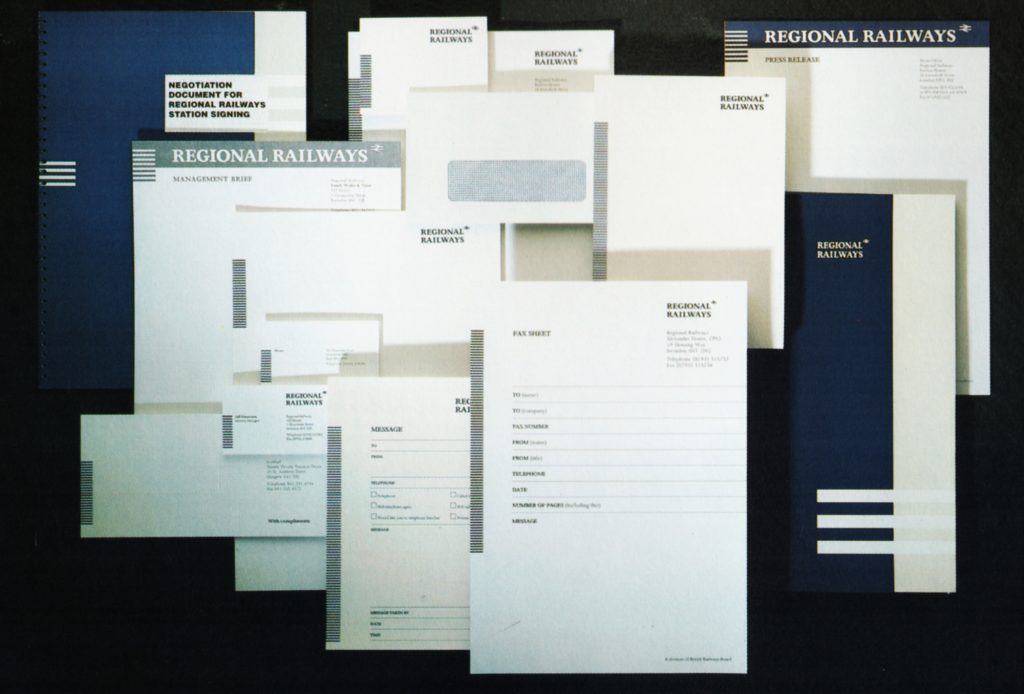
Most of the items
in the stationery
range are available
on a call-off
contract. See
contracts section
for ordering
details
- External Letterhead
- Compliment Slip
- Business Cards
- Envelope for external use (also available without window)
- Headed paper for internal communication, continuation pages for external correspondance or reports
- Fax Header Sheet Pad
- Memo Pad
- Telephone Message Pad
- Adhesive Desk Memo Pad
- General Presentation Folder
- Press Release Headed Paper
- Management Brief Headed Paper
- Standard Document cover
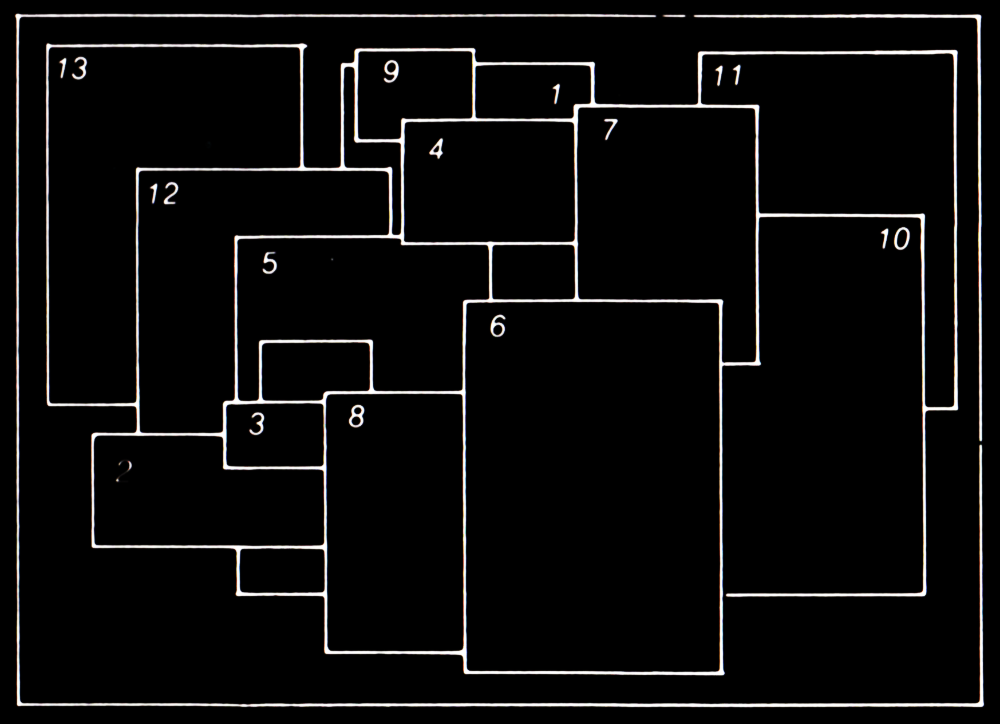

Preferred first
names are used on
business cards.
And there is
provision for
internal details,
alternative locations
or home addresses
on the back.
For locations in
Wales, double-
sided cards are
provided with
Welsh on one side
and English on the
other.
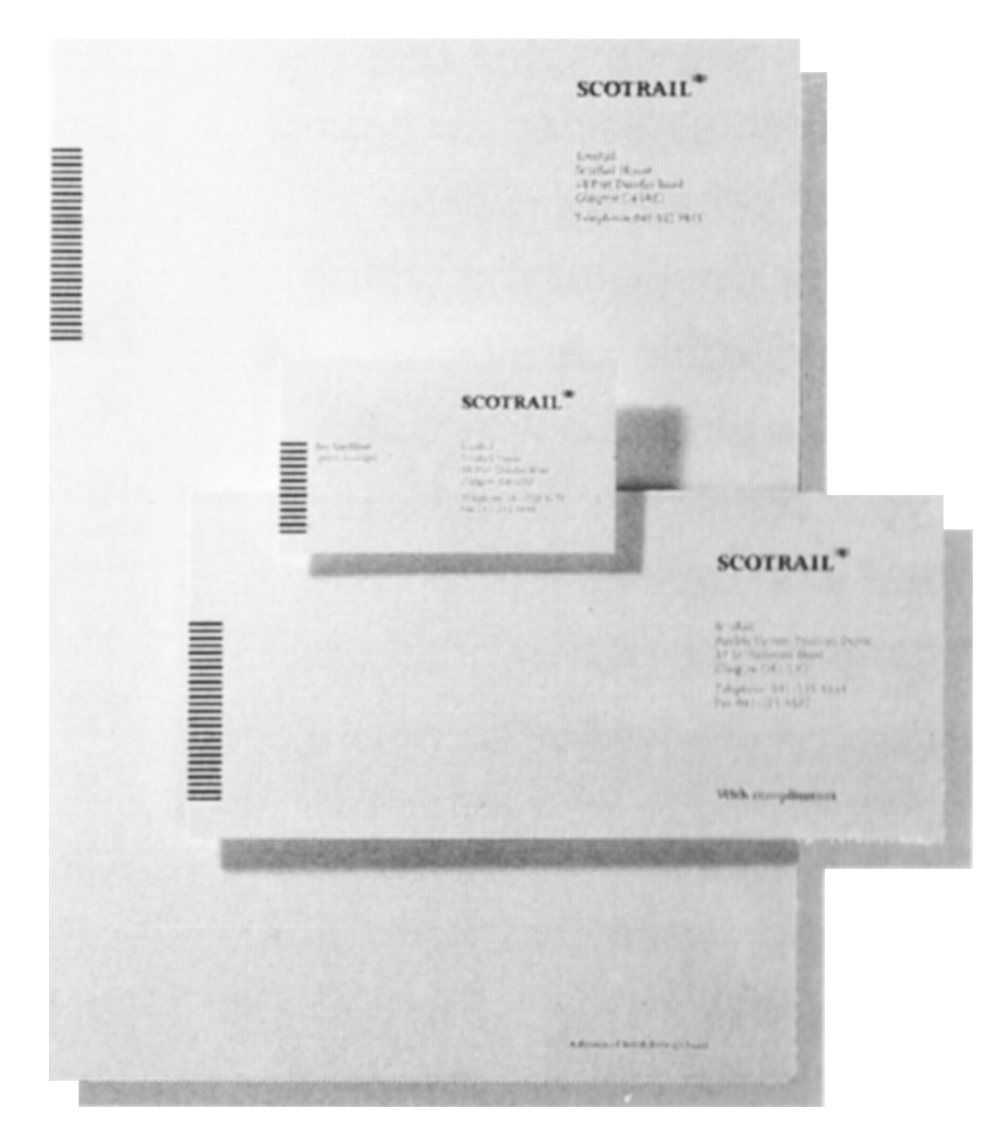
The ScotRail
logotype is used
instead of
Regional Railways
on all ScotRail
stationery items
but the design is
identical.
Personalised
stationery is
reserved for the
Managing Director
and profit centre
Directors only.
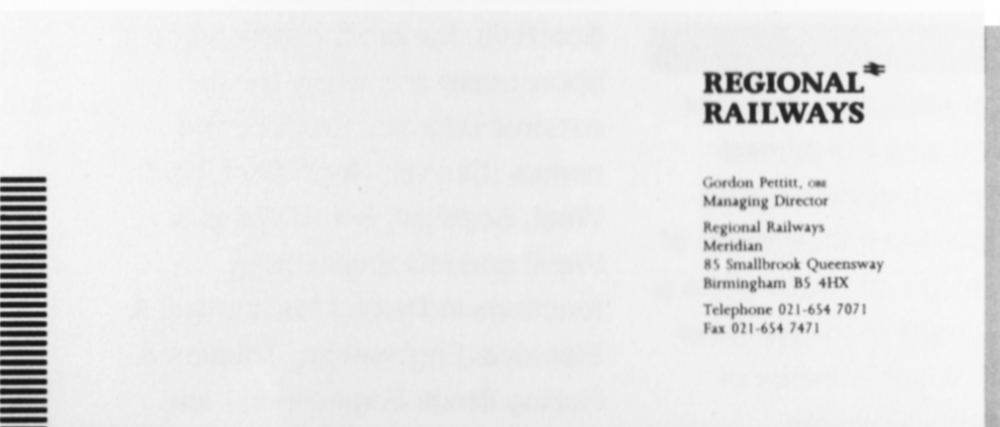
All details are
important. Such as
the correct folding
procedure to
ensure the
addressee details
are fully visible
when put into a
window envelope
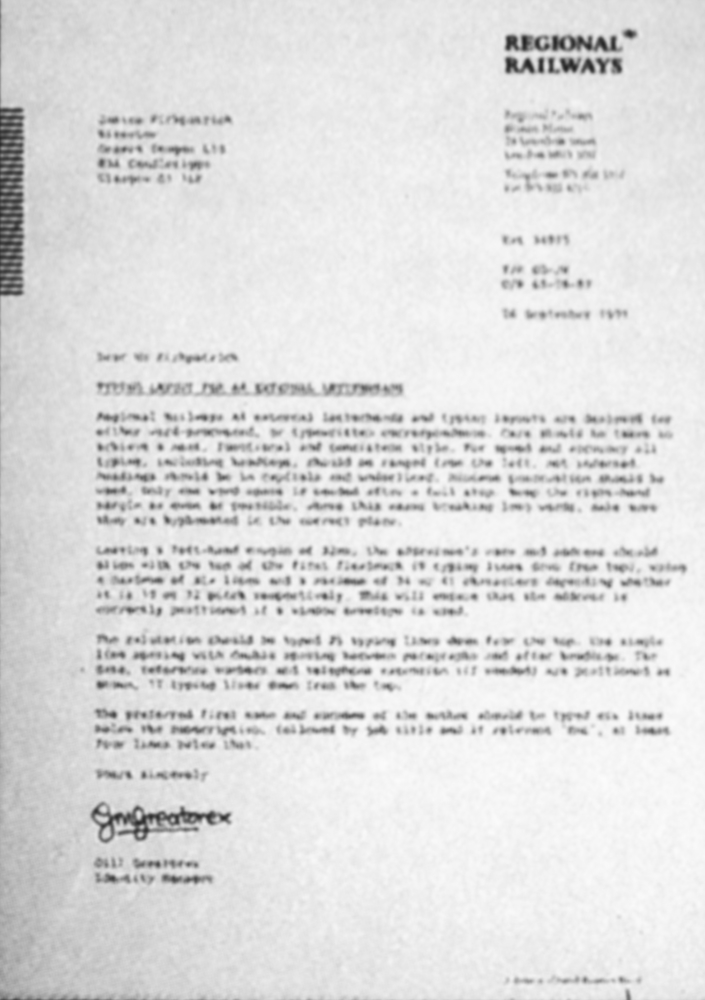
The way letters are
typed was carefully
considered when
the new stationery
was designed.
There is a typing
layout for both
external and
internal
communications.
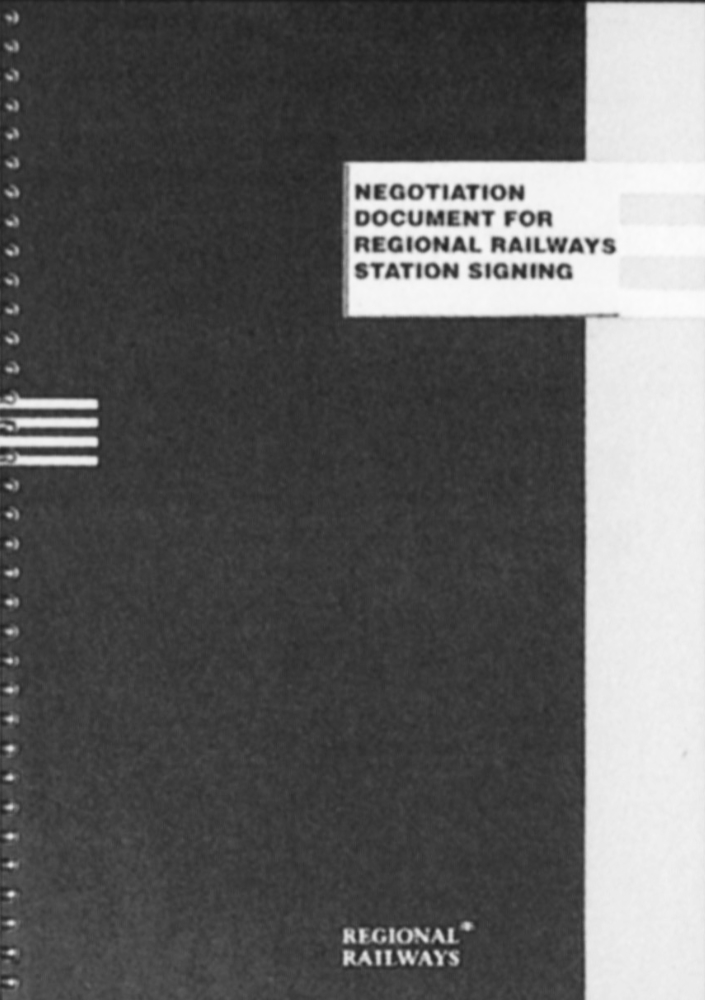
There is a house
style for all types
of document cover
including a general
purpose window
cover which is
available on call-
off contract.

Stationery policy – a brief summary

Stationery policy – a brief summary

Stationery range
We recognise that good stationery reflects an image of quality on the company that uses it and one of the main requirements of good stationery is that it should be easy and convenient to use.
The range of stationery designed for Regional Railways comprises letterheads, compliment slips, business cards, envelopes, headed paper (for internal correspondence or continuation pages for external letters or reports), fax header sheets, memo and telephone message pads, adhesive desk memo pads, window covers for internal documentation and folders.
All items feature the fleximark, the Regional Railways or ScotRail logotype and the main house colour, Regional Railways dark blue. The use of each item was carefully investigated before the design was chosen.
Paper quality
Appropriate paper is a valuable method of projecting a quality image. For external letterheads Conqueror brilliant white wove 100 gsm has been chosen. The headed paper for use with internal correspondence and as continuation sheets for external letters is less expensive while still visually matching Conqueror.
Cost effective paper has also been chosen for items such as memo and message pads. The type of paper is carefully matched to the item’s function; for example, fax header sheets which use non-slip paper of the correct weight for fax machines.
Stationery contracts are awarded on the basis of quality and cost by the Director of Procurement. When the contracts come up for renewal the paper will be reviewed. It is intended that Regional Railways will switch to recycled paper when the quality and price are acceptable.
Typing layouts
The design of stationery does not begin and end with the printed logotype. An appropriate typing layout provides the final element of the overall design and adds up to a total quality image in the hands of the recipient, whether inside or outside Regional Railways.
The typing layout is also designed to make life simpler for the people who have to produce the letters. A briefing session for Regional Railways secretarial staff produced valuable input which has enabled us to produce an improved layout that can cope with such aspects as long reference numbers.
Information sheets in the Identity Management binder cover typing layouts for internal and external letters. For copies of the typing layouts and letter folding instructions please get in touch with your profit centre stationery contact who can be found in the Contacts pages of this brochure.
Letterheads/compliment slips
There is a standard formula for printing addresses on letterheads and compliment slips. The first line holds the approved department name, if required, followed on separate lines by the name of the business (Regional Railways or ScotRail), the profit centre name if appropriate and finally the full external address. Profit centre names (Central, North East, North West, ScotRail, South Wales & West) and HQ Engineering functions in Derby (Mechanical & Electrical Engineering, Traction & Rolling Stock Engineering) are printed in bold.
The Regional Railways Executive Group have agreed that there will be no personalised stationery other than that for the Managing Director and profit centre Directors. The description ‘personalised stationery’ includes addresses beginning with titles such as ‘Civil Engineer’ or ‘Retail Manager’ rather than ‘Civil Engineering’ or ‘Retail, and as such will not be acceptable.
Business cards
Regional Railways is the first sector to recognise that there are two audiences for business cards; audiences outside British Rail and BR staff external to Regional Railways. Accordingly the front of the business card has only external information while there is provision on the back for internal information such as CP numbers, BR telephone numbers and micromail. Internal and external information should not be mixed.
As an alternative to internal information it is possible to have a home address or alternative location on the back of the card. Staff in Wales may have double-sided cards; Welsh on one side, English on the other.
Continuous stationery
This is available through McVicars Printers, Glasgow. The design is exactly the same as for ordinary letterheads and headed paper.
Internal documents
Layouts have been created for a range of internal document covers. They comprise single sheets with and without windows, folded covers with and without spines and encapsulated ring binders. All feature the fleximark, Regional Railways or ScotRail logotype and the house colours of dark blue and silver grey.
Ordering procedure
Pocket folders, adhesive memo pads and all internal documentation covers, apart from window covers, are available through the Senior Advertising Manager, London or your profit centre Print Manager. Window covers are ordered direct from Willsons Printers. All other stationery items are available on call-off contracts currently held by Willsons Printers, Newark, and by J.McVicars Printers, Glasgow, The addresses and telephone numbers can be found in the Contacts section of this brochure. Copies of the contracts are available from the Director of Procurement.
Specially prepared order forms are available and should be obtained from your HQ or profit centre stationery contact. Once filled in the forms may be sent direct to the printers. Any queries regarding stationery should be addressed to the profit centre stationery contact or the Assistant Identity Manager.
contacts

- General policy
- Design elements
- Rolling stock
- Environment
- Communications
- Stationery
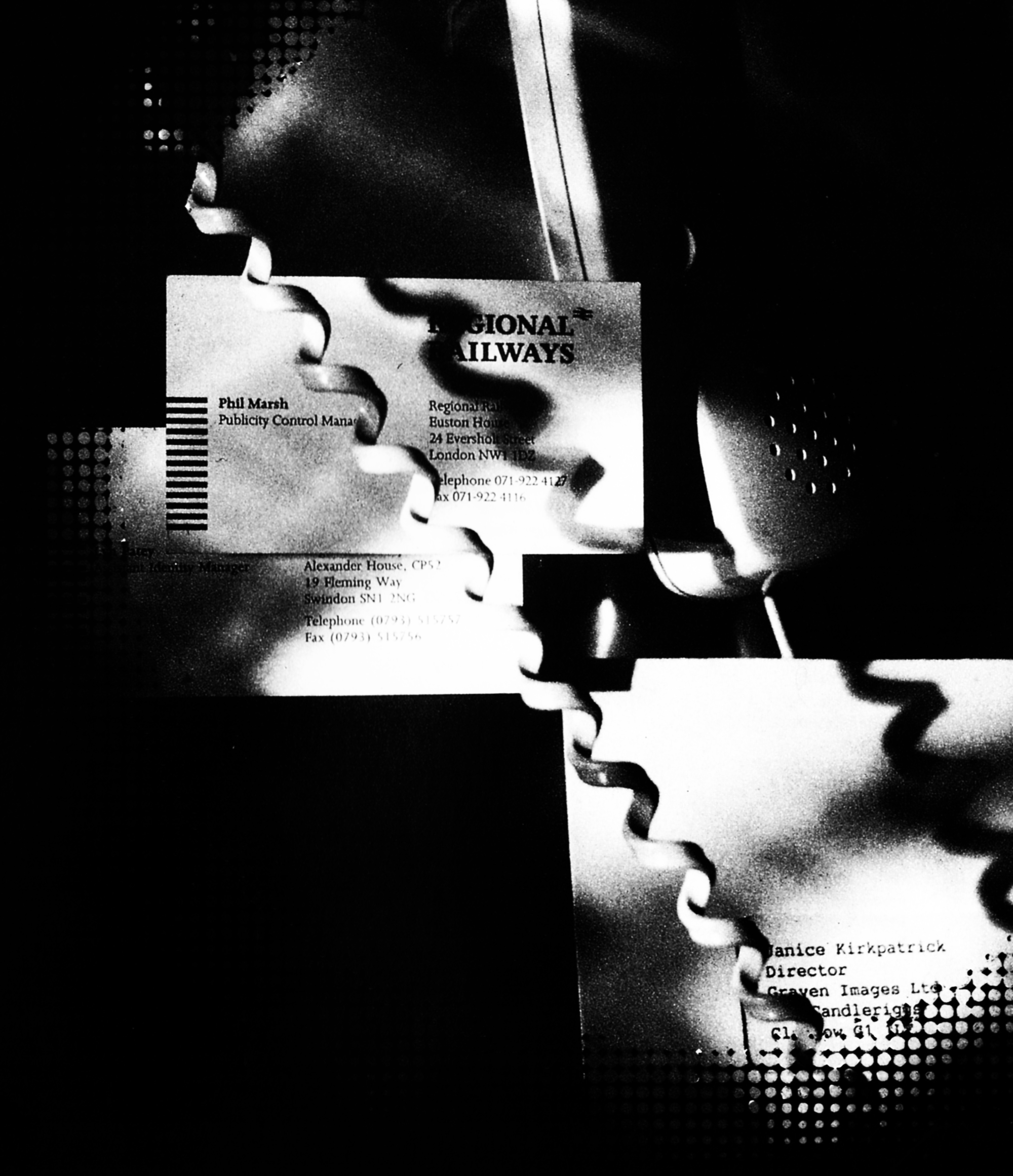
Headquarters and North West contacts

Headquarters and North West contacts
General policy
Identity policy arbiter and approval in principle for application of major sponsorship acknowledgment
Paul King
Director, Planning & Marketing
Meridian
Birmingham
Telephone 054 7041
Fax 054 7469
Design Strategy
Daryl Wright
Design Manager
Meridian
Birmingham
Telephone 054 7050
Fax 054 7469
Identity Strategy
Gill Greatorex
Identity Manager
Western House, CPI 58
Swindon
Telephone 077 3757
Fax 077 3276
Louise Harvey
Marketing Communications Manager, North West
Room 611, Rail House
Manchester
Telephone 058 4060
Fax 058 4703
Design elements
To obtain prints of artwork
Alison Rushton
Advertising Manager, North West
Room 611, Rail House
Manchester
Telephone 058 4060
Fax 058 4703
Rolling stock
Interiors for refurbishments, design for new builds and standard frames
Daryl Wright
Design Manager
Meridian
Birmingham
Telephone 054 7050
Fax 054 7469
Application of livery
Gill Greatorex
Identity Manager
Western House, CPI 58
Swindon
Telephone 077 3757
Fax 077 3276
Supply of painting and lettering diagrams
Nigel Rouse
Business Support
Room 230, Trent House
Railway Technical Centre
Derby
Telephone 056 3376
Fax 056 6960
Livery paint samples
John Harrower
Scientific Services
Coatings, Polymers & Corrosion Unit
Hartley House
Derby
Telephone 056 2135
Fax 056 6720
To obtain signs and notices
Bob Casselden
Rolling Stock Manager, North West
Room 611, Rail House
Manchester
Telephone 058 4461
Fax 058 4703
Environment
Information structures and leaflet racks
Phil Marsh
Publicity Control Manager
Meridian
Birmingham
Telephone 054 7202
Fax 054 7469
To obtain station furniture and advice on colour palette
Richard Home
Architect, North West
Room 618, Rail House
Manchester
Telephone 058 4628
Fax 058 5593
To authorise the use of sponsorship plaques
Paul Bunting
Marketing Manager, North West
Room 602, Rail House
Manchester
Telephone 058 4167
Fax 058 4703
Signing
General policy and to order station signing
Simon Pitcher
Retail & Customer Services Strategy Manager, North West
Room 611, Rail House
Manchester
Telephone 058 4563
Fax 058 4703
Communication
To obtain print
Alison Rushton
Advertising Manager, North West
Room 611, Rail House
Manchester
Telephone 058 4543
Fax 058 4703
Control of poster distribution
David Leon
Promotions & PR Manager, North West
Room 611, Rail House
Manchester
Telephone
058 4525
Fax 058 4703
Technical advice for the computerised production of timetables
Andy Booth
Support Assistant
Business Systems and Services
Room 211, West Offices
York
Telephone 037 3772
Fax 037 2901
Production of maps
Ian Pringle
Senior Advertising Manager
Room G9, Euston House
London
Telephone 00 26505
Fax 00 26523
Stationery
Advice on stationery format and to obtain document covers and folders
Alison Rushton
Advertising Manager, North West
Room 611, Rail House
Manchester
Telephone 058 4543
Fax 058 4703
To obtain stationery order forms
Michelle Collier
Secretary to Marketing & Planning department
Room 605, Rail House
Manchester
Telephone 058 4167
Fax 058 4703
To obtain a copy of the stationery contract
Sandra Taylor
Purchasing Manager, Paper & Print
Director of Procurement
Room 9, Derwent House
Derby
Telephone 056 6731
Fax 056 6841
Printer on contract
Willsons Printer (Newark) Ltd
Highlander House
Cross Street
Newark NG24 1PP
Telephone 0636 702334
Fax 0636 701396
Continuous stationery
J McVicar Printers
97 Dykehead Street
Queenslie Industrial Estate
Glasgow G33 4AQ
Telephone 041 774 5132
Fax 041 744 4440
Design & Identity Working Group on Rolling Stock
Daryl Wright
Design Manager
Telephone 054 7050
Gill Greatorex
Identity Manager
Telephone 077 3757
Tom Clift
Resources Planning Manager
Telephone 054 7045
Tony Butler
Development & Projects Engineer
Telephone 056 6461
Mark Livock
Product Manager
Telephone 054 7203
Bob Casselden
Rolling Stock Manager, North West
Telephone 058 4461
Rob Hurst
Rolling Stock Manager, Central
Telephone 050 3734
Ian Walmsley
Project Engineer, Pacer Fleet
Telephone 056 3053
Alastair Matheson
Planning Manager PSO, ScotRail
Telephone 045 3664
Identity Working Group on Stations
Julian Wormleighton
Architect, Central
Telephone 050 3774
Andy Shingler
Property & Retail Specification Manager, Central
Telephone 050 3775
Simon Pitcher
Retail & Customer Services Strategy Manager, North West
Telephone 058 4563
David Mather
Manager, West of England, South Wales & West
Telephone 077 3371
Mark Livock
Product Manager
Telephone 054 7203
John Lacy
Terminals Manager,
Telephone 054 7201
Trevor Scott
Architect, ScotRail
Telephone 045 3265
Dennis Kidd
Terminals & Standards Manager, North East
Telephone 037 3137
Gill Greatorex
Identity Manager
Telephone 077 3757
Daryl Wright
Design Manager
Telephone 054 7050
Identity Working Group on Print
Ian Pringle
Senior Advertising Manager
Telephone 00 26493
Gill Greatorex
Identity Manager
Telephone 077 3757
John Newman
Senior Advertising Executive
Telephone 00 26496
Richard Illingworth
Senior Creative Manager
Telephone 00 26507
Ken Bray
Advertising Executive, North East
Telephone 037 3312
Alison Rushton
Advertising Manager, North West
Telephone 058 4543
Mark Livock
Product Manager
Telephone 054 7203
Bill Macfarlane
Print Manager, ScotRail
Telephone 045 3220
Peter Sutherland
Marketing Communications Manager, South Wales & West
Telephone 077 3645
Brian Blackwell
Advertising Manager, Central
Telephone 050 4310
Nicky Forsdike
Promotions Planning Manager,
North East
Telephone 037 2387
Daryl Wright
Design Manager
Telephone 054 7050
Lyn Patey
Assistant Identity Manager
Telephone 077 3757
